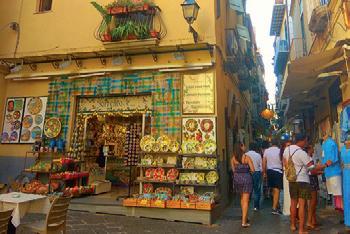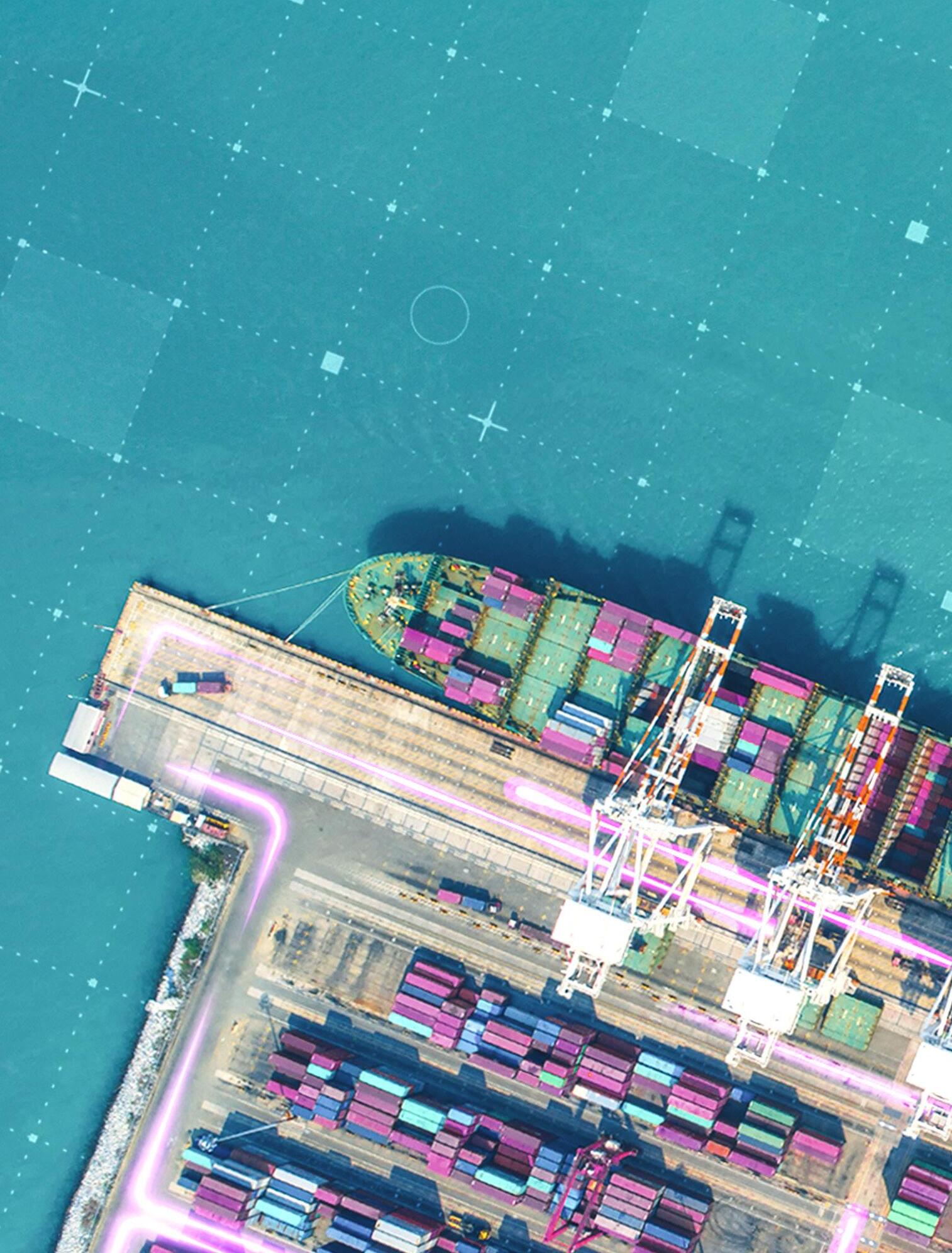
bimonthly-daily companion


bimonthly-daily companion
The free fuel.
Wind propulsion for shipping decarbonisation
Governmental aid, port capacity, and grid-building needed beneath wind energy’s wings
Transforming maritime hygiene
Situational awareness in the digital navigation era
The Port of HaminaKotka is a multipurpose seaport serving trade and industry. This major Finnish port is an important hub in Europe and in the Baltic Sea region.
Welcome to the Port of HaminaKotka!


The atmosphere became so dense, one began having the feeling that the fate of the entire universe was at stake. What followed was a bit of a tragicomedy, though. Reactions ebbed and flowed – “weak,” “another significant step,” “blocked progress,” “regrets,” “hopefully […] a historic moment,” “insufficient,” and so on (if you don’t know what the other person is talking about, it’s most likely about themselves – their hopes & fears, not necessarily the topic at hand). The new IMO climate deal for shipping is done & dusted – but it isn’t signed & sealed. The ‘newborn’ will also have to live –if it survives ratification, that is – with a stigma of the Trump-Musk cabinet dumping on it its fossil-fuel love letter. Yup, the 83 rd gathering of the Marine Environmental Protection Committee was – for want of a better word – loud. Media outlets and the more LinkedInoutgoing academia scrambled (oh, the typos & brachylogies!) pre- & post- the meeting to first convey the importance of April 2025 (#fomo) and, then to wrap their – and our – heads around what actually happened, what’s that thing on the table, and what shipping – and countries hoping for a just and equitable transition – can do with it. If somebody had (high) hopes for a repeat of the Montreal Protocol, well, wakey-wakey, it’s 2025! Science & global/partisan politics aren’t exactly in the same corner of the boxing ring (and one of them has a flamethrower…). Better don’t look up (anybody remembers that prophetic movie?). As the ancient wisdom of cunctation goes: we’ll see.
In the meantime, you can already see that the spring issue is yet again full to the brim with top-notch articles. Alike MEPC 83, it’s a mix but of goodies only! Reads on port strategies to overcome modernisation challenges likewise the use of high-frequency data to beat shipping’s biggest difficulties, onboard carbon capture, the importance of soft skills in maritime, overview of the recent wind energy market developments in Europe (more port capacity needed, pronto!) as well as why wind should be viewed as the free fuel for shipping, situational awareness in the digital navigation era, preparations for implementing the S-100 standard in sea navigation, using simulation (including Europe’s very first XR Full Mission Bridge Simulator) to future-strengthen port & shipping workforces. Lastly, but crucially important, how to combat black mold (and other nasty stuff) on board vessels.
And with that, I wish you a breath of fresh air ahead of the next ‘mackerel breeze’ that hits the fan in the transport & logistics industry. Stay sharp!
Przemysław Myszka

Publisher
BALTIC PRESS SP. Z O.O.
Address: Aleja Zwycięstwa 96/98 81-451 Gdynia, Poland office@baltictransportjournal.com
www.baltictransportjournal.com www.europeantransportmaps.com
President of the Board BOGDAN OŁDAKOWSKI
Managing Director
PRZEMYSŁAW OPŁOCKI
Editor-in-Chief
PRZEMYSŁAW MYSZKA przemek@baltictransportjournal.com
Roving Editor MAREK BŁUŚ marek@baltictransportjournal.com
Proofreading Editor EWA KOCHAŃSKA
Contributing Writers
JOHNNY ANDERSON, SARAH BANKS, JOHN COOPER, HAMID DAIYAN, PRASANNA ELLANTI, MONA ELO, STEVEN GOSLING, ALEXA IVY, CASPER JENSEN, STELIOS KOUKOUVIOS, HARI SUNDAR MAHADEVAN, FITZWILLIAM SCOTT, GWILYM STONE, MARLENE SVEGREUS, MANO SZOLLOSI, DEVON VAN DE KLETERSTEEG, ANTTI VÄRRE
Art Director/DTP DANUTA SAWICKA
Head of Marketing & Sales PRZEMYSŁAW OPŁOCKI po@baltictransportjournal.com
If you wish to share your feedback or have information for us, do not hesitate to contact us at: editorial@baltictransportjournal.com
Contact us: PRZEMYSŁAW OPŁOCKI tel.: +48 603 520 020





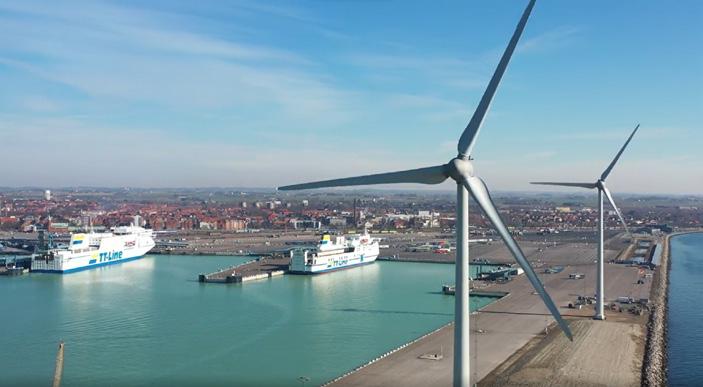


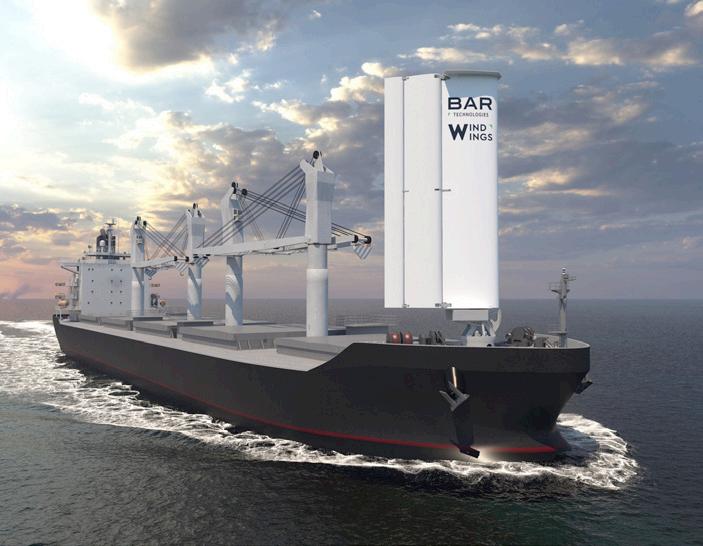
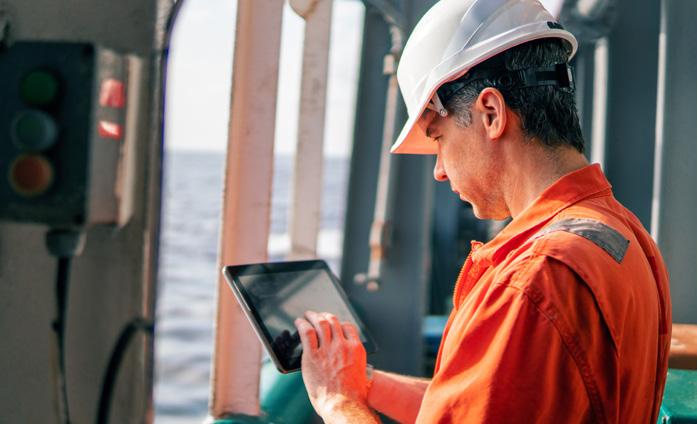

From May 2025

Unitized cargo loads will be shipped directly from the port of Kaskinen to Travemünde and onwards to Central Europe and England, and back.
Inquiries:
Shipping Company: Wallenius SOL Ab Petri Nikupeteri
Commercial Manager Nordics Mobile: +358 40 921 8191
Operator: +46 31 354 4050 info@wallenius-sol.com
The transport units are trailers, cassettes, and containers. Oy Kaskisten satama – Kaskö Hamn Ab
Stevedoring: BB Logistics +358 44 978 2507 henri.korpela@bblogistics.fi
https://kaskistensatama.fi

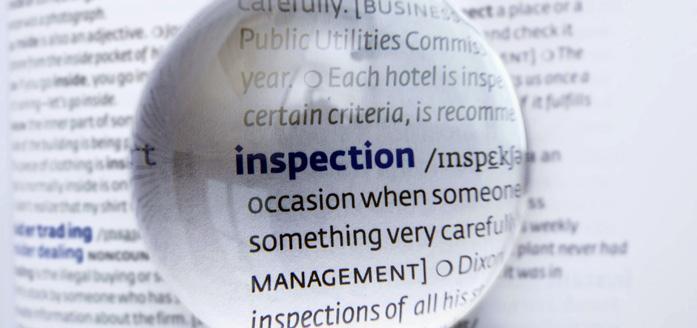

32 Esbjerg grows – in size, depth & through partnerships by Fitzwilliam Scott
34 Development grounded in practice
– Toward the S-100 standard in sea navigation – in the Baltic & beyond by Mona Elo, Marlene Svegreus, and Antti Värre
36 Strong network anchors
– Three strategies for maritime ports to overcome modernization challenges and enhance global trade by Sarah Banks, Prasanna Ellanti, and Johnny Anderson
38 Linking ship to shore
–
The maritime industry’s first front-line intelligence platform that enables crew and shore teams to easily pre-plan for PSC inspections in a collaborative fashion by Alexa Ivy
40 Latest report from Maritime Technologies Forum (MTF) spotlights safe adoption of onboard carbon capture in the maritime industry by Hamid Daiyan and Gwilym Stone
42 When soft means strong
– The benefits of respectful relationships, kind leadership, and mentoring in maritime by Steven Gosling

48 Baltic ports for climate by


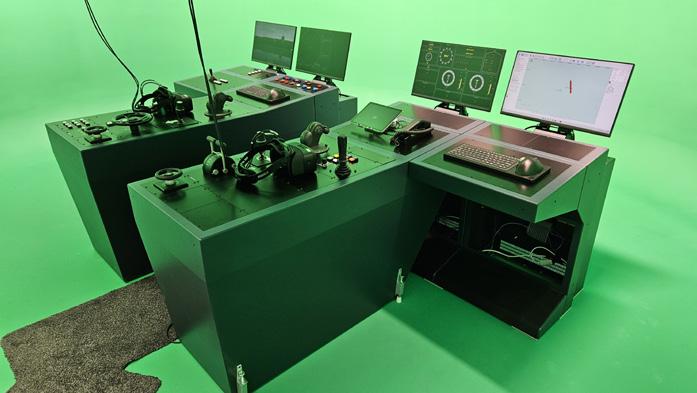
50 Can’t see the sea for all the digitalization?
– Situational awareness in the digital navigation era by Hari Sundar Mahadevan
52 Anchored in trust
– How to strengthen the port workforce by Devon Van de Kletersteeg
54 To succeed & flourish
– Celebrating a decade of innovation with PortXL by Mano Szollosi
56 New levels of realism
– The ins & outs of Europe’s very first XR Full Mission Bridge Simulator by Stelios Koukouvios
58 Transforming maritime hygiene
– The VIKAND-Pyure innovative air and surface purification system by Fitzwilliam Scott


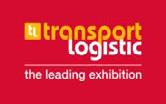


ESPO Conference , 8-9/05/25, GR/Thessaloniki, espo.be/events
The next annual meeting of the European seaport industry will take place in Thessaloniki on 8-9 May 2025. We are looking forward to seeing you – as well as some 200 other port professionals – there!
transport logistic 2025, 2-5/06/25, DE/Munich, transportlogistic.de/en
As the world’s leading trade fair for logistics, mobility, IT, and supply chain management, transport logistic in Munich brings together the entire industry. Decision-makers, experts, and innovators gather here to discuss the latest trends and developments and explore business opportunities. Join us and take advantage of this unique platform to propel your company forward and become part of the future of logistics.
Nor-Shipping , 2-6/06-25, NO/Oslo, nor-shipping.com
The only constant is change. In a rapidly evolving maritime and ocean industry, how can we work to find the strategies, solutions and partners to mitigate risk, maximise opportunity and meet ambitious climate goals? Understanding is key, collaboration is critical. Nor-Shipping 2025 will gather industry leaders from across the world to debate pathways, share knowledge, showcase innovation, and help build the relationships necessary to navigate towards a future of sustainable success.
TOC Europe 2025, 17-19/06/25, NL/Rotterdam, tocevents-europe.com
With an unrivalled 40+ year heritage, TOC Europe is the place to learn from and network with the world’s leading port decision-makers, policy experts, solution-providers and more, enabling you to both supercharge your strategies and make your port operation visions a reality. Whether your focus is on adapting to the unpredictable economic climate or simply embracing the exciting new technologies revolutionising the sector, join us on the road towards growth at the essential container supply chain event. The meeting place where business comes to life!
Baltic Ports Conference 2025, 6-8/10/25, PL/Gdańsk, balticportsconference.com
After a very successful and well-attended Baltic Ports Conference (BPC) in Klaipėda, the Baltic Ports Organization (BPO) already welcomes you to the 2025 edition to be held in Gdańsk on 6-8 October 2025 under the auspices of the Port of Gdańsk. As always, BPO’s BPC will touch on the most topical issues facing the port and shipping businesses in the Baltic and beyond. Stay tuned for more info before long!
Offshore Energy Exhibition & Conference (OEEC), 25-26/11/25, NL/Amsterdam, oeec.biz

OEEC is a leading international event in the offshore energy industry held each year in Amsterdam that serves as an essential gathering point for professionals, experts, and companies active in the offshore energy sector and beyond. Covering a diverse spectrum, which includes offshore wind, hydrogen, oil & gas and marine energy, OEEC offers a platform for these industry stakeholders to come together, ignite innovation, and shape the future of the energy transition.

Port of Turku offers fast and frequent connections to Scandinavia and Central Europe, with sufficient capacity and a diverse fleet for all kinds of sea transport.
Regular liner services provide a shortcut for freight traffic to European markets and, through ocean lines, to more distant countries. These ensure flexibility in transport schedules, offering competitive and cost-effective solutions for import and export transportation for trade and industry.
In addition to unitised cargo, the port has expertise in handling project cargo that requires special attention. The transit time for cargo is short, allowing vehicles bringing and picking up cargo to get back on the road quickly.
www.portofturku.fi

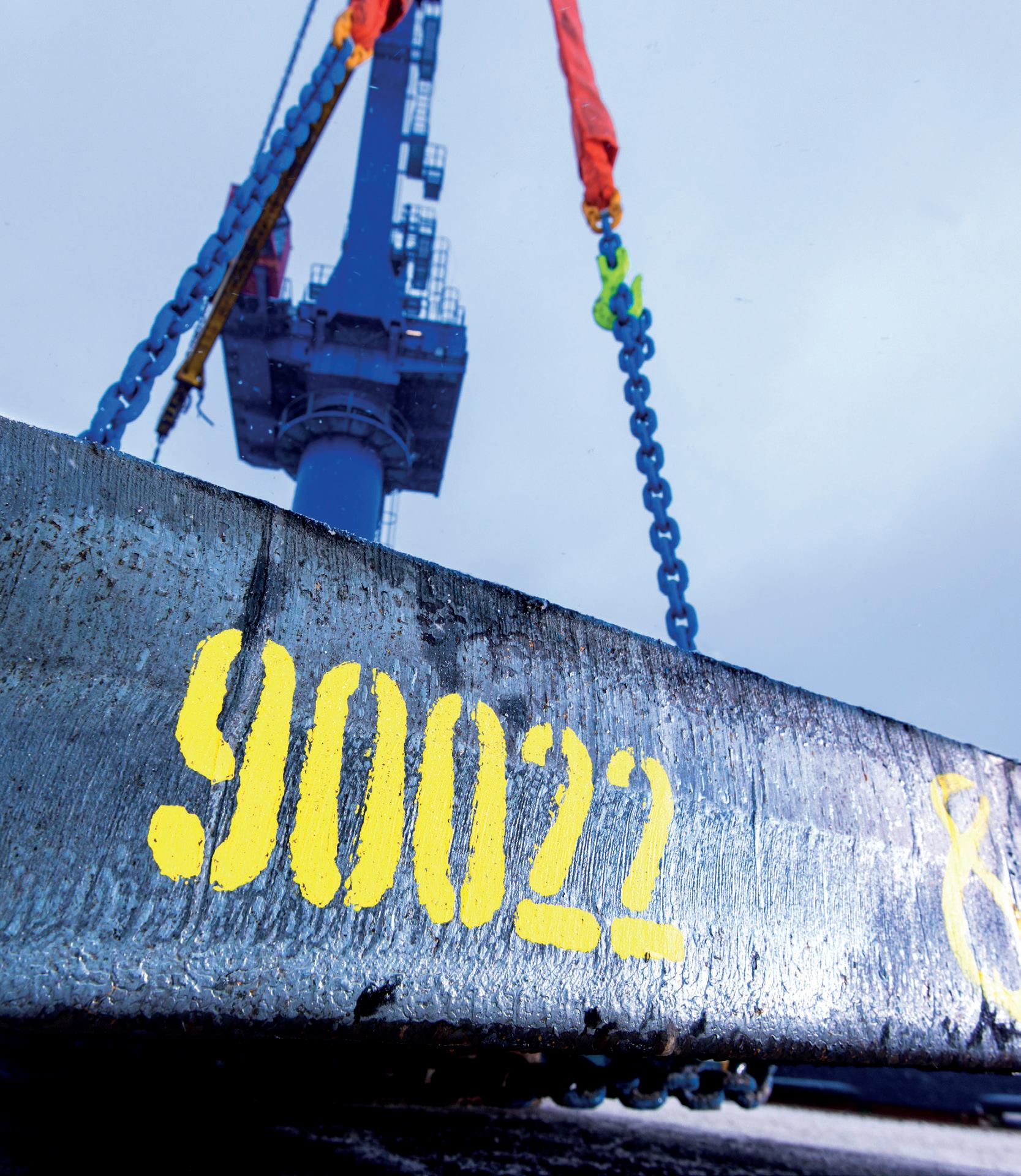
The role of ports is changing. And at the Port of Oxelösund, we aim to be first in line. Today, we talk about ports as transport nodes but also future energy nodes. It’s a role that suits us well. We have a well-developed collaboration with many different industries regarding sustainable energy. One example is our contribution to the transition to Swedish fossil-free steel production. Our investment in a natural gas terminal in the port is a prerequisite for its success, but through that investment, we will also be able to deliver sustainable energy to both shipping and other industries.
The Port of Oxelösund is more than a port. We are a business partner who solves your logistical challenges and helps optimize your goods’ journey, from start to finish. Our goal is to be the Baltic’s leading port terminal, with Europe’s best stevedoring services.

BIMCO, ICS , IMCA , INTERCARGO, INTERTANKO, and OCIMF –further supported by over 40 maritime stakeholders – published the latest version of the Best Management Practices (BMP) for Maritime Security (MS), an interactive online guidance to help all vessels plan voyages and to detect, avoid, deter, delay, and report attacks and incidents wherever they occur. This BMP MS consolidates previously published regional publications into a single, comprehensive source with actionable insights and advice. It focuses on providing a threat and risk management process and, recognising the dynamic nature of regional security situations, provides signposts to direct users to the most up-to-date security intelligence and risk assessment information. Additionally, the publication includes
various diagrams that provide valuable learning opportunities; it also details global authorities and lists appropriate contacts & tools for seafarer welfare support. “2024 saw an unprecedented spike in attacks against merchant ships. Ships were attacked with weapons of war in the Black Sea and in the Southern Red Sea more than one hundred times, and four innocent seafarers lost their lives. Globally, 126 seafarers were held hostage during pirate attacks and armed robberies, and 12 seafarers were kidnapped. BMP MS will reduce risks and save lives. While we cannot control how the threats will develop in 2025 and beyond, we can make sure that we have the best tools available to help protect our seafarers and world trade,” commented David Loosley, BIMCO’s Secretary General & CEO.
InterManager, The Nautical Institute , and IMarEST have partnered to gather up-to-date information on the risks faced by workers in enclosed spaces on ships. “Together [we] have launched an industry-wide survey which aims to collate feedback from those working on ships to delve deeper into what’s going wrong and understand better what solutions are needed,” the parties said in a press release. The detailed online survey, which can be completed anonymously, asks seafarers to identify what aspects of enclosed space entry present risks for them and how involved in safety procedures they have been. Captain Kuba Szymański , Secretary General of InterManager, shared, “Since 1998, InterManager has been collating statistics on behalf of the whole shipping industry and sharing them with partners and the International
Maritime Organization. Sadly, from this information, we can see that workers are still dying in enclosed spaces on board ships despite numerous industry interventions.” The statistics show that most enclosed-space accidents involve senior ranks or stevedores, and the highest percentage of incidents occur on bulk carriers (41%) and tankers (23%). The most frequent locations for life-threatening incidents or deaths are the hold and hold access areas (51%), with cargo oil tanks also presenting a significant risk (18%). Szymański added, “We have been discussing enclosed space safety at the highest levels for many years now and yet, despite the shipping industry producing a wealth of rules, procedures, guidelines, leaflets, etc., people are still dying in these confined spaces on ships. Please have your say on what needs to be done.”
TT Club is warning cargo handling and terminal operators that fire remains a major cause of damage and loss to port and terminal equipment. The insurance specialist’s analysis of a 10-year claims history shows that of the nearly 1,600 fire-related claims it has received over that period, some 19% have involved this equipment. “Fire risk not only poses a significant concern in terms of insured losses and obvious operational disruption, but it also presents a real and significant risk to the safety of the workforce, facility visitors/users, and indeed the general public. As a result, we strongly advise that fire detection
and suppression systems in port equipment are considered by operators as critical safety measures,” cautions Neil Dalus, Risk Assessment Manager at TT Club. As such, his organisation commends the white paper published by the Port Equipment Manufacturing Association titled Fire Detection and Suppression Systems for Mobile Port Equipment “The paper is comprehensive in its coverage of fire safety measures and particularly emphasises the importance of regular maintenance, collaborative risk assessments, adherence to industry standards, and, of course, mandatory regulations,” highlights TT Club.
The World Shipping Council (WSC) reported that in response to a series of devastating fires caused by improperly handled charcoal, shippers should be ready to see carriers phase in new tighter regulations this year. These will require all charcoal shipments to be declared as dangerous goods under the International Maritime Dangerous Goods Code . There are also new treatment, packing, and stowage requirements for shipments of charcoal. “We are eager to see the new regulations implemented as the status quo hasn’t
been adequate at keeping crew, cargo, and vessels safe,” shared Joe Kramek , WSC’s President and CEO. He furthered, “Treating all charcoal as dangerous goods ensures uniform safety standards and gives everyone involved – from shippers to carriers – the tools and clarity needed to prevent future tragedies.” With the help of the International Group of P& I Clubs and TT Club, WSC created a reference guide to ensure shippers are well-informed about the changes.
Baltic Exchange and Veson Nautical released the revamped standard designed to help owners and charterers share common data requirements to speed up the vetting process when a dry bulk carrier is put up for hire, facilitate faster trades, and ensure smarter pre-fixture decision-making. Importantly, “This latest revision includes several key developments linked to important emissions-related data and enhanced safety requirements to ensure charterers are hiring the right vessel for their needs and expedite the vessel acceptance process,” underscored Janet Sykes , Chief Commercial Officer at Baltic Exchange.


The Port of HaminaKotka:
3.66 million tonneshandled in international traffic in Q1 2025 (+26.7% yoy)
Exports advanced by 36.3% year-over-year to 2.66mt, imports rose by 6.6% yoy to 998.2kt, while coastal traffic was up by 125% yoy to 6.8kt. Container traffic increased as well, by 37.5% yoy to 174,009 TEUs.

Wasaline:
21,250 ro-ro cargo units carried in 2024 (+1.7% yoy)
On the other hand, the Finnish-Swedish ferry line that connects the ports of Vaasa and Umeå served fewer passengers last year, down 9.4% yearover-year to 253,218 travellers altogether. Also, Wasaline’s ferry Aurora Botnia transported fewer pax vehicles: -7% yoy to 59,183.
The Port of Helsinki:
3.47 million tonnes handled in Q1 2025 (+8.2% yoy)
Unitised freight traffic, Helsinki’s prime trade, totted up to almost 3.03mt, up 9.0% year-over-year. Here, wheeled (ro-ro & ferry) cargo accounted for nearly 2.09mt (+0.8% yoy), while containerised freight – for 943.6kt (+33.4% yoy). Counted in units, Helsinki handled 156,570 ro-ro cargo units (-2.4% yoy) and 122,059 TEUs (+31% yoy). The Finnish seaport also took care of 257.6kt of dry bulk (-19.6% yoy) and 160.4kt of break-bulk (+69.6% yoy). Of the total, international trade amounted to 3.38mt (+8.1% yoy), while coastal traffic added the remaining 93.1kt (+12.2% yoy). Helsinki’s ferry passenger traffic noted a drop vs Q1 2024, down 3.6% yoy to just over 1.63m travellers. The services to/from Tallinn served almost 1.32m people (-3.9% yoy), Stockholm – 283.7k (-1.0% yoy), Travemünde – 29.3k (-15.2% yoy), Mariehamn – 5.2k (+3.2% yoy). There were also 12 passengers classified as ‘others’ (vs 79 last year). The Port of Helsinki also welcomed one cruise ship call in Q1 2025, with 129 passengers.
Eckerö:
189,656 ro-ro cargo units carried in 2024 (+7.5% yoy)
The company’s ferries also served 3,121,470 passengers, down 0.6% on the 2023 result.
The Port of Hirtshals: 1.76 million tonnes handled in 2024 (+5.3% yoy)
The Danish seaport saw 128 thousand ro-ro cargo units passing its quays, up 1.6% on the result from 2023. Passenger business also advanced: over 2.26 million ferry travellers were served (+3.7% year-over-year), plus the ferries calling Hirtshals transported 742 thousand private vehicles (+2.9% yoy).

Tonnage-wise, the Estonian seaport’s containerised freight traffic amounted to 507 thousand tonnes, up 0.3% on the January-March 2024 result. Overall, the Port of Tallinn took care of 3.34mt in the reported period (-0.7% year-on-year), also including 1.59mt of wheeled (ro-ro & ferry) cargo (-4.5% yoy), 565kt of dry bulk (-21.6% yoy), 559kt of liquid bulk (+66.2% yoy), 115kt of break-bulk (-12.7% yoy), and 4.0kt of goods classified as ‘non-marine’ (-2.0% yoy). Tallinn’s international ferry traffic was down 3.6% yoy to just over 1.41 million travellers, of which the Helsinki service accounted for nearly 1.28m (-3.1% yoy), Stockholm – 90k (-9.1% yoy), the Muuga-Vuosaari crossing – 40k (-1.3% yoy), and passengers labelled as ‘other’ – the remaining 7.0k (-21.9% yoy). TS Laevad, the Port of Tallinn’s domestic ferry subsidiary, served 365k passengers (-2.1% yoy) and transported 195k vehicles (+2.1% yoy).
468,346 ro-ro cargo units handled in 2024 (+1.7% yoy)
The Polish seaports also welcomed 981,113 passengers (-5.7% yoy), of which ferries brought 980,501 (-5.8% year-on-year) while 612 were cruise travellers (vs 471 in 2023); there were also 249,180 private vehicles handled in ferry traffic (-4.9% yoy). In total, 32.36 million tonnes went through the quays of Szczecin-Świnoujście, down 8.4% yoy. General cargo (excluding timber) totted up to 15.89mt (+/-0% yoy), followed by 8.02mt of liquid bulk (-6.4% yoy), 3.58mt of other dry bulk goods (-10.4% yoy), 2.05mt of grains (-22.1% yoy), 1.53mt of coal & coke (-48.1% yoy), 874.6kt of ore (-23% yoy), and 429.6kt of timber (+136% yoy). Container traffic advanced by 12.2% over 2023’s result, amounting to 75,856 TEUs.

782 thousand ro-ro cargo units carried in 2024 (+10.1% yoy)
The company also served more passengers (private & commercial), up 34.7% year-on-year to 936 thousand travellers. On the other hand, Finnlines’ fleet transported fewer vehicles, down 45.5% yoy to 85 thousand units (excluding passenger cars), as well as nonunitised freight, a drop of 8.2% yoy to 1,234 thousand tonnes.
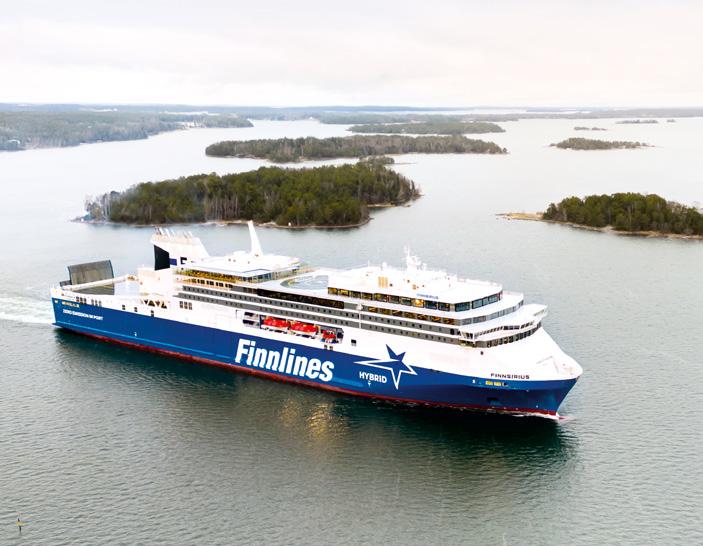
532 thousand cruise travellers served during the first year of operations
The JV of Gotland Company and Viking Line celebrated its first anniversary on 20 March 2025. “Our full attention continues to go to creating Sweden’s premier cruise experience. It is about delivering tasty food, entertainment, shopping, and relaxation tailored to the Swedish people every day. Ahead of May-June, we already have 30% more trips booked than the corresponding time last year, so the start of the summer high season looks very promising,” commented Kenneth Gustavsson, CEO, Gotland Alandia Cruises. From April 2024 to March 2025, Birka Gotland made 623 port calls, chiefly in traffic between Stockholm, the Åland Islands and Visby, but also sailing to Ystad, Bornholm and Riga.




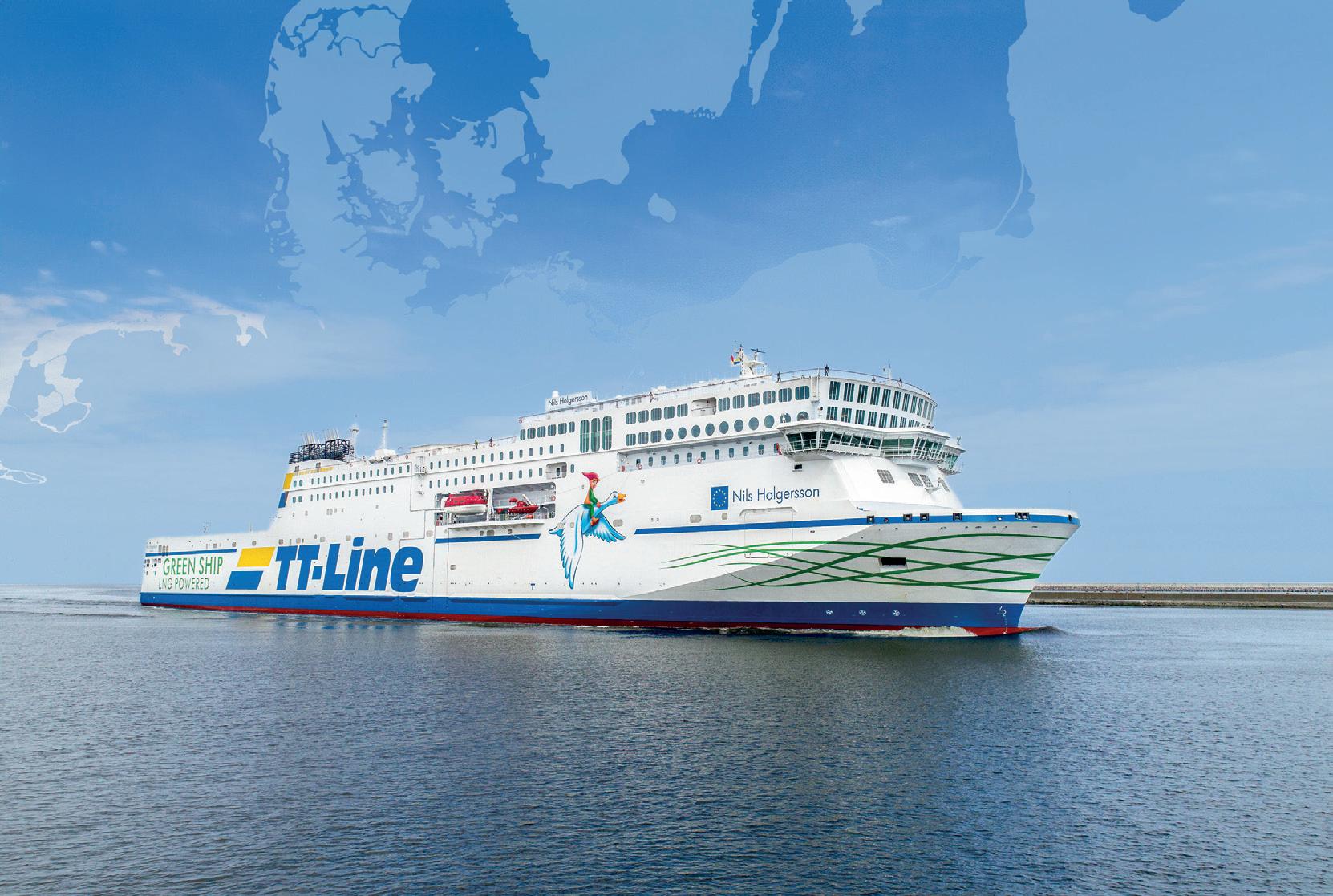




The latest handing was expanded and variety of projects and products meant to reduce accidents and damaging losses, with winners & highly recommended entrants in four categories. “Over the past 10 years since its inception, the ICHCAhosted TT Club Innovation in Safety Award has seen entries marked by a significantly increased diversity of innovative products, services, and processes aimed at improving safety in the cargo handling industry,” the International Cargo Handling Coordination Association (ICHCA) and TT Club said in a press brief. Voxel won the ‘Turning data into insight’ category for its artificial intelligence (AI)-powered worksite visibility platform, with Pandora Intelligence honoured for its Cargo Intelligence: data-driven risk assessment of shipments. International Transport Workers’ Federation (ITF) and ITF Seafarers’ Trust came first in the ‘Learning and engagement’ competition for its international app-based worker training programme. Port Skills and Safety was highly recommended for its Emergency Flash Cards. ‘Making opera tions safer’ saw RAM Spreaders winning for the company’s automatic pipe handling spreader, with CEPA recognised for its ergonomic lash ing tool. Permanent bollard with sensors won Straatman Mooring Systems the ‘Segregating people and machine’ category, with SSA Marine’s AI-driven RTG camera system acclaiming “As ever, the judging panel felt that all the original ideas were worthy of congratulations and further exposure. Such diversity of entries is truly welcomed. Safety innovation is an exciting element that comple ments wide-ranging industry work to establish throughout organisations. A well-run, safety-conscious operation is both efficient and sustainable. Running organisations successfully and doing safety well require truly visible and effective commitment from management at all levels,” highlighted Richard Steele, ICHCA’s CEO. Mike Yarwood, Managing Director, Loss Prevention at TT Club, added, “The excellence of these, and many of the other innovations put forward, deserve a greater degree of visibility. This is our prime aim in proliferating the Awards in order to encourage our innova tors to seek scalability and by giving their ideas oxygen to stimulate their adoption and adaption by others within the global cargo han dling environment.” ICHCA and TT Club have also published the Innovation in Safety Award Digest , detailing all entries

The Finnish Langh Ship has received the first in a series of three 1,200-TEU feeders from PaxOcean Zhoushan, to be chartered by Borchard Lines. Ingrid, designed by Langh Ship in co-op with the Shanghai Merchant Ship Design & Research Institute, is optimised for carrying 45-foot containers both in the holds and on deck. “An innovative and unique feature of Langh Ship’s new feeder vessel is the hatch covers […] opened in three sections on the width of the vessel, which gives better accessibility to the cargo holds, even if the entire bay on deck is not discharged. This is a novum on container feeders. In addition, the cargo holds are fitted with cell guides, which can be adjusted in sections between 40’ and 45’ container positions, which further increases the flexibility of the vessel’s cargo areas,” Langh Ship highlighted in a press brief. The feeder also features several solutions from Langh Tech, including a hybrid scrubber that’s prepared for installing the company’s onboard carbon capture (OCC) system that can reduce the ship’s CO2 emissions by 25-50% (at the same time binding the captured material into resealable sodium carbonate). The OCC can also be used while running on biofuels. Ingrid also has Langh Tech’s ballast water management system and space reserved for batteries, a new area explored by the company.



In an investment worth PLN127 million (around €30.3m), the port authority has contracted Budimex to overhaul the Węglowe (Coal) Quay located in the Górniczy (Mining) Basin, with works expected to be completed by end-2027. Currently, due to its poor technical condition, part of the quay in question is not used for ship service and cargo handling. The two-stage project will see the setup of a new 546-metre-long slab-structure quay, 252 metres in the first phase and 294 in the second, as well as dredging from 8.0 to 11.2 metres, all to handle 100,000 deadweight vessels of up to 10.6-metre-draught. Węglowe will also get reinforced concrete pavement, a rail track, crane rails, 1,000kN bollards, and fenders. The infrastructure will be fitted with a new water supply network, a rainwater drainage & purification system, and an electrical grid. The quay’s overhaul is part of the 85%-co-financed by Connecting Europe Facility ‘Improvement of the infrastructure of the Port of Gdańsk together with an analysis of the implementation of the OPS low-emission system for the sustainable development of the TEN-T network’ project, which includes reconstructing almost 2.0 km of quays in the Inner Port. As part of this package, the Rudowe III and Bytomskie quays are already undergoing modernisation, with the Wiślane Quay being next in line.

Port of Trelleborg has been granted roughly €40 million in EU grants between 2015-2024 for the expansion and relocation of the port. Port of Trelleborg is constantly working to develop the port and has parallel to infrastructure investments worked to apply for grants from the transport unit (TEN-T) in the EU for many years. Port of Trelleborg is currently engaged in five different major EU projects and has earlier received several applications approved, partly due to the fact that Port of Trelleborg is an important part of the European transport corridors and one of Sweden’s five designated core ports by the EU.
Port of Trelleborg is Scandinavia’s largest RoRo port for rolling traffic. The port is an important node for Sweden’s import and export, and thus has an important meaning and role for the climate transition of freight transports. Through the projects, the Port of Trelleborg can contribute to a better transport corridor and promote and streamline the infrastructure in the new port to be able to meet tomorrow’s traffic volumes in the best possible way. The combined focus of the activities also goes hand in hand with Port of Trelleborg’s long-term environmental work.
Ongoing infrastructure projects and activities:
Green FIT 2025 (2021-2025)
• Construction of ferry berths no 11 and 12

• A treatment plant for receiving the vessels’ wastewater

• Construction of two 120m wind turbines

• Track extension of the intermodal terminal

Digi MoS (2021-2025)
• Side ramp in ferry berth no 10
• Side ramp in ferry berth no 13


• Trailer parking
• Digital monitoring system and digitalization tool
Rail-IT (2023-2025)
• Completion of the eastern port area in the Port of Trelleborg, including asphalt, filling, installation of electricity, IT, telecom etc.


Ongoing studies and analysis:
REDII Ports (2022-2025)
• ”What does the fuel of the future look like?”
Blue Supply Chain (2023-2025)
• ”What do future capacity opportunities look like?”





The first blades got transported from the company’s factory to the 400 thousand square metre-yard, which the Port of Aalborg had been developing in its East Harbour since 2023. “The preparation has included bringing in huge amounts of sand and granite chippings – to ensure that the former farmland can withstand the load of the huge blades – as well as establishing new infrastructure and erecting fencing all around,” the Danish seaport underlined on its LinkedIn profile. The port’s CEO, Kristian Thulesen Dahl, added, “Siemens Gamesa’s commissioning of the blade site is further proof that the wind energy industry is growing rapidly in Aalborg. And we are both pleased and proud to see the result of several years of close collaboration with Siemens Gamesa, which is one of the companies driving growth here in the port area.”

The Swedish Maritime Administration (SMA) and the Ports of Stockholm have joined forces to establish the centre, seated at Värtahamnen, to enhance the efficiency as well as safety of cargo & passenger traffic from Oxelösund-northwards. The new centre, to be fully operational in 2026, will gather traffic & alarm management as well as navigation warnings. “A joint vessel traffic centre enables, among other things, early planning of vessel calls, which optimises fuel consumption and improves safety. Coordinated personnel [around 50 employees] will provide optimal 24-hour service, reduce lone working, and create new opportunities for efficiency from a sustainability perspective,” the parties highlighted in a press release. Erik Eklund, SMA’s Director General, added, “The cooperation between the Swedish Maritime Administration and the Ports of Stockholm is unique, and it is gratifying that we can now take this mutual step towards a joint maritime traffic centre. By coordinating resources and skills, we can offer better service and utilise economies of scale, which will benefit both business and society.” Sweden has got two other maritime traffic centres: in Malmö and Gothenburg.
The Port of Umeå has contracted NYAB to carry out the first phase of modernising the Swedish seaport, which will include setting up the Norra quay, demolishing an existing berth, dredging, putting in place a ro-ro ramp, and paving the yard. Works started in March 2025 and are expected to be completed by the autumn of 2026. The entire Nordporten project, to be checked off by 2030, also includes building a new energy jetty, expanding the Södra och Pirkajen quays, providing shore power, carrying out more dredging, and erecting a water supply facility for fire protection. “The Port of Umeå is important for the region’s industry. With the considerable investments in Northern Sweden, made by both established and new industrial players, forecasts speak of increased cargo traffic in Umeå’s port, while sea shipping finds itself at a transition crossroads. That and the fact that parts of the seaport have reached their technical lifespan. Several projects have already been completed, but there’s still plenty of work. With this in mind, we are developing the Port of Umeå to meet the future demands of logistics,” said Mikael Isaksson, CEO, the Port of Umeå.
Two liquefied natural gas (LNG) carriers, Józef Piłsudski and Ignacy Jan Paderewski, built by Hyundai Samho Heavy Industries, have joined the Polish energy company’s fleet. Each vessel, chartered for 10 years, is capable of transporting up to 70 thousand tonnes of LNG. According to Ireneusz Fąfara, President of the Management Board of ORLEN, the company’s LNG fleet will grow to eight ships by 2026. “The share of seaborne liquefied natural gas in Poland’s total gas imports has been steadily increasing. In 2024, LNG accounted for nearly half of all gas brought into the country, with the full volume of 70.22TWh imported by the ORLEN Group. The new LNG carriers will provide the company with greater flexibility in securing deliveries in the coming years,” ORLEN shared in a press release. The company also highlighted, “ORLEN also utilises capacity reserved at the FSRU terminal in Klaipėda [...], where it has so far [21 March 2025] received 11 cargoes, totalling nearly 740,000 tonnes of LNG. After regasification, the gas is transported to Poland via the Poland-Lithuania interconnector. A portion of the fuel is also supplied to Baltic markets.”
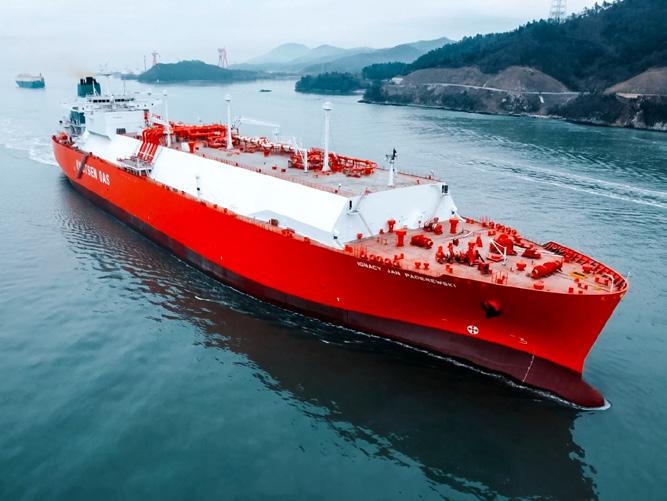
Ocean Winds, a 50/50 JV of EDP Renewables and ENGIE, has contracted the Polish CRIST Offshore to design, construct, and commission an offshore substation for the 500-megawatt BC-Wind project. CRIST will put together the 2,000-tonne-heavy substation at its shipyard in Gdynia, furnishing it with all the primary electrical equipment for Ocean Winds’ offshore wind energy (OWE) farm. Installation is planned for mid-2027. The BC-Wind OWE farm, Ocean Winds’ first in Poland, will be located 23 kilometres off the country’s northcentral coast. One of Cadeler’s O-class vessels is scheduled to erect the last turbine in 2028.

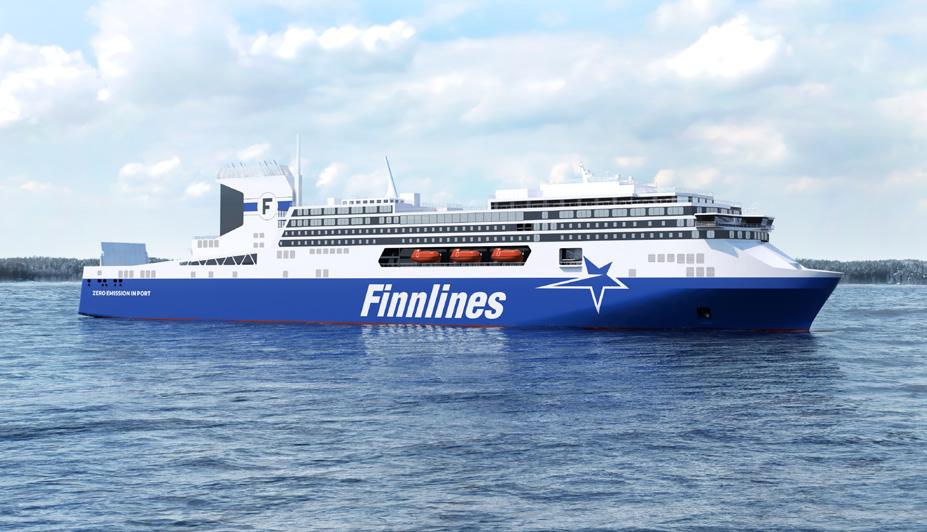
In a deal worth €1.3 billion, the Grimaldi Group has entrusted China Merchants Jinling Shipyard (Weihai) with delivering nine brand-new ferries, six of the Next Generation Med and three of the Hansa Superstar class. All are scheduled for delivery in 2028-30, with four flying the Italian flag and plying for Grimaldi Lines, two under the Greek flag and working for Minoan Lines, and the remaining three sailing under the Finnish flag for Finnlines between Helsinki and Travemünde. Equipped with engines capable of running on methanol, as well as with a suite of eco-solutions (among others, optimised hull & propeller designs, onboard power management systems, cold ironing connectors, siliconbased hull coatings), the carbon footprint of the new ro-paxes per transported cargo unit will be axed by at least half vs the vessels currently operating on the same routes, says the Grimaldi Group. The Hansa Superstars will be 240-metre-long and offer 5,100 lane metres for cargo and room for 1,100 passengers. “Facilities include five bars and restaurants, a spa with a wide range of services and treatments, including the iconic Finnish sauna, shops, and two children’s play areas designed for different age groups. One of the standout features is the main bar at the bow of deck 12, which will offer breathtaking views of the Baltic Sea during the crossing,” Finnlines highlighted in a press brief. The Next Generation Meds will be 229-metre-long, offering 3,300 lm and accommodation for up to 2,500 travellers (in cabins and on reclining seats).
The 364-metre-long MSC Rose, able to carry up to 15,294 TEUs, has inaugurated the new direct Asia-North Europe service of MSC, including calls to the Baltic ports of Gdańsk, Gdynia, and Klaipėda. In Gdańsk, MSC Rose test-berthed the under-construction T3 Terminal of Baltic Hub, while in Gdynia, the carrier called to the Baltic Container Terminal Gdynia and in the Lithuanian seaport, she visited the Klaipėdos Smeltė Container Terminal. Britannia’s westbound leg includes the ports of Shanghai, Ningbo, Yantian, Vung Tau, Felixstowe, Antwerp, and the three above mentioned Baltic ones. The eastbound journey starts in the Baltic and then goes via London Gateway, Le Havre, Colombo, Singapore, Shanghai, Ningbo, to end in Yantian.
The Swedish shipping line has welcomed back the 2,774 lane metres of carrying capacity ro-ro Tundraland from her charter for CLdN, plus invested in another container carrier (probably the 2008-built, 925-TEU Perseus J ). “With these two additional vessels in the northern network, we are upgrading the container service to weekly connections between the main container ports of Oulu, Kokkola, Antwerp, and Rotterdam, while the ro-ro service will expand with more frequency on the main trade lanes to Travemünde/Lübeck as well as to Zeebrugge,” WALLENIUS SOL shared in a LinkedIn post. At the same time, the company is working on incorporating the recently acquired Mann Lines. “By including the ports of Zeebrugge and Tilbury in the service, performed by the vessel ML Freyja [2,850 lm], we create an interlinked network offering even more connections and connectivity options. This service will continue to serve the ports of [Southern] Paldiski, Turku, Bremerhaven, and Cuxhaven,” WALLENIUS SOL said.
Bluebridge Cook Strait Ferries has acquired the ferry from Stena Line, which, as of August this year, will sail over the Cook Strait in New Zealand instead of between Liepāja and Travemünde. The 2008-built ro-pax, offering room for 800 passengers and 2,255 lane metres for vehicles, will join her sister ship Connemara, which has been working for Bluebridge Cook Strait Ferries since 2007. Before her departure, Stena Livia will get a new name plus visit a European shipyard for a revamp. Once in the Southern Hemisphere, she’ll replace Strait Feronia (in Bluebridge Cook Strait Ferries’ service since 1997).
The Danish shipping & logistics company will continue to provide its freighters for transporting military equipment and other commodities for military operations, as well as for training exercises, humanitarian disaster relief, and routine transports. The new deal with the Joint Movement and Transportation Organization, a transport unit of the Danish Defence, and the ARK Project, a strategic-access-to-sea-transport co-op between Denmark and Germany, extends the current contract and will run for up to six years starting in 2026. Eight ro-ros, six named and two unnamed, will be chartered and made available to the Danish Defence at short notice for the given period that the vessels will be needed. “The latter will be chosen based on the specific operational needs of the Danish Defence in the given context. The vessels are equipped with special features such as enhanced manoeuvrability, ability to load dangerous goods, and sufficient capacity for heavy vehicles,” DFDS shared in a press brief. The company’s CEO, Torben Carlsen, added, “We are honoured to have been selected for this critical assignment, and I am proud that we will continue our longstanding cooperation with the Danish Defence and the ARK project. It shows the value of strong publicprivate partnerships that can foster resilience amid growing geopolitical tensions and rising economic uncertainty, and we look forward to contributing with our knowledge about transport and logistics.” DFDS has been working with the ARK Project since its inception in 2003 while also contributing to numerous deployments for other NATO allies.


POH_205_x_133.5_.qxp_(BTJ Package) 09.02.24 17:46 Seite 1
Gotland Company has entrusted the shipbuilders from Austal to design & construct the 130-metre, combined cycle, multi-fuel, hydrogen-ready high-speed catamaran that will connect Gotland with the Swedish mainland (able to speed up to 29 knots to cover the distance in around three hours). The ship, to offer room for 1,500 passengers and 400 vehicles, will be the largest vessel ever constructed by Austal. Construction at the company’s Philippines shipyard will commence in H1 2026 and will be completed in mid2028. The contract is valued at A$265-275 million (€161.5-164.5m). The catamaran will feature a combined cycle propulsion system that includes both gas and steam turbines, a “[...] unique propulsion system arrangement that re-purposes engine exhaust to contribute to vessel propulsion and reduce emissions,” the parties highlighted in a press brief. Horizon X will also be constructed with the use of ‘green aluminium,’ with around 60% of the metal produced using renewable energy. “Horizon X is an incredibly exciting project that is going to redefine commercial ferry capabilities, with a multi-fuel and hydrogen-capable combined cycle power plant and a class-leading, efficient hull design. The flexible fuel technology demonstrated in Horizon X is leading the transition to decarbonisation of commercial ferries, and we’re proud to be at the forefront, partnering with Gotland Company, to deliver this industry-leading new ferry,” commented Paddy Gregg, CEO, Austal. “We have set the ambition-bar high regarding further decreasing our impact on the environment and climate, and a multi-fuel catamaran presents big opportunities for us. Access to fossil-free bunkers will continue to be a challenge; likewise, there’ll be high uncertainty concerning their prices. With this here type of technology, we can blend fuel depending on availability and price. At the same time, we’re working on developing the concept for our passengers to even further improve and modernise the onboard experience,” shared Marcus Risberg, CEO of Destination Gotland (the ferry subsidiary of Gotland Company).


• The Port of Kaskinen and Tahkoluoto Offshore have signed a memorandum of understanding to scrutinise the former’s role in developing logistics & infrastructure for the Tahkoluoto Offshore Wind Farm Extension Project. The project in question, the execution of which will take place in 2027-29, will see the addition of 40 turbines to the currently 42-megawatt-strong Tahkoluoto offshore wind energy (OWE) farm, adding to it up to 800MW of new capacity. “We are pleased with the memorandum of understanding with Tahkoluoto Offshore. This enables long-term planning and development to provide efficient port services for offshore wind projects. We want to ensure that expertise and jobs remain in
Finland as renewable energy capacity expands,” said Patrik Hellman, CEO of the Port of Kaskinen. Petri Mikola, Project Director of the Tahkoluoto Offshore Wind Farm Extension Project, added, “The extension of offshore wind power requires functional port solutions, and we believe that our cooperation with ports will benefit not only us but also Finland’s renewable energy sector as a whole.” His company entered into a similar co-op with another Finnish seaport, Pori, in mid-January 2025. The Port of Kaskinen is also involved in the two-year TRAF group project led by Arenso to advance offshore wind power projects as part of the Tahkoluoto Offshore Wind Farm Extension Project. •
• The Swedish logistics company has made 1,000 tonnes of green marine fuel available by launching its Shipping Made Fossil Free campaign, part of the Greencarrier Blue Initiative that supports concrete efforts to reduce the environmental impact of global shipping. The first-come, first-served insetting project offers biofuel – made from agricultural residues, upgraded, and converted into liquefied bio-natural gas – available to any client free for one shipment. Once the booking is completed, customers will also receive CO2-reduction documentation. “Maritime Biofuel Insets allow
companies to cut fossil CO2 emissions by up to 100% by replacing conventional marine fuels with verified, renewable biofuels. Similar to how renewable electricity relies on the mass-balance principle, these insets ensure an equivalent amount of biofuel is used within the global shipping sector, even if it’s not directly on the vessel transporting a company’s goods. Switching to biofuels for a container shipment is an affordable investment. For example, applying Maritime Biofuel Insets to a route between Asia and Europe would cost around €250 for an average TEU,” Greencarrier explained in a press brief. •
• The Swedish seaport has become the third in the world and the second in the Baltic to enable tankers to draw electricity from the shore. Terntank’s Tern Island was the first to plug in – while berthed at quay 520 (quays 519 and 521 also offer onshore power supply). “The connection is part of the Green Cable – OPS for Tankers project, a groundbreaking initiative in which the Port of Gothenburg, together with shipping
companies and industry players in tanker shipping, has developed a safe and flexible solution tailored for vessels transporting energy products,” the Port of Gothenburg underscored in a LinkedIn post. Back in November 2023, another Swedish seaport, Gävle, made it possible for tankers to cold iron (with the Port of Long Beach being the very first at BP Terminal’s Pier T). •
• PGE and Ørsted have decided to construct the 107-turbine-big, 1.5-gigawatt-strong offshore wind energy farm some 40 kilometres off Poland’s Northcentral coast, with electricity flowing as of 2027. The 50/50 JV will kick off the construction works this year following the removal of boulders from the seabed. Next year, monopile foundations, export cables, and offshore substations will be put in place. The year 2027 will see the installation of the wind turbines from PGE-Ørsted’s base in the Port of Gdańsk. After commissioning, operations & maintenance will be carried out from the Port of Ustka. •
• The Swedish seaport’s two 120-metre-tall turbines have started producing energy, expected to generate some 15 million kilowatthours per year, i.e., three times more than the Port of Trelleborg consumes. “With the setup of our own wind farm, the Port of Trelleborg is selfsufficient in energy production, which will cover the seaport’s future demand for, among others, shore power supply for berthed vessels,” the Port of Trelleborg highlighted in a LinkedIn post. The excess energy will be fed to the grid. The Port of Trelleborg also houses a photovoltaic system that spans over 2,200 square metres, producing 0.5m kWh/year. • Photo: Port of Trelleborg
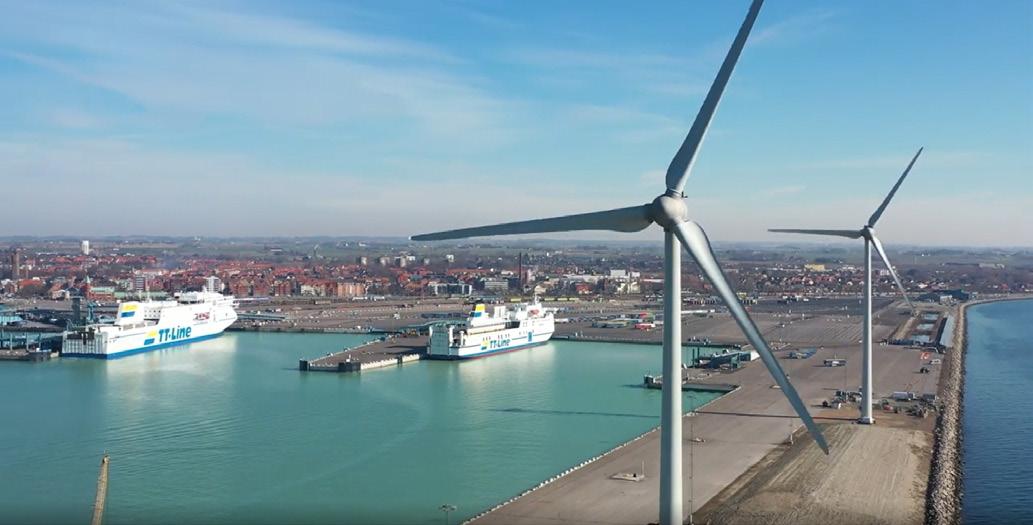

• The Danish Baltic seaport has retrofitted two Gottwald cranes, used for container handling in the New West Harbour, to run on electricity instead of diesel. The conversion, part of the Green Zealand Gateway project carried out in co-op with APM Terminals, also saw the set-up of a transformer station and other necessary electrical infrastructure. “Carbon neutrality is an important priority for many of the port’s customers, and it is, therefore, a necessity for the seaport to be able to offer services that are both environmentally friendly and efficient. This helps to ensure that the Port of Kalundborg remains an attractive and competitive partner in the market,”
the Danish seaport said in a press brief. The retrofitting was executed with the help of Port-Trade, which supplied the technical solutions, and Brix Elteknik, which was in charge of establishing the electrical infrastructure. However, Kalundborg’s e-Gottwalds can still run on diesel if need be. Bent Rasmussen, CEO, the Port of Kalundborg, explained, “In times of uncertainty, it’s essential that we, as a port, can maintain our operations in the event of power grid sabotage. The ability to switch to diesel if the power goes out gives us the necessary flexibility and security to meet both environmental requirements and operational needs.” •
• The Lithuanian seaport plans to have four onshore power supply (OPS) stations up & running in 2026, three at the Klaipėda Central Terminal for ferry traffic and one at the Klaipėda Container Terminal. Vakarų Resta has been contracted to carry out the design work as well as the construction operations (foundations for transformer stations) and to prepare the infrastructure for laying the cables from
the transformer stations to the quays. These works are expected to be completed by May this year. The about €11 million-project is partly financed (€8.6m) through the EU’s Connecting Europe Facility. The port authority intends to buy green electricity for the OPS stations. By 2028, Klaipėda also plans to offer shore power to cruisers and its own port fleet. •
• The Danish seaport has teamed up with the also Danish AirPlate (from Odense) to carry out from February to May 2025 a pilot project with the use of flying drones. The solution identifies the position, route, and pilot information about drones in real-time, enabling system users to respond to potential security threats. “The first drone was detected by the system a few hours after we installed the sensors. It was incredible to see the technology delivering value so quickly,” commented August Mader, CEO, AirPlate. He furthered, “We see the Port of Hirtshals as a strong case where our technology can play a key role in protecting and documenting drone activity in the airspace over port facilities. Our goal
is to assist even more companies in the critical infrastructure sector in managing drone-related threats and to become a long-term partner in strengthening the security efforts at the Port of Hirtshals.” The seaport’s Head of Transport & Logistics and Port Security Officer, Michael R. Langballe, added, “Port security requirements are constantly evolving, and we must evolve with them. Port facility security has traditionally focused on land and water areas, but there are also increasing requirements for areas such as cyber security.” The Port of Hirtshals has also shared in a press release that Denmark already experienced incidents where drones have unlawfully entered secured areas. •
• Targeting the marine & aviation sectors as its customer base, the 40-megawatt green methanol production facility, to be erected in the Iiksenvaara industrial area in Joensuu, has received an investment grant of €60 million. In 2022, the European Commission (COM) added the Joensuu plant to the Important Projects of Common European Interest (IPCEI) list, which now enabled providing the grant through the COM’s Recovery and Resilience Facility (allocated by a national funding mechanism managed by Business Finland). If the project gets a green-light final investment decision, possibly this year, it’ll be constructed next to a bio-power plant of Savon Voima, from which it’ll source biogenic CO2 for combining it with renewable hydrogen into
e-methanol (in return, providing waste heat transferred to the Joensuu district heating network). “This investment grant will significantly promote the development of the European and Finnish synthetic fuels market and move us closer to the investment decision of the Joensuu plant. In addition, it is an important step in strengthening the vitality of Eastern Finland and the hydrogen value chain. We are proud to be pioneers in developing the production of e-methanol in Finland through a trailblazing circular economy cooperation with Savon Voima,” commented Herkko Plit, P2X Solutions’ CEO. Hos company, together with Oulun Energia, is also exploring the possibility of building a green hydrogen up-to-100MW-capacity production plant in Oulu. •
• The two have partnered to set up the production plant, formerly known as FlagshipONE (bought by the Danish Ørsted in December 2022 and shelved in the summer of last year), additionally doubling its yearly capacity to 100 thousand tonnes of e-methanol. Liquid Wind will start developing the project this spring, with Övik Energi
tasked with supplying the biogenic carbon dioxide (130 thousand tonnes/year) for e-fuel production. Övik Energi’s co-generation plant will also provide steam and water for the e-methanol production process, while excess heat will be fed back into Örnsköldsvik’s district heating network. •
• The Finnish Ports Association, its seven members (Helsinki, Kokkola, Naantali, Oulu, Pietarsaari, Pori, and Turku), and carbon footprint data experts from the Jyväskylä-based Green Carbon have partnered to create a port environmental planning tool. The results of the project,
which will summarise the current state of environmental protection (including statutory & voluntary measures) in ports and their plans in this field from the biodiversity perspective, will be presented at the Finnish Port Days in Kokkola on 18-19 September 2025. •

The European Sea Ports Organisation (ESPO) said it supports the European Commission’s (COM) intentions to intensify efforts to ease permitting procedures in Europe, the willingness to look into a more pragmatic approach to the definition of low-carbon hydrogen, the proposal to identify and focus on industrial clusters, the circular economy initiatives, and the plans to lower the energy prices. Europe’s ports also back the COM’s understanding that the demand side needs to be boosted in order to build the business case for decarbonised products. ESPO shares the view that there must be a market to attract investors successfully. “Ports are not only hubs in the supply chain, but through their hub function, they are also clustering many industrial activities. We see in the Clean Industrial Deal [...] a lot of understanding of the challenges to combine decarbonisation and competitiveness in Europe. The document is, in that sense, a good first step, but a lot will depend on its concrete implementation,” said Isabelle Ryckbost, ESPO’s Secretary General. She furthered, “To give an example, in the last years, important
legislative efforts have been made to ease permitting procedures, in particular through the Net-Zero Industry Act and RePowerEU, but very little has changed on the ground. On the contrary, new sectoral legislation risks to further complicate and delay these processes.” The European Community Shipowners’ Associations (ECSA) also welcomed the Deal, especially the recognition of shipping under the five sectors across which the initiative should be implemented. ECSA listed a few actions that could bolster the competitiveness of Europe’s shipping, including the reduction of reporting burden (by at least 25% for all companies and a minimum of 35% for small-medium firms); aligning EU regulations on shipping decarbonisation in line with what the International Maritime Organization establishes; leveraging EU & national revenues from the block’s Emissions Trading System to bridge the price gap between traditional and alternative fuels (here, ECSA also welcomed the launch of a new mechanism under the European Hydrogen Bank to de-risk investments in future marine fuels).
A consortium led by ABS – which also included CE Delft, Arcsilea, and Texas A&M University – published the last two reports in the series “A 360-degree analysis of nuclear power and synthetic fuels, specifically the renewable e-fuels of e-diesel, e-methane and e-methanol, complete a project for EMSA designed to support the European Commission, the Member States, the shipping sector, and European ports in the transition to carbon-neutral shipping,” highlighted ABS in a press brief. To this, the class’ Senior Vice President, Global Business Development, Vassilios Kroustallis, added, “This set of six reports together represents a substantial body of


work that advances the safe adoption of these fuels, which will be the foundation of the industry’s move to low- and zero-carbon operations.”
Dagmar Nelissen, Senior Researcher and Consultant from CE Delft, also highlighted, “CE Delft is proud to have also contributed to the fifth study on potential future fuels, which covers the remaining set of fuels: e-diesel, e-LNG, and e-methanol. The study allows a consistent comparison with the previously studied fuel types and shows the challenges ahead as far as costs and up-scaling of the synthetic fuels are concerned. Regulatory measures seem to be indispensable for their further development and uptake.”
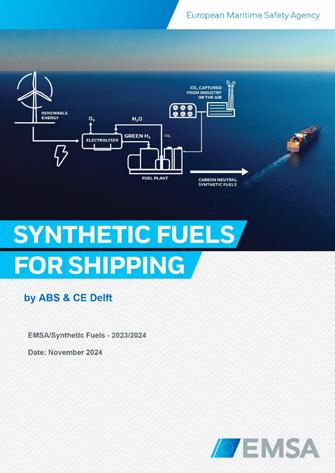
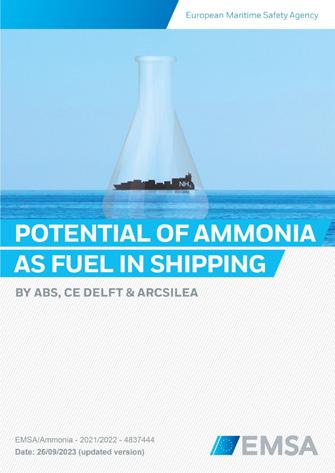
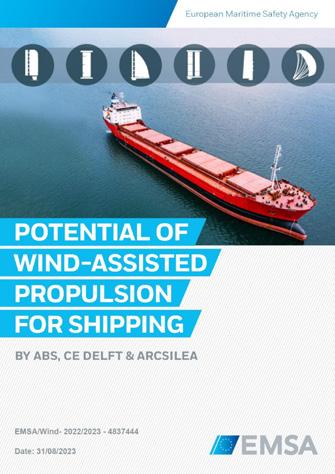
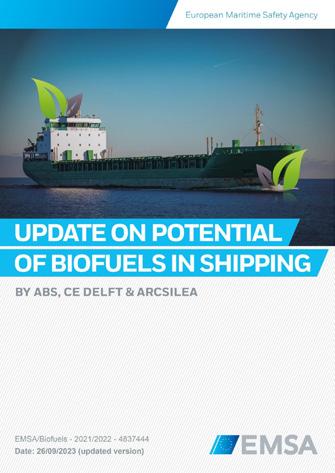

The wind industry has put forth three steps to help Europe increase its energy independence and competitiveness. First, reports WindEurope, “Apply the new EU permitting rules. They work wonders. Germany is now permitting seven times as much onshore wind as five years ago. And filter out zombie projects from grid connection queues – they’re clogging up the system.” Second, “Remove barriers to electrification. Let industry get state aid to electrify with renewable PPAs [power purchase agreements], which are not just for onsite power. Remove nonenergy taxes and charges from electricity bills, so renewables become an obvious choice for consumers.” Finally, “De-risk wind investments with a stable pipeline of two-sided Contract for Difference [CfD] auctions. CfDs improve costs of capital and visibility on revenues and are
good value for governments.” Henrik Andersen, WindEurope’s Chairman, commented, “Europe is in a moment of transition. To secure European influence in the global economy, we need more secure, affordable, and sustainable energy. Wind energy is already driving industrial growth and energy independence across Europe; we just need to scale up. This calls for increasing viable demand for wind energy and strengthening wind’s market environment.” His organisation further underlined in a press brief, “[...] energy-intensive industries want more wind. It is cheaper than fossil alternatives, even when the grid and system costs are taken into account. Wind helps European businesses to electrify and cut their energy costs. It is a completely local source of energy, so it strengthens energy security and removes the price volatility of imported fossil fuels.”
Seventeen parties – including the European Sea Port Organisation and the Federation of Private Port Operators and Terminals – representing different industries have issued a joint statement in which they propose measures to strengthen eight pillars to sharpen the competitive edge of European waterborne logistics. These include taking an ecosystem approach (so that environmental, economic and social factors are considered collectively, and that cross-industry synergies are taken advantage of); building resilience and preparedness for potential disruption (thanks to embedding them at every level, the sector can not only withstand shocks but also thrive in an increasingly complex and dynamic global environment); invest in multimodal connectivity and infrastructure (especially in the hard- likewise software development of the EU Trans-European Transport Network, also for military mobility); ensure a competitive, predictable, and fair economic environment (by striking a strategic balance between open market access and economic security measures);
continue investing in innovation (to drive competitiveness, sustainability, and resilience); provide adequate and accessible funding (by reinforcing the Connecting Europe Facility and mobilising private capital, among others); support both industry leaders and small-medium enterprises; and protect and promote quality jobs within the sector (with measures such as supporting high-quality employment, strengthening the social dialogue, and enhancing training and up-skilling opportunities for workers, blue- and white-collar alike). “By advancing these priorities, a European waterborne ecosystem will serve as a crucial instrument to tackle current challenges, foster high-quality employment within the EU, and position the sector and its broader ecosystem for long-term sustainable growth and global competitiveness. A well-designed inclusive and comprehensive strategy will strengthen Europe’s industrial resilience, enhance economic opportunities, and support the transition to a more innovative and sustainable transport network,” the signatories said in a press release.

by Ewa Kochańska
The report Wind Energy in Europe: 2024 Statistics and the Outlook for 2025-2030 , published in February this year by WindEurope, provides a comprehensive analysis of the wind energy sector’s performance in 2024 and projections for the upcoming years. Europe added 16.4 gigawatts of wind energy capacity last year, with the EU accounting for 12.9GW. By the end of 2024, Europe’s total wind power capacity reached 285GW, comprising 248GW on- and 37GW offshore. The report emphasises the need for accelerated wind farm deployment and supportive government policies to ensure that wind energy can assist Europe in its transition to a sustainable future.
In 2024, wind power supplied 19% of the EU’s electricity. Looking ahead, the report forecasts the addition of 187GW of new wind power capacity in Europe between 2025 and 2030, averaging over 31GW annually. The EU-27 is expected to contribute 140GW to this growth, aiming for a total installed capacity of 351GW by 2030.
However, to meet the EU’s renewable energy target of 42.5% by 2030, installations would need to reach 425GW. Recognising the great potential of wind energy, particularly in decarbonisation and climate goals, as well as economic and energy security, scaling up the development of new wind farms is critical.
Onshore installations take the cake
At this point, land installations are more common than offshore due to much lower construction and maintenance costs; onshore wind farms accounted for 84% of the total new wind capacity added in Europe in 2024.
Germany was the leader in onshore wind development, adding 3.3GW from 644 turbines with an average power rating of 5.1 megawatts. Net additions amounted to 2.6GW after 712MW of decommissioned

capacity. Finland ranked second with 1.4GW from 235 turbines, maintaining an average rating of 6.0MW. Türkiye doubled its previous year’s capacity with 1.3GW (average power rating 4.8MW), driven by ongoing capacity extensions and the 1,000MW YEKA-2 projects. Spain also nearly doubled its volume from 2023 by adding added 1.2GW (power rating of 5.2MW), while France’s 1.1GW addition marked a decrease from 2023 (average power rating 2.8MW –one of the lowest in Europe in 2024). Sweden, with 1,015MW from 165 turbines, had an average power rating of 6.2MW.
Poland, the UK, Italy, and Lithuania completed the Top 10 for new onshore wind capacity in 2024. Poland’s 805MW was hindered by height restrictions from the 10H rule (requiring that new installations must be located at least the distance of 10 times the turbine’s height – including the blade in its upper-most position – from the nearest buildings), resulting in a lower average power rating of 3.3MW. Italy added 685MW with a 4.1MW average power, while the UK installed 739MW at a 3.7MW average power rating. Lithuania saw a record 522MW of new capacity, achieving Europe’s highest average power rating (alongside Romania) at 6.3MW. Overall, the European onshore wind sector faced regulatory and supply chain challenges yet saw significant contributions from multiple nations.
Onshore wind energy is projected to dominate Europe’s renewable installations,
with 140GW of new capacity expected between 2025 and 2030, accounting for three-quarters of the continent’s 187GW total. After accounting for decommissioning, the total onshore capacity in Europe is estimated to reach 366GW by 2030, with the EU contributing 113GW of the new capacity. The capacity labelled in the report as ‘already awarded in auctions’ is expected to add around 26GW by 2027 for the whole continent. Meanwhile, the capacity of ‘scheduled to be auctioned’ and ‘expected to be auctioned’ could contribute an extra 35GW and 13GW, respectively, by 2030.
There are also ‘non-auction projects’ that concern wind power capacity completed without central auctioning systems on power purchase agreements or exclusively on a merchant basis. This last category is prevalent in countries with no government support, such as Sweden and Finland, and the capacity from such systems is expected to amount to 39GW in 2025-30.
Overall, the onshore wind sector in Europe is poised for significant growth, but much of the capacity depends on successful auctions and the effective implementation of non-auction projects.
Installations out there in the sea lag behind those ashore, posing significant cost, construction, infrastructure, maintenance, and environmental challenges. However, it is important to note that they
also offer benefits that surpass those of onshore wind farms, such as greater wind energy efficiency because of higher wind speeds and consistency.
In its calculations, WindEurope only reports new offshore energy capacity that’s actually grid-connected and generating energy. Since offshore wind farms are much bigger than onshore, they take much longer to build and connect to the grid. Therefore, some turbines might have already been built but are not counted in this report because they are not yet operational.
All that considered, last year, Europe added 2.6GW of offshore wind power across eight wind farms in three countries. The UK led with 1,178MW from three sites, including the full connection of 60 turbines at Moray West (882MW) and contributions from Neart na Gaoithe (296MW) and Dogger Bank Phase A (1.2GW), averaging a power rating of 12.7MW per turbine (so over three times stronger than the country’s land ones). Germany connected 730MW from Baltic Eagle (477MW) and Gode Wind 3 (253MW) with 73 turbines and a power rating of 10MW. In France, 658MW was added from Saint Brieuc (496MW), Fécamp (497MW), and the pilot Provence Grand Large floating project (25MW), with 87 turbines averaging a power rating of 7.6MW. Additional construction took place at six wind farms in the UK, France, and Germany, but their turbines have not yet been connected to the grid.
Europe has set far-reaching goals for its offshore wind sector, recognising its potential for enhancing the continent’s energy security, helping to achieve climate goals, lowering noise pollution and visual impact, and creating job opportunities with stable prospects. The initial target set for Europe was 114GW of offshore wind power by 2030, later raised to 158GW. That said, many countries have scaled back these goals due to challenges in setting regulatory frameworks, upgrading grids, and developing supply chains. Despite slower-than-expected progress, new offshore wind projects are expected to come online shortly after 2030; nevertheless, the report states that achieving the original goals on time now seems unlikely.
A significant obstacle to offshore wind expansion in Europe is the slow implementation of offshore auctions (often due to rule drafting or the absence of related regulations). This leads to uncertainty in project timelines and complicates supply chain development. Although parts of the supply chain are expanding along with the projects, certain elements require longer planning.

Yet, the most critical constraint for offshore development is port capacity. While current seaport facilities can support offshore wind projects until 2028, planned installations are expected to exceed capacity the following year, even when accounting for expansions. “We, therefore, expect offshore project delays to become a major bottleneck across Europe from 2029,” says WindEurope in its latest summary. With port development taking 6-10 years, urgent expansion investments are needed to prevent offshore project delays. Additional problems are posed by lagging electrical grid development, inadequate management of connection requests, and outdated grid permitting methods, which hinder project prioritisation.
Vessel availability also creates a conflict. Of around 80 ships supporting offshore wind construction in Europe, only five can handle the largest 14-15MW turbines, which will be the norm by 2030. Demand from global markets and seasonal deployment of ships in the Southern Hemisphere
further strain availability. Building new vessels takes 2-3 years, underscoring the importance of timely investments.
Although challenges have delayed offshore wind ambitions in Europe, the sector’s outlook remains positive, according to WindEurope. Governments are still committed, and while installations may lag by 1-2 years, a decline in deployment is not anticipated. The EU is projected to reach 48GW of offshore wind capacity by 2030, with 29GW of new installations planned between 2025 and 2030. The majority of this capacity, 24GW, comes from projects already awarded in auctions and considered reliable. An additional 3.0GW is expected from projects scheduled for future auctions, though their timelines remain uncertain until rights are secured. A smaller portion, around 1.0GW, consists of non-auction projects, primarily in Sweden and Finland, which face greater uncertainty regarding their development schedules (especially in the former, whose military is, for this or another reason, against offshore wind
energy, a stance sharply contrasting their EU-Baltic counterparts’ approach).
By 2030, Europe’s total offshore wind capacity is anticipated to reach 84GW, with 39GW from awarded auctions, 8.0GW from upcoming auctions, and less than 1.0GW from non-auction projects. Despite some uncertainties, the outlook for offshore wind expansion remains strong, supported by a mix of auction-backed projects and open development systems.
(but first, wait to be connected)
Electrification is a key strategy for enhancing resilience and decarbonising Europe, as the European Commission’s (COM) Competitiveness compass from January 2025 underscored. The EU report highlights Europe’s heavy dependence on imported fossil fuels, a vulnerability particularly exposed by Russia’s use of energy as a geopolitical (power)tool. The WindEurope report warns that to reduce this reliance, the EU must rapidly expand clean energy and promote electrification. The COM’s Clean Industrial Deal aims to drive electrification by supporting operating and capital expenditures for renewables-based processes. According to the COM’s impact assessment, electricity’s share of final energy consumption is set to double to 50% by 2040, with generation increasing from 3,360TWh in 2030 to 4,560TWh in 2040. Wind energy will be critical in meeting this demand, potentially quadrupling output by providing 1,830TWh if annual deployment reaches 30GW throughout the 2030s. Streamlined permitting (e.g., Germany increased permitting sevenfold over the last four years), digitalisation, and binding EU permitting rules are essential for accelerating wind deployment.
However, Europe’s electricity grid remains a significant bottleneck, hindering renewable energy deployment and competitiveness. Continual underinvestment has resulted in lengthy grid connection queues, curtailment issues, and weakened investment incentives. Over 500GW of wind capacity across multiple European countries awaits grid connection assessments. To address this challenge, the report calls for national authorities, TSOs, and DSOs to adopt dynamic and strategic management of grid connections, moving away from the ‘first come, first served’ model and implementing prioritisation and filtering criteria. The EU’s Action Plan for Grids calls for more than €584 billion in investments this decade,

primarily for national grid expansion. This requires long-term planning from system operators, risk mitigation tools for investment recovery, and enabling private investment while adhering to unbundling regulations. Strengthening Europe’s electricity grids is essential to unlocking renewable energy potential, phasing out fossil fuels, and creating a sustainable investment environment for clean energy.
With great power comes the need for repowering
In 2024, wind energy provided 19% of the EU’s electricity demand – the same as in 2023, despite increased output, as electricity consumption rose 1.4%; onshore installations generated 16.6% and offshore 2.5%.
Denmark led Europe, with wind covering 56% of its demand, while Ireland came in second at 33%. Sweden’s share grew significantly from 26% in 2023 to 31% in 2024, following a 6.0% increase in installed capacity and improved fleet efficiency, surpassing Spain, the Netherlands, the UK, and Germany. Estonia, Finland, and Lithuania also saw significant gains, with Lithuania’s share rising from 21% to 27%, Finland’s from 18% to 24%, and Estonia’s from 10% to 14%. The UK ranked fifth in Europe with wind energy meeting 30% of its needs, while the Netherlands used wind energy for 29% and Portugal for 28% of their energy demand. Combined, the EU and UK produced 557TWh of wind power, meeting 20% of their joint electricity demand. The UK’s offshore capacity alone generated 47TWh (which would cover Hungary’s entire demand of 43TWh).
The power capacity of wind turbines has seen a significant rise over the past decade. Onshore turbines installed in 2024 had an average power rating of
4.6MW, a slight increase from 4.5MW in 2023 but an impressive 84% growth from 2.5MW in 2015. Recent innovations include turbines with larger rotor diameters and lower power ratings, designed for low-wind sites, expanding viable project locations. Orders placed in 2024 averaged a record 5.7MW, suggesting continued growth in onshore turbine capacity. Offshore turbines in Europe also experienced notable advancements, with average power ratings increasing 2.4 times over the last decade and more than 25% since 2022. Offshore orders in 2024 averaged 14.8MW, slightly above 14.7MW in 2023, and introducing even more powerful turbines promises further capacity growth in the coming years.
Despite these positive trends in turbine technologies, fluctuations in hardto-control circumstances, such as changing demand and weather conditions, have impacted generation last year. Inconsistency is a natural aspect of wind power; winter months see greater fluctuations, while summer’s stable, high-pressure systems reduce output and variability. Poor wind conditions in 2024 reduced output in Ireland and the UK; on the flip side, favourable weather boosted production in Sweden, Norway, Finland, and the three Baltic States. Estonia and Finland saw a 39% increase in generation, while Lithuania’s output surged by 37% compared to 2023. The EU-wide capacity factor averaged 24%, with onshore wind at 23% and offshore at 35%. Here, the age of the installations also plays a role; new wind farms boast higher generation capacity than older ones, with onshore capacity from 30-35% and offshore from 42-55%.
Wind farms do have a finite lifespan, typically ranging from 15 to 25 years for
older installations (modern turbines are designed for longer use). When a wind farm reaches the end of its operational life, decommissioning involves dismantling and removing turbines unless their life is extended through upgrades. Repowering can still be a better option, replacing outdated components with advanced technology to enhance efficiency and output.
In 2024, 1.3GW of wind capacity was decommissioned across eight European countries. Repowering contributed 1.6GW out of 16.4GW of new wind installations in Europe (mainly from Germany). Repowered projects are strategic as they leverage existing infrastructure and permits, making them less challenging than new developments. The decision to repower wind farms is influenced by electricity prices, incentives, and environmental regulations, varying by region and project age. Repowering is more common with younger wind farms due to clear economic benefits, while older ones are often maintained until decommissioned. The EU supports repowering by mandating shorter permitting timelines under the 2023 Renewable Energy Directive. However, national challenges persist, such as Italy’s auction rules that require discounted bids in repowering, which do not account for decommissioning costs. By 2030, annual installations from repowering are expected to increase from 1.4GW to over 5.0GW, totalling 21GW, while around 22GW of older wind farms will be decommissioned. Despite this growth, repowered wind farms will only represent 8.0% of Europe’s installed capacity by 2030. Though repowering is essential to Europe’s energy and climate strategy, persistent challenges like regulatory obstacles and policy discrepancies must be addressed to fully capitalise on repowering potential and strengthen Europe’s renewable energy framework.
To speed up wind energy deployment in Europe, cabinets (central and local alike) must modernise and expand electricity grids, enhance port infrastructure, and fully implement the EU’s new permitting rules. Streamlining approvals should be a governmental priority across the continent. Additionally, increased investments in grid capacity, ports, and vessels are needed to support offshore wind growth.
Consistently deploying onshore and offshore wind farms at scale is essential to meet the EU’s 2030 target of 425GW and drive economic resilience while reducing reliance on fossil fuels.

by Casper Jensen, CEO, Danelec
It is widely recognised that digitalisation is making a positive impact on the pursuit of safer, more efficient, and environmentally responsible shipping. For decades, vessel performance has relied on analysing low-frequency data (LFD), with noon reports serving as the industry standard. While these continue to provide valuable operational snapshots, their limitations are increasingly evident in an era where real-time decision-making is crucial to realising gains throughout a voyage and across a fleet. High-frequency data (HFD) is emerging as the next step, providing shipowners & operators with continuous, granular insights that enable smarter, data-driven decisions.
Recent research from Thetius, in collaboration with Danelec, has underscored the growing importance of HFD in modern maritime operations. The findings reveal that while LFD remains valuable, it is increasingly being supplemented by real-time, highresolution insights that empower ownersoperators to make more informed operational decisions. The publication highlights how forward-thinking shipping companies are already leveraging HFD to enhance fleet efficiency, improve fuel management, and ensure compliance with tightening environmental regulations. The Unlocking Fleet Efficiency: The Power of High-Frequency Data report reflects on the need to bridge the gap between traditional noon reports and automated data-driven analytics, validating a phased digital transition in order for shipowners & operators to take control of their digital journey.
The best of both worlds Danelec has been equipping vessels with the tools necessary to harness the full potential of real-time data for more than 30 years. With HFD collection systems now installed on 15,000+ ships worldwide, the company’s solutions are helping owners-operators to optimise performance, reduce emissions, and ensure regulatory compliance. However, while HFD represents the future, Danelec recognises that the majority of the global fleet – nearly 70% – still relies on LFD for operational performance insights. Rather than advocating for an abrupt revolution across a fleet, a pragmatic, phased approach that bridges the gap between traditional and modern data strategies will ensure a cost-effective evolution.
Noon reports remain a widely used tool for monitoring vessel operations, providing valuable insights into fuel consumption, speed, and overall efficiency. They will remain a staple of daily operations for the foreseeable future, but their lack of immediacy to make informed real-time decisions and inevitable human-led bias leaves room for improvement. The challenge lies not in replacing the use of LFD-based noon reports overnight but in enhancing it with supplementary digital capabilities.
By bridging the gap between traditional and modern data strategies, Danelec is positioning itself as an essential partner for maritime companies aiming to stay competitive in an increasingly data-driven world. With a flexible platform, and socalled Data Pool capabilities that allow noon report-only vessels to be supplemented with HFD from similar vessels to increase voyage prediction accuracy, shipowners & operators can start small but be prepared to evolve when the time is right.
Each shipping company has unique operational constraints and business priorities, and any transition to digital solutions must accommodate these differences. Noon reports build the performance baseline, but scaling up to real-time monitoring and advanced analytics can unlock deeper insights and greater efficiencies over time.
With a platform that seamlessly integrates LFD with advanced analytics, we provide shipowners with the flexibility to evolve at their own pace. Such an adaptable approach ensures that shipping companies are not overwhelmed by the costs or complexities of digital transformation, instead offering a tailored path that aligns with their operational and financial readiness.
The operational advantages of HFD are becoming increasingly clear: by continuously monitoring key vessel systems such as propulsion, engine performance, and hull conditions, shipowners can leverage realtime insights to make data-driven decisions that reduce costs and enhance safety. For instance, predictive maintenance is one of the most promising applications of HFD. By identifying anomalies in sensor data before they develop into critical failures, operators can schedule maintenance proactively, preventing costly breakdowns and reducing downtime. This level of foresight is simply not possible with LFD alone.
However, while the benefits of HFD are substantial, challenges remain. One of the primary hurdles is data quality. Sensors can degrade over time, leading to inaccurate readings that compromise decision-making. Recognising this issue, Danelec has developed the Data Quality Module, a solution that ensures high-fidelity fleet data by providing real-time sensor monitoring and automated anomaly detection. By minimising the risk of erroneous data, the module enhances the reliability of performance analytics, allowing owners-operators to make informed decisions with confidence.
High-frequency data also accommodates improved processes for regulatory compliance, which is one of the stronger catalysts for the industry’s embrace of digital solutions. With new environmental regulations – like the EU Monitoring, Reporting, and Verification Regulation and its UK equivalent, the IMO Data Collection System, FuelEU, and the EU Emissions Trading


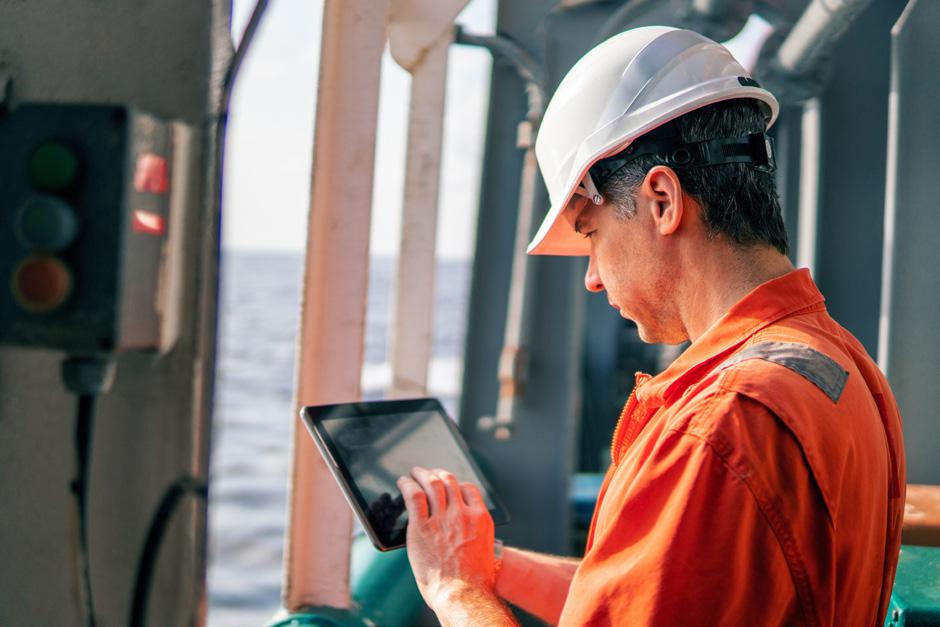
System – companies must be able to track and report vessel/fleet emissions data with unprecedented accuracy.
Noon reports, while useful for historical analysis, struggle to provide the level of granularity required for regulatory compliance. HFD, on the other hand, offers continuous emissions monitoring, allowing operators to make proactive adjustments that enhance fuel efficiency and reduce carbon footprints.
Demonstrating the real-word application and impact of HFD, our company launched this spring the Emissions Compliance Module within the Danelec Connect digital ecosystem. It is a cost-effective solution designed to streamline regulatory reporting; by automating emissions data transfer to class societies and third-party verifiers, the module eliminates the administrative burden associated with reporting.
The system not only ensures adherence to regulatory frameworks but also enables shipowners to optimise their emissions performance, identifying inefficiencies and implementing corrective measures in real-time.
The implications of the HFD shift extend far beyond individual vessel performance. As more shipowners embrace digitalisation, the collective impact on the industry will be significant. Enhanced fleet efficiency, reduced emissions, and improved

safety standards will contribute to a more sustainable and competitive global shipping sector. Moreover, as data-sharing practices improve, collaborative analytics may become increasingly valuable, allowing stakeholders across the supply chain to optimise logistics, minimise fuel consumption, and enhance operational predictability. Looking ahead, the maritime industry is poised for a future where real-time data is the norm rather than the exception. While the road to full HFD is long, the speed at which we are travelling is increasing. By providing solutions that accommodate both traditional and modern data strategies, Danelec is guiding the industry through this transition. Shipowners no longer need to choose between legacy systems and cuttingedge technology; with the right partner, they can navigate both worlds fluidly.
As shipping continues to evolve in response to environmental and economic pressures, one thing is clear: data will be at the heart of its transformation. Whether through noon reports or real-time analytics, the ability to harness high-quality data will define the success of maritime operations in the years to come. With its commitment to bridging the gap between LFD and HFD, our company is not only advancing digitalisation but also ensuring that every shipowner, regardless of their current technological capabilities, has a route to a smarter, more efficient future.
Danelec is a Danish scale-up operating at the forefront of maritime digitalization. With focus on innovative solutions and technology, the company is transforming maritime operations, and driving efficiency and safety for shipowners and operators worldwide. Onboard data collection incl. VDR and Shaft Power Meters as well as Ship Performance Monitoring and AI-based Analytics for Vessel and Voyage Optimization are Danelec ’s key areas of expertise. Visit danelec.com to learn more.

by John Cooper, CEO, BAR Technologies
The maritime sector is under increasing pressure to decarbonise, with the challenges of rising carbon pricing mechanisms, regulatory changes, and shifting fuel landscapes. The focus of the industry has been firmly on new fuel alternatives, but the blindly obvious solution that has been significantly overlooked is wind. Wind propulsion offers an abundant, proven, low-cost, zero-emission alternative that not only addresses the carbon footprint but also reduces fuel dependency in a way that is readily accessible, scalable and, importantly, free at the source.
At BAR Technologies, we believe that wind propulsion, particularly through our innovative WindWings® technology, must be recognised as a core part of the solution. While the shipping industry grapples with the complexity and uncertainty of new fuels, wind is a reliable, available, and self-sufficient energy source that can be harnessed today.
With the International Maritime Organization’s (IMO) 2030 emission targets fast approaching, it’s imperative that we include wind propulsion in the conversation alongside other technologies. Wind is a unique fuel in that it requires no production, no refining, and comes with zero-carbon intensity, making it an obvious choice as part of the fuel mix for decarbonisation strategies.
Our WindWings® technology is already helping vessels around the world reduce fuel consumption and emissions, providing ships with a cost-effective way to improve operational efficiency. The model range, including the 37.5/24/20-metretall ‘wings’ and using our patented &
award-winning three-element design, ensures that our wind-assisted propulsion systems (foldable and non-foldable) meet the needs of a diverse range of vessel sizes (newbuilds & retrofits).
Unlike alternative fuels, which require significant investment and complex infrastructure that remains largely unproven and uncertain, WindWings® offer immediate reductions in fuel dependency. With wind propulsion, there is no need to put trust in the complex infrastructure that comes with the development and distribution of new fuels. Moreover, the performance of WindWings® can be optimised through advanced digital weather routing tools, which ensure that vessels maximise the fuel savings gained through the potential of wind. The solution isn’t to put all our eggs in one basket with costly e-fuels that will further disadvantage developing nations. Instead, we need to leverage the wind that’s already available and deploy technologies like WindWings®, which deliver immediate fuel savings and emissions reductions without the need for complex and expensive new infrastructure. Wind-assisted propulsion offers a lowcost, scalable alternative that can be part
of the broader mix, complementing the transition to cleaner fuels.
A common misconception in the maritime sector is that wind propulsion is unreliable or complex to operate. However, decades of meteorological data contradict this view. In fact, many of the most popular shipping routes demonstrate predictable and consistent wind patterns. This wealth of historical wind data, coupled with modern routing technology, allows us to ensure that WindWings® systems provide reliable, measurable reductions in fuel consumption and emissions. On global average shipping routes, each WindWing® saves 1.5 tonnes of fuel and reduces emissions by 4.7 tonnes of CO2 for each day of operation.
By capturing and utilising wind energy, WindWings® represent an energy source that is both eco-friendly and available at the source. This makes wind-assisted propulsion not only a sustainable solution but also a commercially viable one for shipping companies, providing an alternative to the high costs and uncertainty of alternative fuels. As the debate on new fuels heats up, it’s important not to overlook the

most readily available energy source we have at our disposal: wind. While e-fuels hold promise, they come with significant costs and financing challenges that could hinder the global effort to decarbonise the shipping industry, especially in developing economies. Wind-assisted propulsion systems like WindWings® will provide a scalable and commercially viable solution that not only helps meet decarbonisation targets but does so in a way that is accessible to all nations, regardless of their economic status.
The Baltic Sea region (BSR), with its busy maritime routes and challenging weather conditions, is at the forefront of the shipping industry’s decarbonisation efforts. The European Union’s ambitious emission reduction targets and local initiatives, including the Baltic Sea Action Plan, position the region to accelerate the adoption of green technologies. Wind propulsion offers a significant opportunity for Baltic shipping operators to meet these goals.
By harnessing the abundant wind resources in the Baltic, shipping companies can make significant decarbonisation strides. Wind propulsion offers an immediate solution while operators explore their long-term fuel transition strategies. As more vessels in the region adopt wind propulsion, the collective impact on emissions will be substantial, contributing not only to local environmental goals but also to global efforts to combat climate change. Wind should now be viewed as an essential part of the fuel mix, providing a reliable and costeffective option as the industry works towards a more sustainable future.
We urge the shipping industry, particularly stakeholders in the BSR, to recognise wind as a key part of the decarbonisation mix. Wind propulsion is an essential, viable, and affordable technology that can reduce emissions, improve fuel efficiency, and contribute to the global effort to tackle climate change. The resources are already available, the technology is proven, and the shipping industry is ready – so now we must act.
The winds of change are already here, and it’s time for the shipping industry to harness this abundant resource. Wind propulsion is not just an efficiency boost; it is a fuel in itself, free and available at the point of use. By embracing WindWings® and other wind-assisted propulsion technologies, the industry can meet its decarbonisation targets. For me, I truly believe the time to act is now.


We are committed to improving the sustainability of the marine industry through innovative technological development, bringing positive environmental, social, and economic impact. Whether it is producing designs to increase fuel efficiently, or designing with fuel sources which are free of CO2 emissions in operation, we are all working for a cleaner future. Sail to bartechnologies.uk to discover more.

by Fitzwilliam Scott
First, the Danish seaport saw the completion of the fifth phase of its expansion, with over four million cubic metres of sand & clay moved and repurposed to create 570 thousand square metres of new port areas. By the end of the year, this extra space will be ready for leasing, increasing the port’s total area by 10%. Second, Esbjerg completed (on time & under budget) the Connecting Europe Facility-supported (211 million Danish crowns) NORTHERNSEALYTS project that saw its fairway dredged from 9.3 to 12.8 metres. Third, Port Esbjerg has struck partnerships, including with the Norwegian WindPort and the German Brunsbüttel Ports.
The expansion investment was carried out to make room for handling more offshore wind energy projects and other oversized cargo, as well as to partake in setting up logistics infrastructure for carbon capture & storage (CCS). “Over the next five years alone, 13.5GW of offshore wind capacity is expected to be shipped from Port Esbjerg –underlining the port’s crucial role in delivering Europe’s green ambitions. The new area will also support the establishment of Denmark’s first CO2 terminal, which will be a key component of Europe’s first full-scale CCS project. Additionally, the significant increase in area ensures that companies at the port have more room to operate while enabling Port Esbjerg to support strategic objectives within modular cargo,” the Danish seaport highlights.
Potential – unlocked
Shortly afterwards, and after years of preparation and large-scale construction works, the 21.6-kilometre-long via Grådyb fairway to Port Esbjerg got fully deepened. The upgrade enables access for larger vessels,
handling of more cargo, and paves way for new strategic opportunities in both the energy and defence sectors. “The deepening of the fairway marks a major milestone. It expands our overall capacity and unlocks new potential for the future,” says Dennis Jul Pedersen, CEO of Port Esbjerg.
In total, 3.7 million cubic metres of seabed material were moved as part of the NORTHERNSEALYTS project (much of the dredged material was reused to expand the southern areas of the port). While 2.5 metres may not sound like much, the impact is transformative. “This is a milestone that strengthens our position as an international hub for logistics and energy,” adds Dennis Jul Pedersen. His port lists three strategic advantages. First, more cargo, larger vessels: the increased depth allows Port Esbjerg to accommodate significantly bigger and heavier ships. As such, the port now expects to double its cargo volume over the next decade. Second, strengthening of offshore wind leadership: future offshore wind installation vessels and components are becoming larger and heavier. The new fairway
ensures that Port Esbjerg can maintain –and grow – its position as Europe’s leading port for offshore wind shipments. Third, enhancing military readiness: the deeper fairway enables Port Esbjerg to receive larger ro-ro and military vessels. This significantly enhances the port’s strategic importance to NATO and enables faster and more efficient response during periods of heightened readiness. With this upgrade, Port Esbjerg joins an exclusive group of European seaports capable of handling this class of ships and cargo.
The port is now well-positioned to play an active role in the global logistics shifts driven by geopolitical developments and changing global trade patterns. “We are already seeing that several partners and companies within the maritime sector are in need of ports that can accommodate significantly larger vessels. This is no longer something lying in the future – it is here and now. And now, Port Esbjerg is ready,” Dennis Jul Pedersen sums up.
The fairway deepening is part of a broader infrastructure development plan – in and around Esbjerg. The rail






connection to the port has recently been extended, and new reinforced areas have been established for heavy logistics – with a particular focus on offshore wind. “We have removed a key barrier. We are now even better positioned to serve as a centre for green energy and military logistics. The fairway is more than an engineering project – it is the foundation for our future,” underlines Dennis Jul Pedersen.
Søren Gade, Chairman of the Board of Port Esbjerg, also highlights the strategic significance, “We have reached a crucial milestone that opens the port to the vessels shaping the future of energy and security. This strengthens not only Port Esbjerg but also Denmark’s role in the green transition and in international defence cooperation.” Dennis Jul Pedersen concludes this thread by saying, “This project is complete – but development continues. We now have a port ready to meet the demands of the future, and we look forward to realising

its full potential in close partnership with both the energy and defence sectors.”
Crucially important, Esbjerg also works with others to level up the entire port sector and industries relying on it.
As such, the Danes will share their operational know-how, engineering insight, and logistical practices in Windport’s efforts to become the marshalling hub for the Sørlige Nordsjø II offshore wind energy farm (1,400-1,500-megawatt-capacity).
“Port Esbjerg is widely regarded as one of the most experienced offshore wind ports globally. Learning from their experience enables us to build smarter from the start,” shares Turid Storhaug, Managing Director at WindPort.
To strengthen international collaboration, Port Esbjerg also took the initiative to establish the Offshore Wind Port Alliance – a strategic partnership between leading
European ports aiming to accelerate offshore wind deployment. This Alliance facilitates the exchange of best practices and coordinated capacity planning, helping to ensure that port infrastructure across Europe keeps pace with the growing scale of offshore wind projects.
Port Esbjerg has also signed a memorandum of understanding with Brunsbüttel Ports that’s aimed at developing efficient logistics, port terminal solutions, and the transport and storage of carbon dioxide.
“To decarbonise heavy industries, we need effective carbon capture and storage solutions – and that means moving CO2 from where it’s emitted to where it can be safely stored. Ports will be key hubs in this process. With this new collaboration, Brunsbüttel and Esbjerg are taking the lead in building the infrastructure that will support industrial clusters in Northern Germany and storage operations on the Danish Continental Shelf,” comments Dennis Jul Pedersen.

by Mona
Elo, Researcher, Satakunta University of Applied Sciences (SAMK), Marlene Svegreus, Project Manager, Swedish Maritime Administration, and e-Nav Project Leader, and Antti Värre, Project Manager, SAMK
This article, prepared within the Baltic Sea e-Navigation (e-Nav) project, presents a qualitative overview of the development and piloting of new digital navigation products based on the S-100 standard in the Baltic Sea region (BSR). Anchored in international cooperation and user-centered design, it offers input to the discourse on how harmonized and interoperable data services can support safer, more efficient, and sustainable maritime operations in line with the S-100 implementation roadmap of the International Hydrographic Organization (IHO). Let us then examine the critical steps in ensuring the future-ready infrastructure and the role of cutting-edge navigation products in revolutionizing Baltic Sea maritime operations.
Paper charts for maritime navigation have a long history, though they are young relative to sea maps. The earliest maps are mentioned around the late 11th century, and the earliest ones with sailing instructions for the Baltic Sea surfaced around 1450. Yet, the paper charts form originated in the 1800s, when the British Admiralty published the first official chart.
The conception of electronic charts began in the early 1950s as an article in the Journal of Navigation suggested combining radar imagery with digitalized chart data, which at the time could not be actualized due to the limitations in technology and storage capacity. It was not until the S-57 standard was adopted in 1992 that electronic navigational charts (ENC) became a reality.
Now, with the Interreg Baltic Sea Regionfunded e-Nav, we take a step into the future of digital maritime navigation in the BSR by introducing the S-100 standard.
Timely & essential
e-Nav builds on centuries of navigational progress to bring maritime
operations into a smarter, safer, and more sustainable digital era. With collaboration across multiple nations bordering the Baltic Sea, the project aims to enhance the way ships and shore-based systems share information, whether for voyage planning, traffic management, or real-time updates. Given that the Baltic is one of the world’s busiest and most environmentally sensitive maritime regions, these improvements are both timely and essential.
At the core of the project is the development and testing of the next generation of electronic chart products based on the new S-100 standard. These include S-101 ENC, S-102 bathymetric surfaces, S-104 water level data, and S-111 surface current information. Together, they form the foundation of the Baltic Sea Base Package. Harmonization guidelines are also being finalized to ensure these products function seamlessly across borders, with approval set by the Baltic Sea Hydrographic Commission. These outputs will not only improve the efficiency and safety of maritime navigation but also
contribute significantly to a more sustainable future in the Baltic Sea.
The project promotes interoperability and harmonization across the region, enhancing international maritime cooperation. It also prepares the maritime industry for future regulatory standards, ensuring compliance with the IHO S-100 implementation roadmap by 2030.
Importantly, e-Nav is not developing tools in a vacuum, as close collaboration with end-users ensures new systems are informed by practical needs and on-theground experience. Through a series of pilot sessions, navigators interact with early prototypes in simulated conditions, offering feedback that directly informs the design and refinement of S-100 products. By grounding development in realworld use, the project aims to deliver tools that are not just functional but also intuitive and impactful.
A unique testing ground
To understand how these digital innovations perform in practice, the project



has established a variety of pilot areas that reflect typical and complex navigational challenges found across the Baltic Sea. These range from high-traffic fairways and shallow archipelagos to open-sea corridors and restricted coastal routes. Each area provides a unique testing ground for assessing how new chart products respond under real conditions.
Data collection is methodical and userfocused. Using a combination of structured questionnaires and open-ended feedback forms, information is gathered from navigators before, during, and after simulation exercises. These sessions are conducted in a full mission bridge simulator at SAMK in Finland, allowing for detailed observation of navigational behavior in a realistic setting. The insights gained are passed on to the national hydrographic offices to support the harmonization of S-100 products throughout the BSR.

To enable the effective piloting of S-100 products, the development of a compatible navigation system is essential. Furuno, a leading maritime electronics company, is responsible for designing and integrating the navigation system prototype. Their role includes ensuring the system’s full compatibility with S-100 datasets and providing ongoing technical support throughout the testing and refinement phases.
Early in 2025, the initial prototype was installed in the full mission navigation simulator at SAMK. At this stage, preliminary S-100 products provided by hydrographic offices were loaded into the system, and an expert team conducted the first round of visual inspections to assess rendering quality and data integration.
The first testing sessions took place in the early spring of 2025 at SAMK’s Rauma campus, guided by project team members from SAMK and the Research Institutes of Sweden. These tests were carried out to evaluate the early versions of the S-101 and S-102 products.
Initial phases (2020-26)
Operational implementation (2026-onwards)
Full implementation (by 2029)
The pilot sessions are designed as immersive workshops, where experienced officers test and evaluate the new data layers within an S-100-compatible chart system prototype. These workshops simulate operational scenarios to explore features like high-resolution bathymetry, dynamic tidal adjustments, and visualizations of surface currents.
Initial feedback from participants points to tangible improvements: better situational awareness, more accurate route planning, and greater confidence when navigating in challenging conditions. The expected outcome is not only increased safety at sea but also reduced environmental impact, which are key goals for the future of maritime navigation in the Baltic.
These products will be used far beyond the project’s conclusion (in the fall of next year), as they will serve as the foundation for expanding coverage and data sets in the future. The continuity of the project’s output will allow for future developments in digital navigation systems, enhancing the scope and capabilities of maritime operations in the Baltic and beyond.
Focus on development, testing, and preparatory activities. Establishment of necessary infrastructures for the S-100 ecosystem.
Beginning in 2026, the first operational S-100-based products, such as S-101 ENC, are expected to be released. This phase includes a transition period where both S-57 and S-100 based products will be used in parallel to allow for adaptation and updates to equipment and training.
From 1 January 2029 – S-100 Electronic Chart Display and Information System (ECDIS) mandated to all new installations. Parallel production of S-57 and S-100 to continue into the foreseeable future.
This road map highlights the gradual and structured approach the IHO is taking to ensure a smooth transition to the S-100 standard, providing ample time for all stakeholders to adapt to the new technologies and procedures.

by Sarah Banks, Head of Transport & Logistics, Prasanna Ellanti, Head of Border Services, and Johnny Anderson, Supply Chain and Operations Strategist, Accenture
With the global economy continuing to grow in both size and complexity and the geopolitical environment shifting at an unprecedented pace, the entire port ecosystem – terminal operators, seaport authorities, shipping lines, customs agencies, and logistic providers – faces mounting pressure to modernize. Mega-container ships, evolving customs regulations, and the demand for transparent, real-time shipment tracking are driving a shift to smarter and more agile infrastructure. These factors require moving away from pen & paper or outdated IT systems while securing investment funds, maintaining daily operations, and remaining competitive.
We believe that modernization for ports will come through digital transformation. Aided by advanced technologies, it can reshape them to become smart, interconnected ecosystems that will orchestrate global trade in a live-and-direct manner. Our conversations with clients, industry leaders, and public sector agencies uncovered three strategies that are helping forward-thinking ports overcome barriers to reinvention, thus reinforcing their position as anchors of strong trade networks. When implemented effectively, they can result in more efficient and sustainable operations, increased resilience, and safer environments for workers.
Accelerating digitalization through trust...
The Maritime & Port Authority of Singapore’s (MPA) Just-in-Time platform allows multiple stakeholders to exchange and access real-time data on services required when ships arrive. This helps them coordinate pilotage, towage, bunker services, and supplies more efficiently, reducing time spent at anchorages.
Similarly, the Port of Rotterdam has implemented an artificial intelligence (AI)-driven platform called PortXchange, which integrates data from shipping lines, terminal operators, and customs agencies to provide on-the-go port call coordination. For Maersk, collaborating through PortXchange to share data about its vessel movements has generated a 20% reduction in wait time, resulting in faster turnaround, fewer delays, and significant cost savings.
One of the primary approaches to modernizing maritime ports is fostering
ecosystem collaboration. Ports are complex systems involving multiple stakeholders, and effective co-op is essential for reducing bottlenecks. Given their central role in coordinating operations, seaport authorities are uniquely positioned to drive these initiatives. Beyond increasing operational efficiency and resilience, ecosystem collaboration can also help tackle the common challenges to modernization: high costs, operational disruption, siloed legacy systems, and data-sharing concerns.
To overcome the significant costs of digitization and potential resistance to change among stakeholders, ports must develop compelling business cases that align with each party’s specific goals, such as improving efficiency, safety, or sustainability. By working together, stakeholders can unify around common objectives and build trust. That trust will be crucial during the next stage: establishing seamless data sharing and implementing multi-stakeholder platforms. As direct competitors, shipping lines are often hesitant to share data, fearing it could compromise their market advantage. Building the trust needed for effective data-sharing begins with clear goals and transparent data governance policies that define access, usage, and security measures. Technologies such as decentralized blockchain can enhance transparency and traceability. Somewhat counterintuitively, data-sharing can improve cyber security by helping spot patterns and identifying risks through shared intelligence. Finally, cultural openness is key – regular workshops, crossstakeholder forums, and leadership buy-in encourage greater transparency.
In order to bring all interoperable systems together, we recommend organizations focus on building a strong ‘digital core,’ which we define as a technological capability that brings together key components of cloud, data, AI, and security to drive reinvention and which enables adaptability to change.
Leading ports implement comprehensive training programs to upskill their workforce. Among others, MPA and the Singapore Maritime Foundation have formed the Tripartite Advisory Panel to unite industry partners, unions, and academia. Together, they attract young talent, level up the current workforce’s expertise, and redesign job roles. Their Workforce Singapore’s Career Conversion Programme (CCP) supports mid-career professionals in skills conversion and new roles in port operations and maritime services. Since 2019, the CCP has talent-tuned over 340 individuals, focusing on digitization, decarbonization, and cyber security.
Across all industries, the proliferation of AI is changing skill requirements for many jobs. Engaging the workforce is crucial for the successful implementation of digital transformation in ports. Resistance to change from employees concerned about work loss can hinder the adoption of new technologies and processes. Therefore, it is essential to involve the workforce in the modernization journey and provide them with future-fit training and support. As the maritime ecosystem transforms, new jobs are being created in areas such as data


analytics, automation, and sustainability. Initiatives like retraining longshore personnel as computer tech operators can improve job quality, safety, and operational efficiency – while also ensuring that ports remain competitive in an increasingly digital world.
Fostering a culture of innovation and continuous improvement will not only secure stakeholder engagement but, in the long term, create a feedback loop where employees train and improve the systems to fit what is needed. Ports cannot simply impose new technologies on workforces to modernize operations – they must ensure workers feel they own the technology and see its benefits in their day-to-day tasks.
The Port of Rotterdam has installed sensors, known as ‘smart bollards,’ along its quay walls to gather crucial structural data. By integrating this digital technology into the existing infrastructure, the Dutch seaport has enhanced its return on capital investments: the data collected has revealed that the quay walls have a longer lifespan than initially anticipated.
In another example, the Port Innovation, Engagement and Research center at the

Sarah Banks leads Accenture’s global Transport & Logistics practice, bringing over 25 years of experience driving digital transformations that help clients adapt to industry’s evolving demands.
of Halifax fosters research and innovation from various stakeholders in the maritime industry. Its most successful projects include real-time emissions monitoring with the help of AI or deploying autonomous surface vessels to remove floating pollution from waterways.
Building a long-term, scalable vision is essential for sustainable port modernization. This involves developing a strategic plan that aligns with the seaport’s longterm goals and is flexible enough to adapt to future changes. Leading ports adopt a phased approach to digital transformation, starting with pilot ‘quick win’ projects and gradually scaling up successful initiatives. This helps them showcase the value to stakeholders to maintain their support and break through the barrier of high financial investments and operational disruptions, which can be particularly daunting in such a high-volume industry.
Projects managed within innovation hubs allow for continuous exploration of new technologies while minimizing risks. These small-scale initiatives allow ports to refine solutions in a controlled environment, ensuring that technologies are both effective and scalable before larger roll-outs. They can

Prasanna Ellanti leads Accenture’s global Border Services industry, bringing nearly two decades of deep experience in customs, immigration, border and identity management, and ports transformation.
also help test the benchmarks and metrics before rolling out full-scale plans.
The modernization of maritime ports through digital transformation is not just a tech upgrade but a strategic imperative. By enhancing ecosystem collaboration, engaging the workforce, and building a longterm, scalable vision, ports can overcome the challenges of outdated infrastructure, high costs, and operational disruption. Better coordination between seaports, ocean carriers and terminals can enhance the resilience of the entire global trade system and more quickly restore supply chain normalcy in case of crisis. The success stories of leading ports like Rotterdam, Singapore, and Halifax (and many others, big & small) demonstrate the potential of digital transformation to enhance efficiency, reduce bottlenecks, and achieve significant cost savings. As the global economy continues to evolve, the smart ports of tomorrow will be those that embrace digital technologies and leverage them to create resilient, interconnected ecosystems that drive sustainable growth and competitiveness.

Johnny Anderson is a strategist with the Supply Chain and Operations practice at Accenture, where we help our clients shape tomorrow’s value chains to positively impact business, society, and the planet.

maritime industry’s first front-line intelligence platform that enables crew and shore teams to easily pre-plan for PSC inspections in a collaborative fashion
by Alexa Ivy
Port State Control (PSC) has long been a critical way for countries to ensure maritime safety and environmental protection. Established through regional agreements, like the Paris Memorandum of Understanding (MoU) and Tokyo MoU, PSC is the process by which authorities inspect foreign-flagged vessels visiting their ports to ensure compliance with international conventions (such as Safety of Life at Sea, Prevention of Pollution from Ships, and Standards of Training, Certification and Watchkeeping for Seafarers). Any vessels which fall foul of PSC can face deficiencies, detentions, or even bans from certain regions. The PSC’s effectiveness in reducing substandard shipping has led to continuous refinements in its implementation, requiring more efficient tools for vessel operators to ensure compliance.
Traditionally, PSC inspections (PSCI) have involved standardised checklists and manual processes, which, while effective, often lead to inefficiencies and reactive measures which can only be implemented once the PSCI has been completed. The introduction of more dynamic frameworks, such as SIRE 2.0, has marked a significant shift towards real-time assessments and continuous improvement in vessel operations.
The Ship Inspection Report Programme (SIRE) was originally developed by the Oil Companies International Marine Forum to assess the quality and safety of tankers. Introducing SIRE 2.0 in 2024 then modernised the process by incorporating digital checklists, risk-based assessments, and more comprehensive vessel performance monitoring, leading to a demand for increased transparency and accountability in the industry.
However, these advancements also highlighted challenges, including the need for more preparation, coordination, and the integration of technology to manage the increased complexity of inspections.
The maritime industry has recognised the necessity for innovative solutions that can streamline processes, enhance accuracy, and promote proactive compliance strategies. Then again, this has increased the proof and responsibility of the front-line crew, adding an extra burden to their daily duties.
Seafarers are often at the forefront, dealing with compliance issues and regulatory form-filling, and this can take an inordinate amount of time and energy when they are often overworked and don’t have the right tools to help them do the job. This is where mistakes can happen, and rules and procedures are not followed, which can have a disastrous effect on business. Sometimes, as a result, a blame culture can emerge where faults due to human error are exacerbated by tiredness and a lack of support for crew tasked with a multitude of jobs on a daily basis.
The cutting out of lengthy spreadsheets
In response to this and following a series of visits to vessels and discussions with shipowners, seafarers, onshore teams and PSC authorities, in February this year, Kaiko Systems and RISK4SEA announced a groundbreaking collaboration to enhance PSC preparations through a dynamic, mobile-first digital solution. This partnership combines Kaiko’s advanced data collection and analysis platform with RISK4SEA’s extensive database of prioritised PSC risks, offering a tailored approach to maritime compliance and safety.
This mobile-first solution provides customised checklists tailored to each vessel’s port risk profile, considering factors such as MoU history, detention records, vessel type, and the company’s compliance track record to ensure no generic, one-size-fits-all questions appear.
These checklists achieve over 90% accuracy in predicting potential reasons for detention, enabling proactive measures before the ship arrives at the port. This high level of precision allows crews to focus on critical inspection areas, reducing the likelihood of unexpected findings and associated delays.
This is the first front-line intelligence platform to enable direct communication within the crew, making the entire process more predictable and transparent. First, the vessel updates its next port of call through AIS, automatically triggering RISK4SEA’s system to capture the data, assess PSCI probability & severity, and generate a tailored PSC checklist according to a group of policies set in advance. Kaiko Systems then receives this checklist and instantly notifies the vessel via email. Crew members can open the mobile app to complete it and submit their findings. Finally, the shore-based team reviews the incoming results on a centralised dashboard, proactively addressing any issues well before the vessel reaches port.
The checklist, fully integrated into Kaiko’s software platform, presents highrisk items first, ensuring the crew focus on the most critical inspection areas upfront. They are offered as simplified, user-friendly forms in the mobile app, with the results summarised in the online dashboard with advanced business logic to efficiently manage findings and make it


easier for shore teams to collect feedback and streamline PSC preparation.
The mobile app also offers simplified, user-friendly forms that can be completed offline, accommodating areas without network coverage. This feature eliminates the need for printed materials or handwritten notes, streamlining the reporting process and reducing administrative burden (and saving trees). Shore-based teams can view the preparation status of the entire fleet by using a centralised dashboard. This transparency enhances time efficiency by facilitating direct communication between onboard crews and shore teams, ensuring that any findings are promptly addressed.
“For the first time, crew and shore teams are able to easily pre-plan in a collaborative fashion before the ship enters the port to ensure the correct checks are made and avoid lengthy inspections by PSC Officers. This is revolutionary for the shipping industry and a testament to how digitalisation works for both onshore teams and at-sea crew by cutting out lengthy backand-forth sending of Excel spreadsheets via email and reducing surprises,” explains Fabian Fussek, Co-Founder & CEO of Kaiko Systems.
The introduction of this digital solution signifies a transformative step in maritime operations with several notable implications. Enhanced safety and compliance are achieved by providing tailored checklists and facilitating proactive measures. Crews are
better prepared for inspections, reducing the risk of detentions and associated penalties.
Operational efficiency is improved, too, through streamlined communication and reporting processes, easing administrative workload and allowing crews and shore teams to focus on their core tasks.
Next, the platform’s ability to collect and analyse data enables data-driven decisionmaking, helping operators identify trends, anticipate potential issues, and implement continuous improvement strategies.
Adaptation to regulatory changes is also supported, as the digital solution’s dynamic nature allows for updates in response to new regulations or inspection criteria, maintaining alignment with industry standards.
Apo Belokas, Founder & CEO of RISK4SEA, highlights, “This partnership

makes it easier than ever for crews and shore teams to complete, track, and follow up on critical PSC-readiness tasks. By matching RISK4SEA’s deep analytics and prioritisation with Kaiko Systems’ mobile-first capabilities, we’re empowering the industry to proactively address potential issues, ultimately enhancing safety, compliance, and efficiency across the board.”
By leveraging technology to provide tailored, accurate, and user-friendly tools, the Kaiko Systems-RISK4SEA collaboration addresses longstanding challenges in PSC preparations. This innovative approach not only enhances compliance and safety but also promotes a culture of continuous improvement and operational excellence within the maritime industry.
The Berlin-headquartered Kaiko Systems provide AI-powered front-line intelligence solutions for maritime and other heavyasset industries. By combining mobile-first data capture, predictive analytics, and intelligent automation, the company enables operators to enhance safety, streamline compliance, and optimise maintenance. The company supports over a thousand vessels worldwide, preventing costly failures and regulatory penalties while enhancing operational efficiency. Click kaikosystems.com to learn more.

RISK4SEA is a Software-as-a-Service (SaaS) platform providing Port State Control (PSC) intelligence, offering tools for preparing for inspections, benchmarking performance, and automating PSC functions to minimise detentions and operational costs. It hosts the largest and most comprehensive PSC intelligence database, going beyond just PSC inspections and deficiencies. The company’s platform offers deep insights into actual inspections, from calculating PSCI windows for every port call to generating tailored checklists for specific ports, ships, and managers – ensuring everything is prepared efficiently and effectively. Go to risk4sea.com to discover more.

by Hamid Daiyan, ABS Sustainability Manager, MTF Member, and Gwilym Stone , UK MCA Deputy Director for Regulations and Standards, MTF Member
The shipping industry faces a challenge today in reducing greenhouse gas (GHG) emissions. Recognizing that international shipping contributes to global emissions, the International Maritime Organization (IMO) has set an ambitious goal of achieving net-zero emissions from ships by or around 2050. Hitting this target will most likely require multiple approaches, including energy efficiency solutions, alternative fuels, and other new technologies. One solution currently being developed as a promising measure for mid-term maritime decarbonization is onboard carbon capture and storage (OCCS).
Post-carbon capture technology involves capturing CO2 from the ship’s exhaust, storing it onboard, and eventually transferring it to shore for permanent storage or utilization, particularly when the CO2 originates from biogenic sources. While OCCS offers exciting possibilities, its effectiveness still needs careful validation. Additionally, clear protocols for accurate and robust monitoring and verifying the captured carbon are essential. Currently, there are no international regulations governing OCCS on ships. IMO acknowledges OCCS’s potential and has initiated discussions to outline the necessary guidelines. The Organization’s Maritime Safety Committee is developing a roadmap to identify which committees should be responsible for creating these new regulations. Meanwhile, the European Union is also considering OCCS within its Fit for 55 climate plan.
The recent study by the Maritime Technologies Forum (MTF) highlights OCCS’s potential but emphasizes that clear international regulations on both safety and environmental performance are crucial for its safe adoption.
The path to wider adoption
For OCCS to become practical, several conditions need to be met. First, the downstream infrastructure and process for managing captured CO2. This downstream value chain involves transportation, storage, as well as the potential utilization of captured CO2 . This requires a significant investment in port facilities. Furthermore, implementing an orderly system to monitor, report, and verify the captured and stored CO2 is vital. Cost is another key factor influencing the wider adoption of OCCS. Installing and running OCCS equipment involves high expenses, as the technology demands
considerable amounts of energy for capturing and liquefying CO2. Innovations in technology, improvements in equipment design, and policy-driven incentives could all help lower costs and make OCCS a more attractive option for shipowners and operators.
The path to the wide adoption of OCCS also comes with several safety considerations. Ships using OCCS should be able to handle impurities in captured carbon due to their possible impact on material integrity, operational stability, and crew safety. Crew members need training on how to operate and maintain OCCS systems, including managing potential emergencies. Another safety aspect is that receiving terminals (or vessels) must also develop the capacity to handle the captured CO2 safely.
Further dialogue needed
Due to the absence of international regulations governing the safe installation and

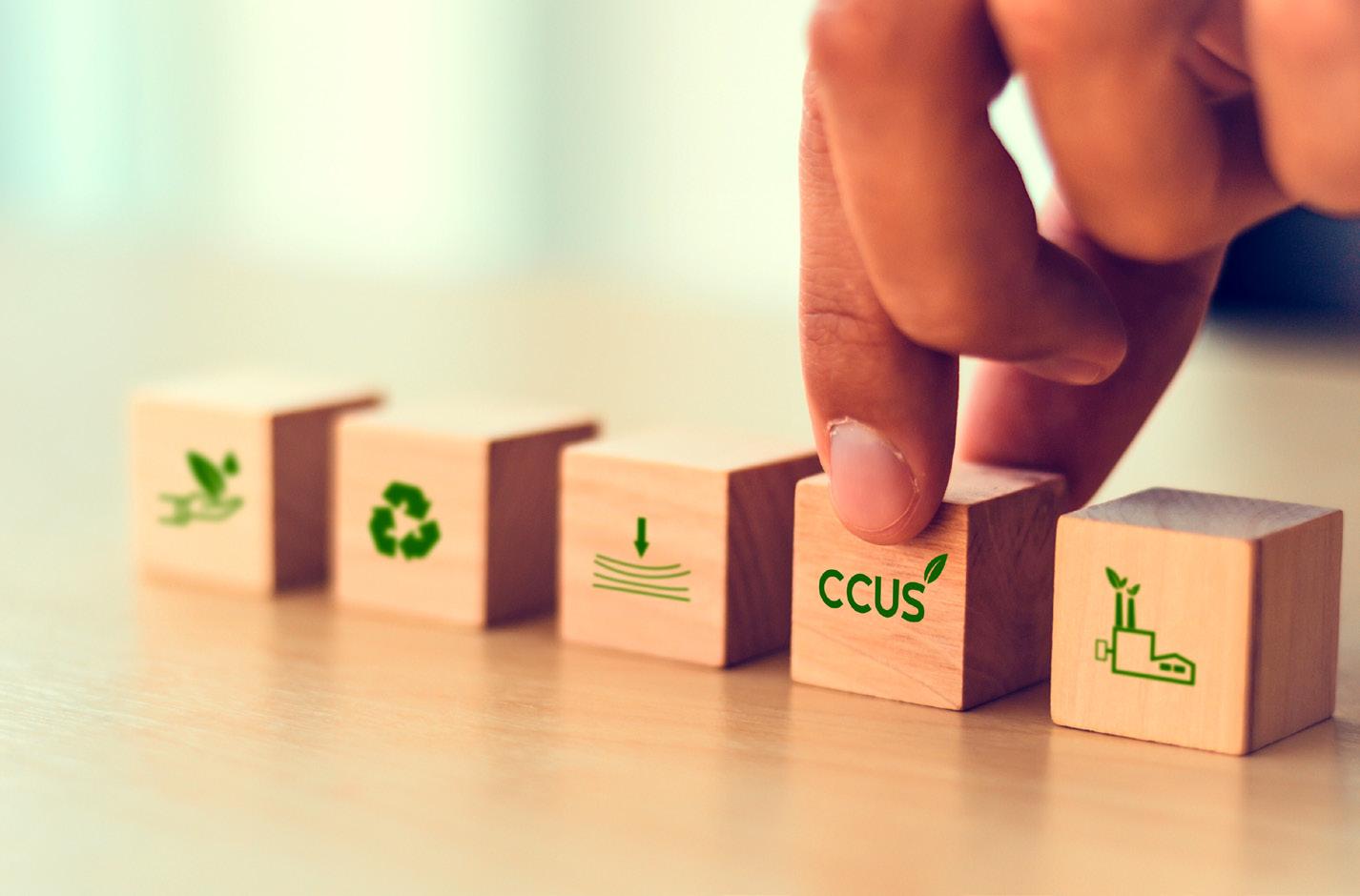
operations of OCCS, classification societies have taken action to address this need separately. They have developed guidelines and requirements to support the safe design and operation of OCCS on vessels rather than enhancing operational performance or efficiency. Most of these guidelines currently focus on chemical absorption technology, the most advanced method for onboard carbon capture.
While classification societies have taken great steps forward, there are still several topics that need further dialogue and consideration. For instance, it would be beneficial for the industry to agree on a standard method for managing impurities in captured CO2 . Additionally, establishing clear guidelines regarding CO2 toxicity, particularly for vessels not regulated by the International Code for the Construction and Equipment of Ships Carrying Liquefied Gases in Bulk, is another area for discussion.
For OCCS to gain traction, different stakeholders should collaborate actively.

Policymakers should consider incorporating OCCS into existing regulatory frameworks – such as the Energy Efficiency Design Index/Efficiency Existing Ship Index, Carbon Intensity Indicator – and the EU’s emission regulations in a clear and consistent manner. Offering financial incentives to offset the initial high costs and funding ongoing research will further help adoption.
Port authorities also have an important role to play. They should evaluate and upgrade port infrastructure to support OCCS operations, facilitating safe transfers and handling of captured CO2 from ships.
Shipping companies have the opportunity to advance OCCS technologies by investing in pilot projects and collecting real operational data. Additionally, integrating OCCS operations into existing safety management systems can be beneficial. A focus on crew training regarding these new systems will also be key to successful implementation.
The implementation of onboard carbon capture and storage presents a promising opportunity for reducing shipping’s greenhouse gas emissions and supporting global climate goals. However, achieving widespread adoption requires international regulations, a robust downstream infrastructure, and ensuring that efficiency is high and, thus, costs will be manageable.
Regulatory frameworks need to be carefully designed to ensure they complement broader decarbonization strategies and do not incentivize increased fossil fuel use by potentially focusing on existing vessels powered by fossil fuels, and the capability of OCCS to capture and potentially reuse CO 2 from bio-sources presents an opportunity to create more sustainable and circular fuel systems in the maritime industry.
MTF is a forum of flag states and classification societies established to provide technical and regulatory expertise to benefit the maritime industry. The role of the MTF is to work together on research that it publishes for the maritime sector and draw on regulatory expertise to be able to offer unbiased advice to the shipping industry. The flag state administrations include Maritime Bureau, Ministry of Land, Infrastructure, Transport and Tourism, Japan; the Norwegian Maritime Authority; the Maritime and Coastguard Agency, UK; and the Maritime and Port Authority of Singapore (MPA). The classification society members are ABS, DNV, LR, and ClassNK. Visit maritimetechnologiesforum.com to learn more.
GUIDELINES FOR THE DEVELOPMENT OF LIQUEFIED HYDROGEN BUNKERING SYSTEMS AND PROCEDURES

by Steven Gosling, MSc AFNI, Head of Information and Publications, The Nautical Institute
Over decades, if not centuries, the maritime industry has developed technical expertise, rigorous safety protocols, and the ability to navigate complex global supply chains. As the sector continues to evolve, it’s becoming increasingly clear that technical proficiency alone is not enough. So-called ‘soft’ or non-technical skills – such as communication, leadership, problem-solving, and teamwork – are now understood to be key to ensuring smooth operations, enhanced safety, and a positive working environment on board and ashore.
Interpersonal and emotional competencies enhance the ability to act appropriately during critical situations, adapt to diverse teams, and maintain clear communications. These skills can be the difference between success and failure; hence, they must not be neglected in a demanding industry in which the safety of crew and vessel is paramount.
At the heart of maritime operations lies the human element: the interactions, behaviours, and decisions of individuals and teams. While automation has streamlined many processes, it has not eliminated the need for decision-making, leadership, and interpersonal communication. Mariners must now work symbiotically with advanced systems, bridging the gap between technology and human intelligence.
Effective team management, critical thinking during emergencies, and the ability to foster a culture of inclusion are irreplaceable components of successful maritime operations. Safety is, in particular, closely linked to soft skills, making them essential. Clear communication, mutual respect, and shared decision-making can prevent accidents, reduce human error, and enhance overall efficiency.
When people are operating in isolated and high-risk environments at sea,
clear and effective communication underpinned by emotional intelligence is vital. Any friction within the team is also exacerbated by the need to work and live together for months at a time.
Poor communication has been identified as a significant factor in maritime accidents and operational inefficiencies. Many reports by the UK’s Marine Accident Investigation Branch reveal that miscommunication has contributed to numerous collisions and near-misses at sea. Clearly, effective communication is not something to take for granted but is a skill we need to develop. This can be done through training as well as experiences, such as respectful relationships, kind leadership, and mentoring.
An important element of soft skills training is embedding the concept of respectful relationships. Respectful behaviour should be set as a ground rule for all communications and professional relationships. Soft skills training provides participants with practical tools on how to engage with each other with respect –even when they disagree. These tools can include asking questions to understand the perspective of others instead of rushing to judgment in reaction to something said. Leadership and teamwork are, too, essential for maintaining morale and operational efficiency. Crew members must be able to work collaboratively, resolve conflicts, and adapt to challenging situations. In emergencies, strong leadership
and excellent team cohesion can make the difference between a controlled response and chaos. Being a strong leader does not necessarily mean being autocratic. Kind leadership embeds respect and empathy and fosters collaboration, effective communication, and performance improvements. Adopting such an approach can be considered a formal mentoring process since it builds everyone’s skills, both technical and soft.
Two-way knowledge transfer
One of the most effective examples of respectfully applying soft skills in the maritime industry is in the use of mentoring. The ocean has always been a challenging working environment, but today’s fast-changing technology and the introduction of novel fuels demand new skills from cadets and experienced seafarers alike. The key to handling these changes lies in one of the most time-honoured maritime traditions: mentoring.
Mentoring is crucial for cadets learning to navigate life at sea. Experienced crew members sharing real-world insights and practical knowledge through mentoring help bridge the gap between formal training and real-life operations. It is not only the less-experienced seafarers who can benefit from mentoring; senior officers adapting to new technology can also learn from the new generation, so a mutually respectful relationship develops.


Creating an environment where mentoring occurs naturally is essential. As such, The Nautical Institute has set seafarers a challenge to spend just 10 minutes a day calmly reflecting and sharing experiential knowledge and support with a colleague, and this knowledge can be paid forward to their juniors or seniors. This challenge is not only an invitation to be available to mentor someone else but also to be mentored and seek the wisdom of someone else, no matter their age, rank, or experience. The Nautical Institute published the second edition of Mentoring at Sea last year (and here you can find an introductory extract).
Ships today are more multicultural than ever, and working with colleagues from diverse backgrounds presents both challenges and opportunities. While language and cultural differences can
sometimes hinder effective communication, they also enrich and broaden the experience and skills on board. By fostering an environment of mutual respect and understanding, kind leaders and mentors can bridge cultural gaps, tap into a wide range of know-how, and create stronger, more cohesive teams.
A simple yet effective way to encourage inclusivity is by ensuring a common language is spoken aboard. Experience has shown that when crew members consciously make efforts to include all nationalities in discussions, mentoring and leading become more effective, overall teamwork improves, and people are simply happier.

This can improve the overall mental wellbeing of the entire crew.
Unlike technical competencies, soft skills are not easily measured or taught through traditional classroom methods. These competencies require interactive, experiential learning that encourages self-reflection and adaptation. For facilitators of soft skills training, the goal is to create an engaging and psychologically safe environment where mariners can explore these skills and apply them in real-world scenarios. Participants must feel free to question what they do not understand and believe that their desire to fill gaps in their knowledge is actively encouraged.
Senior officers and team leaders play a crucial role in this process. As role models leading by example, they have the power to instil essential soft skills in their crew. By recognising appropriate moments to mentor and guide their teams, such leaders can ensure that every member is equipped to handle challenges effectively.
Structured role play also has an important part to play in developing soft skills because it allows teams to practise resolving conflicts and explore how they will navigate disagreements in a simulated environment. There is also great value to be extracted from more formal teaching of soft skills. The graphic shown illustrates how different stakeholders can interact with each other during such sessions.
The maritime industry is at a crossroads. As technology advances, it’s imperative to remember that people remain at the core of every operation. Investing in the development of soft skills is not merely a nod to modernity but a strategic necessity that enhances safety, supports well-being, and drives organisational success.
By prioritising these often-overlooked competencies, maritime organisations can build a future in which every seafarer –whether on the bridge, in the engine room, or ashore – is empowered to lead, collaborate, and thrive. Soft skills are not just a complement to technical expertise; they are the bedrock of a resilient and progressive maritime culture. Let’s ensure soft skills receive the attention they deserve.
The Nautical Institute is an international membership organisation for maritime professionals, working at sea and ashore, and one of the sector’s leading authorities. We are an educational charity dedicated to promoting the highest standards of professionalism, best practice, competence, and safety in the maritime industry by providing professional development opportunities, training, publications, and accreditation. Visit nautinst.org to learn more.

by Przemysław Myszka
This year saw the 14th edition of Actia Forum’s Transport Week, an event that gathers transport & logistics professionals from across the Baltic Sea region and Central Eastern Europe to discuss what’s changing the industry from within & without. Key topics of the 2025 instalment included geopolitics (especially the tariff war brewed by the US), macro trends shaping the port sector (with a particular emphasis put on electrification), cyber security, the push towards clean industry by the new European Commission (COM), as well as an overview of the completed, ongoing, and planned investments of Poland’s three biggest port authorities. Day 2 hosted the Baltic Ports Organization’s (BPO) Baltic Ports for Climate conference, with onshore power supply (OPS) taking centre stage. Transport Week 2025 was topped with a tour to Gdynia Container Terminal (GCT) to showcase the company’s contribution to the green transition.
Day 1’s Session I, moderated by Sebastian Wróbel (Co-founder & Co-host, ETA.fm), was kicked off by Bogdan Ołdakowski (CEO, Actia Forum, and Secretary General, BPO), who listed a few factors putting pressure (for good or ill) on the port industry, including Russia’s continuing war of aggression against Ukraine (that impacts trade through, among others, sanctions), the new Trump administration moving forward with tariffs, EU elections that saw the formation of a new COM that intends to level up the competitiveness of Europe’s industry (hopefully, also ports), and the rapid advancement of technology (particularly artificial intelligence, AI, that seems to be squeezing itself into every possible nook and cranny of modern life & business).
Next was Maurycy Rzeźniczak (City of Gdynia’s Strategy Department), who presented the host city as a success story of a small fishing village-turned-port city, which today is one of the busiest on the Baltic shores. Like 100 years ago, Gdynia faces defining challenges (this time around the green transition, digitalisation, and creating the conditions for future-fit logistics), the tackling of which will see Gdynia either further blooming or stalling.
The final welcoming speech was delivered by Piotr Frankowski (Editor-in-Chief, Namiary na Morze i Handel ), who conducted a parallel session in Polish on the many a shade of cyber in maritime & logistics, from attacks (also state-sponsored) to opportunities (such as the deployment of AI tools for increasing the efficiency likewise sustainability of logistics operations).
Steve Wray (Head of Maritime Advisory, Infrata), a long-standing participant & supporter of Transport Week, delivered the keynote speech on global economy and trade. He underlined that both turned out to be surprisingly resilient given such systemic shocks as the Red Sea crisis or the closure of the Suez Canal. Shipping lines have reacted
to the situation accordingly, in many cases completely overhauling their schedules and making the route around the Cape of Good Hope a permanent feature of the East-West service network. Wray noted that even if the passage through the Suez will become safe(er), carriers might not necessarily feel inclined to re-route again. First, too much effort has already been put into crafting the new schedules; second, the longer voyage has revealed itself as a true profit dynamo as well as a means of employing the capacity overhang. Further pulling on the box trade thread, Wray put the spotlight on container alliances, yet again reshuffling the deck. The Gemini co-op between Hapag-Lloyd and Maersk is a hot topic for the region in particular, as it has resulted in the drop of direct calls to Baltic Hub by the ‘Light Blue’ with the use of the company’s biggest carriers, which will feed the volumes with 10-thousand-TEU shuttles instead. Nobody really knows how this will play out in the end, traffic size- & time reliabilitywise. What is certain, Wray shared, is that no carrier is able to single-handedly fill their fleets of 24k-TEU vessels on the Far East-Europe/US trades for the time being (with such ships, in his opinion, also being the upper capacity cap for the foreseeable future). Despite the new/ old tariff war, Wray continued, there is actually no data to corroborate that deglobalisation is a thing. Trade, like water, finds its way; though China appears to be somewhat stagnating, Wray highlighted, trade will come from other corners of the world, most likely from India and other Asian economies in the European case. Speaking of our continent, the following presentation saw Isabelle Ryckbost (Secretary General, European Sea Port Organisation) exploring what’s in store for Europe and its new COM in times when the increasingly polarising ‘world order’ is under growing pressure, with uncertainty governing. Once again in the seat of COM’s President, Ursula von der Leyen is keen to continue the EU’s
path towards greater sustainability, though the current tenure will put the accent on industry – its cleanliness, competitiveness, and resilience. But what makes European people blink more rapidly is also taking a more ‘Marie Kondo’ stance on regulations & reporting, including the hope that this ‘decluttering’ will speed up project execution. However, that is something we have yet to witness. The proposed EU budget reform will see the move of considerable funds onto the national level. As such, the transport industry has been more than concerned whether this entails the decimation of its envelope under the Connecting Europe Facility (CEF) – or even a complete curtain call on CEF. Ryckbost underscored that transport needs a Europe-level approach, both for its own sake as well as that of military mobility. Luckily, she furthered, rumour has it that CEF’s neck will be saved after all. With the new Trump (Musk?) cabinet intending to move like a wrecking ball in a dollhouse, Europe finds itself not so much ‘encouraged’ but forced to re-arm likewise to strike new bonds. A free trade deal with India is already on the horizon; in the interim, the EU has ramped up its economic diplomacy also elsewhere (Japan, South Africa). That and the warming up of relations between Brussels and London – now, who would have thought of that! Ports – Ryckbost continued her analysis –find themselves in between three distinct directions. They need to play their part in the EU’s climate game, at the same time, being resilient (which, apart from good-ol’ cargo handling and passenger traffic, means, among many other things, also a sharper focus on cyber & physical threats), and be prepared to assist the military if need be. Now, Ryckbost stressed, traditional resilience is alone enough to rob the port companies’ night of its calm. While, certainly, even the smallest seaports can green up their ante, not all will have a power-to-x facility sitting



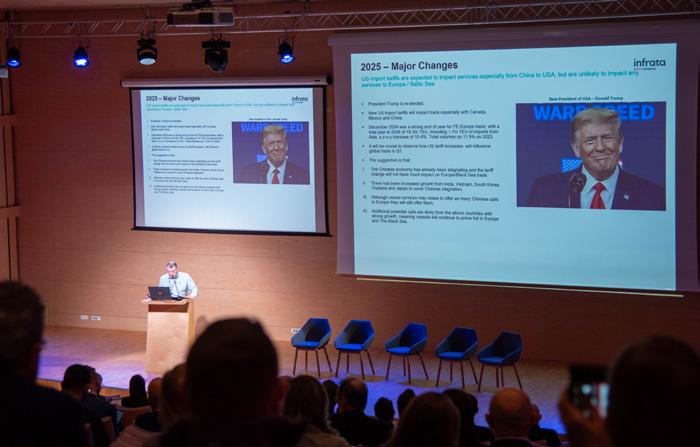
next to a naval harbour that rests against an AI-driven automated freight terminal, the fence of which is close to a modern ferry/cruise facility that’s rich with hi-end cold ironing stations (powered by a nearby wind farm, served, naturally, from the port’s operations & maintenance base). Seaports need to specialise, and the EU’s policy (and funding) should reflect and support that.
Next was Christopher Stein (Independent Cybersecurity Expert at “I cannot tell you what company I’m working for”). He presented the perils of transitioning to computer-based systems, which are nowadays in everything, even pumps and flow meters. This analogto-digital shift has resulted in less simplicity and heightened vulnerability. Stein underlined that this isn’t the case for cyber attacks only; poor software quality can lead to as much damage (including unintentional by system
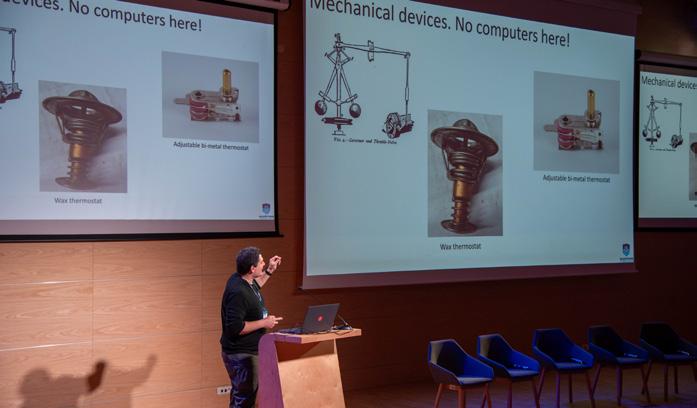
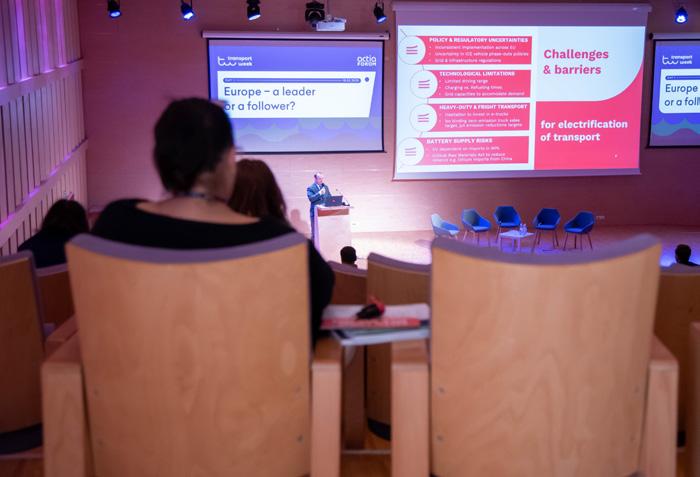

users themselves). He presented the cyberphysical inter-linkage by demonstrating how ships’ engines can be killed via simple software manipulation. Changing only one parameter in the vessel’s cooling & heatexchange system can shut down the engines in a manner of seconds. To add insult to injury, while presented with such a scenario, most of the crews could not detect what was wrong, never mind remedying the situation as it slid off the rails. Because software is something put together by a human, it’ll always contain ‘bugs.’ The aim should be to minimise those from the very start. Cyber, Stein emphasised, is no longer an option but something that should come by design, something that is constantly improved in a virtuous cycle of designing-testing-engineering.
Session I saw its conclusion in a debate, whose panellists were Ewelina Ziajka (Senior
Key Account Specialist, Port of Gdynia), ESPO’s Isabelle Ryckbost, Ralf-Charley Schultze (President, International Union for Road-Rail Combined Transport), and Czesław Ciesielski (Forwarding and Transport Specialist, Polish International Freight Forwarders Association). The discussion revolved around port development, with Gdynia serving as a permanent ‘construction site’ case study as the current in-city seaport needs to move closer to the sea to find room for future growth. Ryckbost confirmed, painting the bigger €80-billion-of-investment-needsbetter-now-than-tomorrow picture. Finance is one already hard-to-check-off thing, she added, with paperwork (especially obtaining permits) only rubbing salt into the wound. Legislative hygiene could certainly speed up things, she added. Schultze went through the pain points of shifting more cargo from


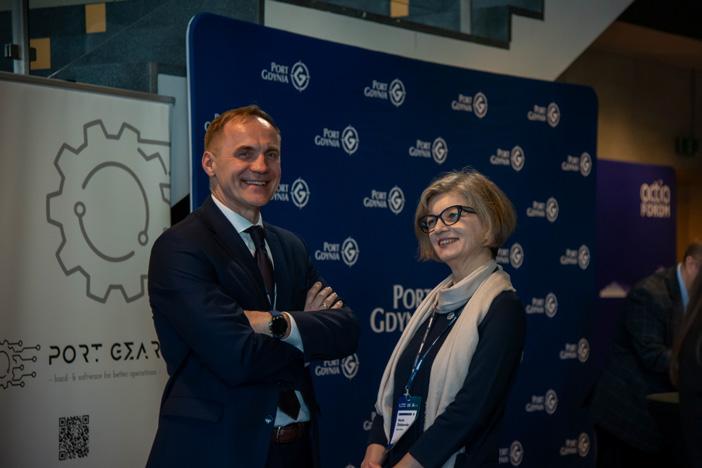

roads to rails in Europe, including the lack of playing field between different transport modes (read: trucks have it better), digital underdevelopment when it comes to interoperability, and the EU’s sometimes shortof-the-mark modal shift incentives (such as when the Marco Polo funds were eaten up by particular companies’ operations, read: price dumping, whereas rail money should chiefly be spent on infrastructure). Then again, Ciesielski noted, road transport isn’t all sunshine & rainbows. It is a business that’s particularly vulnerable to trade slumps, not to mention the ever-deepening issue of truck

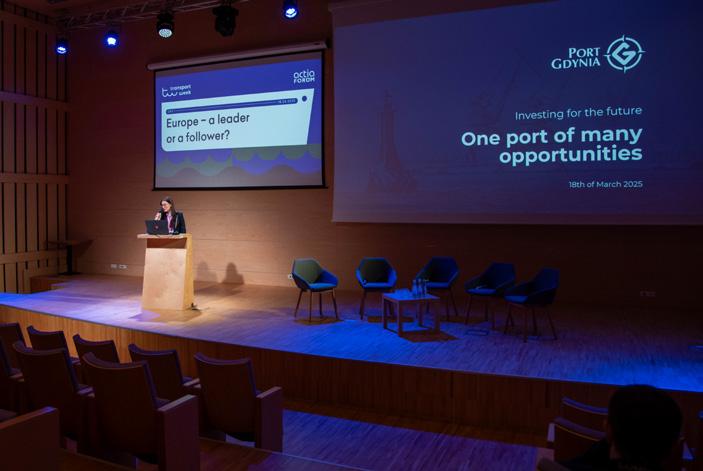


driver shortage, to which nobody has a clear solution as things stand today.
Session II, curated by Maciej Matczak (Professor, Gdynia Maritime University), was set in motion by Monika RozmarynowskaMrozek (Head of Consulting, Actia Forum), who presented five overarching trends that will most probably leave the biggest imprint on port development in the next two decades. First, the green transition, with seaports in the Baltic increasingly preparing to cater to the expected offshore wind energy (OWE) boom while also investigating alternative fuels and getting more OPS stations online.
Second & third, the growing economy and vessels getting bigger will both require more & better infrastructure, especially for taking care of containers. Fourth, energy security. Here, Rozmarynowska-Mrozek put the spotlight on the ongoing demand for more liquefied natural gas (LNG) import capacity in the Baltic. Lastly, geopolitical tensions that will lead to setting up dual-use infra- and superstructures in ports, such as heavy-duty ro-ro ramps capable of bearing military vehicles.
The remainder of the session was split between the representatives of Polish seaports. First was Gdynia’s Ewelina Ziajka,

who elaborated on Rzeźniczak’s welcoming speech, showing how the port is yet again growing from scratch. The Outer Port is Gdynia’s flagship project, developed to handle more containerised freight (coming on board those 30k-TEU Baltmaxes of the future) but also OWE shipments as well as cruise traffic (to uphold Gdynia’s position as Poland’s prime and one of the Baltic’s most attractive destinations for cruisers). Apart from that, the Port of Gdynia intends to grow in other areas, too, most notably in grain turnover (being already the region’s Top 1 spot for handling cereals) and liquid bulk.
Maksymilian Czapiewski (Account Manager, Port of Gdańsk) showcased what it’s like to have to develop an inner and outer port already. Whereas the latter accounts for around 85% of Gdańsk’s cargo traffic, the former houses numerous terminals without which Poland’s imports & exports would be seriously hampered. As such, it isn’t the case of a forkin-the-road investment decision but having the panache to carry out projects (counted in millions of euros) all over the place. Gdańsk, boasting the title of Europe’s fastest-growing seaport in the last decade (+140% in freight flows), is working to get more cargo (dry bulk in the Inner, containers and liquids, including LNG, in the Outer Port) as well as cut its slice of new port businesses, like OWE (e.g., the 1.5-gigawatt Baltica 2 farm of PGE and Ørsted will have Gdańsk as its installation base). The Port of Gdańsk will also invest in digital solutions (traffic management systems) to improve overall performance.
In what was probably the most dynamic presentation of the entire event, Rafał Zahorski (Management Representative for Ports Development, Ports of Szczecin & Świnoujście) not so much focused on developments in his seaports but traced how far & wide a port’s influence goes as well as how advancements in other areas around a port impact it (such as the booming onshore wind energy sector in Western Poland, making it already the greenest region in the country power generation-wise, something that earned it the Little Denmark nickname). That said, Zahorski also highlighted the ongoing & planned investments in both Szczecin and Świnoujście, among others, in dredging the ports’ canals & fairways to welcome bigger ships (also barges in traffic with Berlin), land preparation (1,000 hectares in Szczecin alone for dual-use purposes), rebuilding what’s Poland’s busiest ferry terminal (equipped with OPS), working on the deep-water container terminal in Świnoujście, and playing a part in setting up the cargoprioritised CE-59 railway all the way to Czechia for up to 740-metre-long trains (particularly for 100 km/h+ intermodal transports).
Session III, oversaw by Sandra Baniak (Senior Research Fellow, Centre for Eastern Studies), got rolling with Krzysztof Krawiec (Advisor in the Climate and Energy Team, Polish Economic Institute) who talked about electrification – not for its own sake but as a decarbonisation tool. Since the transport industry is responsible for 24% of the EU’s emissions – and out of that, road transportation scoops 72% – and it’s the only sector which made its carbon footprint bigger over the past 30 years, it’s a small wonder that it is being urged to green its operations. However, Krawiec noted there are other benefits to tick off, such as breaking Europe’s dependency on imported fossil fuels and decreasing air pollution. Yet, electrification will come with its own set of unique challenges, among others, the risk of creating another orbit of obligation – this time concerning import batteries, sufficient grid capacity, and e-truck prices as well as their range limitations and charging times. Krawiec mentioned that Europe needs at least 80 thousand electric lorries by 2030, heading towards all-electric road transportation by mid-century.
The e-topic was furthered by Per G. Olovsson (Area Sales Manager – Ports & Maritime, Cavotec) and Anders Colliander (Key Account Manager, also Cavotec), zeroing in on OPS and automooring. They went through the benefits these pieces of technology offer, including the reduction of emissions, air & noise pollution, vibrations, and getting rid of mooring rope accidents. One of the main present-day obstacles with OPS is the fact that there are more vessels capable of cold ironing than ports where they can ‘plug in.’ Asked about whether the automation of mooring results in an environmental gain, too, Colliander answered that with the help of DNV, Cavotec has developed a calculator that computes the emission reduction for a shipping service that auto-moors (saving time on mooring can, e.g., enable slower steaming)
Day 1 ended with a panel discussion that featured Jan Jarmakowski (President of the Management Board & Managing Director, Gdynia Container Terminal | Hutchison Ports Gdynia), Džiugas Šaulys (Head of Marketing Department, Port of Klaipėda), Erik Eskling Hansen (Business Developer, Port of Ystad), Orkun Saruhanoglu (CEO Central & Eastern Europe, DHL Supply Chain), and Andrius Sutnikas (Business Development Manager, Klaipėda Science and Technology Park/ Western Baltic Engineering). Here, too, the debate centred on electrification. Jarmakowski detailed Hutchison Ports’ aim of becoming zero-emission by 2050, with its Gdynia facility doing all it can to hit that target considerably faster. To that end, GCT has been electrifying
its operations since 2012. The newest progress involves purchasing seven e-RTGs, while the remaining seven will be retrofitted (a challenging task, Jarmakowski admitted, as these come from different manufacturers, and each machine will be, in a sense, a separate mini-project). GCT will also invest in charging infrastructure and see its fleet grow with electric reachstackers and terminal tractors. Šaulys said that the recent focus on energy projects is something completely new for the Lithuanian port authority. As such, seaports need expert support and, in many cases, are trailblazing the path (e.g., regarding hydrogen generation & consumption, there were no national regulations in Lithuania, and relevant standards had to be ‘borrowed’ from Germany). Notwithstanding, the Port of Klaipėda is gearing towards not only hydrogen but also OPS and supporting the development of OWE off the country’s coast. As part of the overall electrification trend, Šaulys furthered, Klaipėda will see its power demand rising by 218MW from today’s 48MW due to cold ironing and stevedores exchanging their diesel equipment in favour of electric one. Sutnikas agreed that energy projects require a lot of brain power. In addition, ports engaging in such initiatives should go outside their fences to make them more attractive economically (so as not to trickle the costs of green transition down the logistics chain), e.g., by scrutinising how this-and-that project could also serve as power storage or help in power balancing. Saruhanoglu agreed, pointing out that what we cannot measure – we cannot develop, so expert brain power should be put to good use, e.g., to calculate future green energy demand. After all, purchasing those e-trucks that are much more expensive than diesel ones would make no sense if the charging stations turn out to be ‘dry.’ Hansen shared Ystad’s story of investing in OPS already back in 2012, a time when cold ironing wasn’t on COM’s ‘sexy tech’ list. OPS can really be a tough sell if one only factors in the economic side of things; the lowering of emissions and pollution should be mentioned in the same breath. From earlier Transport Weeks and other conferences, we know that the Swedish seaport is quite tenacious in advocating in favour of using OPS – even if it sometimes forced Ystad to bear the brunt of paying (for others) for lowering the local impact on the environment. Nowadays, Ystad is looking into battery technology and will invest in charging stations (both in response to market demand and to encourage truck fleet renewal).
Day 1 of Transport Week 2025 ended with an evening cocktail, where the participants could wind down by the seaside ahead of an electric Day 2!

by Przemysław Myszka
Day 2 of this year’s Transport Week, which took place on 18-19 March in the Pomeranian Science and Technology Park Gdynia, was all about onshore power supply (OPS) and the various shapes it could take so that ships can ‘plug in’ greenly. The topic was broadened by Gdynia Container Terminal (GCT), which presented how it is electrifying its operations towards becoming net-zero.
The conference’s Session I, moderated by Dorota Książkiewicz (Assistant Professor, University of Gdańsk), got started with Hanno Bromeis (Head of Port Energy Solutions, Port of Hamburg), who shared the German port’s ongoing OPS story. Hamburg has begun its cold ironing journey by setting up OPS stations for container ships and cruisers. Here, Bromeis detailed how each facility had to be tailored to align to specific designs & constraints of each & every berth (fixed/ mobile, mounted on the quay/in front of it, etc.). He also underscored the importance of the OPS-handling staff, with Hamburg employing certified high-voltage electricians who could ensure the efficient and safe use of the multi-million equipment. Bromeis also elaborated on the delicate diesel vs electricity price and how Hamburg went above & beyond to make the latter as favourable as possible (among others, in Germany, one pays for the availability of electricity for OPS on a particular day demand basis, unlike in other countries where a port authority has to pay for an entire year in advance, hence also for days where an OPS station sits nothing but idle). In this context, Bromeis believes that shipping’s shift to alternative fuels will tilt the advantage in favour of OPS.
Next was Mikołaj Magiełka (Commercial Manager, GCT), who presented his company’s greening activities against the wider background of the entire Hutchison Ports
Group. While the parent organisation plans to lower its scope 1+2 emissions by 54.6% and scope 3 by 32.5% by 2033 towards carbon neutrality by the middle of the century, GCT wants to tick those boxes a lot faster. To that end, the container handling terminal seated in the Port of Gdynia purchased seven all-electric RTGs and tendered the retrofit of the other seven. Other heavy-duty vehicles in GCT’s fleet, such as reachstackers and tractors, will be replaced with electric ones in due time. Asked about whether GCT isn’t simply exporting its emissions over the fence to the power station, Magiełka confuted by saying that some 90% of the energy his company purchases is already green today. He also underscored that maintenance of e-machinery is less expensive than that with a diesel engine.
The opening session closed with the Many faces of port operations’ electrification – it’s not just about OPS discussion panel, featuring Riina Palu (CEO & Lead Consultant, Saaresalu), Ernest Czermański (Professor & Head of the University of Gdańsk’s Faculty of Economics’ Maritime Economy Division), and Lawrence Henesey (Assistant Professor, Blekinge Institute of Technology). Palu echoed what ESPO’s Isabelle Ryckbost mentioned during Transport Week’s Day 1, namely that seaports have found themselves tasked not only with their traditional role of logistics efficiency caretakers but now also cogs in
the green as well as resilience (military) machines – and it’s not that port authorities could just like that pull finely tuned contingency plans from the drawers. There is a whole new set of competencies they have to develop. Regarding electrification, she furthered, this situation, coupled with high electricity prices and grid disturbances, prods ports to seriously think about becoming energy-autonomous (as a case in point, the same week the conference was held, one of the Baltic Ports Organization’s Members, the Port of Trelleborg, started operating its own onshore wind farm; the two turbines are expected to generate three times more the Swedish seaport’s yearly energy demand, including its already extensive OPS network). Henesey said that not all ports could shoulder the investment costs of electrification, a notion that certainly rings a bell throughout the Baltic Sea region that’s peppered with small (and smaller) harbours. One project he partakes in is focused on scaling technology, so it comes within such ports’ reach. Czermański pointed out another specific downside to OPS, namely that certain shipping sectors simply aren’t interested in it. To counter this attitude, regulations or incentives are necessary.
Session II, run by Yash Kotak (Technical Head, Technische Hochschule Ingolstadt), was devoted to the HYper POwered vessel BATTery charging system (HYPOBATT),





an EU-supported project that brings together 18 players from the European maritime sector. HYPOBATT will see a real-life demonstrator: the electrification of a ferry service between the ports of Norddeich and Norderney. Further goals of the initiative include the standardisation of the fast charging system for ferries as well as the development of new business models for battery-powered boats, all to make e-ferry operations safer, faster, and more sustainable



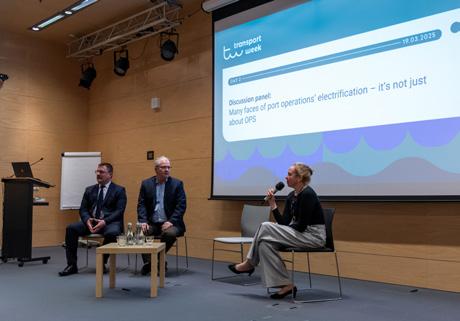
at other locations in the future. As such, George Kostalas (Maritime Project Manager & Co-Founder, Rhoé) talked about the digital twin developed within HYPOBATT to optimise the OPS set-up, both on the shoreand the seaside (e.g., it can be used to adjust the charging power to preserve the life of batteries). Patryk Czerwiński (Product Marketing Manager, Wabtec) shared his company’s involvement in the project, especially in developing the charging station
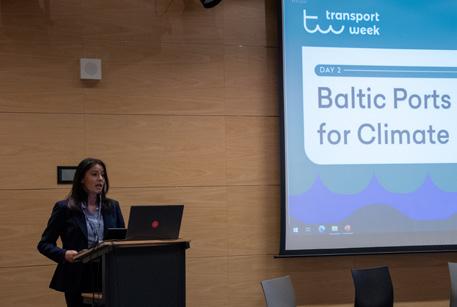
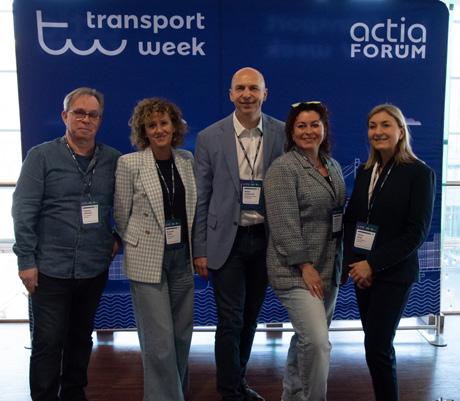
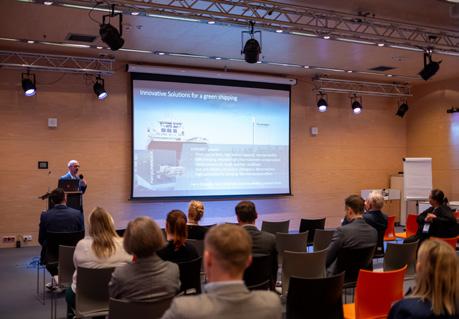
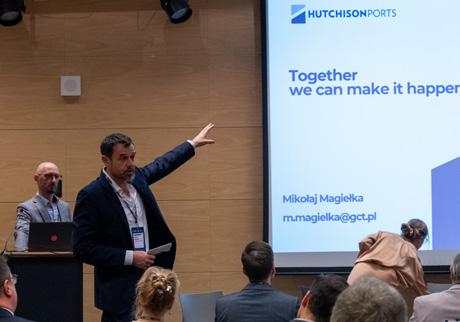
(among others, an innovative decoupling solution that breaks the connection in a manner of two seconds and, what’s crucially important, without causing an electric arc that might set the equipment on fire).
Day 2 of the 2025 edition of Transport Week took the conference guests to GCT for a close-up view of the company’s greening efforts. And with that, the event got signed & sealed – see you again in Northcentral Poland next year!

by Hari Sundar Mahadevan, Research Scientist, Fraunhofer Center for Maritime Logistics and Services CML
Digitalization and automation are revolutionizing the maritime industry. Technologies used in the industry are constantly improving and evolving to optimize efficiency, safety, and sustainability. Shipping operators and navigators worldwide are increasingly embracing and relying on sophisticated digital systems like the Electronic Chart Display and Information System (ECDIS). While these technologies offer various advantages – such as real-time data integration, improved data management, and automated updates of navigational charts – adopting new tech solutions brings forth a myriad of challenges, which can paradoxically compromise safety if not managed properly.
With approximately 90% of global trade being conducted via sea routes, the maritime industry’s technological evolution directly impacts international shipping efficiency and safety, reports OECD. Advanced navigation systems significantly enhance operational capabilities. However, their complexity, huge amounts of data, and non-intuitive user interfaces can overwhelm operators in stressful scenarios. This creates a disconnect between available information and effective decision-making, increasing the risk of out-of-loop syndrome.
In the domain of maritime safety, recent studies indicate an inverse relationship between system complexity and situational awareness , a concerning trend for an industry where navigational errors can have severe environmental and economic consequences. This has inspired the study and development of innovative training and assessment approaches that specifically address the unique challenges faced by navigators in the digital age. By helping them become better familiarized with the system, situational awareness improves.
Fragmented attention & impeded understanding
Situational awareness – the ability to perceive environmental elements, comprehend their meaning, and project their status into
the near future – forms the foundation of safe maritime operations.
This cognitive process occurs across three critical levels. First, perception: gathering sensory data to form a mental image of surroundings, particularly challenging in frequently poor visibility conditions. Second, comprehension: integrating this data with theoretical knowledge to assess the situation’s significance, essential when navigating complex waterways. Third, projection: anticipating future developments based on current understanding, crucial when operating in high-traffic shipping lanes.
While driving around on a cycle, we must be aware of our environment, like traffic signals, nearby vehicles, pedestrians, and road conditions, to navigate safely. We process all the visual and auditory cues from the environment, like the color of the traffic signal or the sound of a moving vehicle to evaluate our next move, which could be going straight ahead, changing speed, braking, or manoeuvring around an obstacle to move safely and efficiently. Similarly, navigators must also be continuously aware of their surroundings – just that the scale, speed, environmental variables, navigation systems, decision making and communication are far more intricate and complex.
For navigators working with ECDIS, maintaining situational awareness presents unique challenges. The system’s layered
information, customizable settings, and manufacturer-specific interfaces can fragment attention and impede comprehensive understanding. This fragmentation is particularly problematic in situations where a rapid response is required.
To address these challenges, a specialized Situational Awareness Assessment Tool (SA Tool) has been developed, with applications for enhancing maritime safety globally. The tool employs the Situational Awareness Global Assessment Technique (SAGAT), specifically adapting it to maritime navigation scenarios. SAGAT uses the freeze frame probe technique to compute the situational awareness (SA) rating
Here, the manoeuvring task being performed by the participant on the ship simulator is frozen at random intervals, and questions pertaining to the situation are presented to the assessee. The assessee must respond within a fixed duration. The responses are recorded for evaluation and SA score calculation. This technique is applied multiple times for each assessee across different scenarios and questions. The random freeze frame timing makes SAGAT one of the SA assessment techniques with the highest correlation to real performance due to its higher validity and statistical stability.



This approach allows for objective measurement of situational awareness across various ECDIS interfaces and operational scenarios that mirror real-world navigational challenges.
The SA Tool comprises several integrated components. The Tracker Application facilitates communication between the simulator and assessment tools, ensuring accurate tracking of the vessel’s position and performance metrics. The User Map Interface visualizes situational awareness questions directly on the electronic nautical charts, providing a geographical context that is especially valuable when training for navigation in complex waterways. The Simulation Control Tool streamlines the management of simulation scenarios by automating processes such as starting, stopping, and freezing the simulation based on participant selections; it assigns predefined scenarios, determines the timing of freeze intervals, and loads scenarios into the ship handling simulator for evaluation. The Question Control Tool manages the dynamic presentation of questionnaires based on scenarios and individual participant experiences.
It presents questions after each freeze, requiring participants to rely on their recollection. A unique challenge for this tool is accurately calculating the answer options for each participant based on their individual navigation experiences. The tool evaluates answers for adherence to COLREGs and collects data for further processing, including participants’ confidence levels for each question.
Experimental validation of the SA Tool involved 60 participants working across three different ECDIS systems, with 20 participants assigned to each. All navigators completed predetermined scenarios while responding to situational awareness questions during freeze intervals.

The results revealed significant differences in situational awareness scores between the three ECDIS systems, highlighting how interface design directly impacts navigational decision-making. This finding has relevance for shipping companies and training institutions as they select and implement navigation systems.
Participant feedback indicated a strong acceptance of the assessment methodology, suggesting potential for wider implementation across maritime training programs. Comparative analysis across different ECDIS systems provides valuable guidance for shipping operators making technology investment decisions.
The integration of digital tools in maritime operations is increasing, creating both opportunities and challenges for maintaining situational awareness. The SA Tool represents an important step toward ensuring that technological advancement enhances rather than diminishes safety margins.
Future developments may include incorporating machine learning techniques to refine assessment methodologies and create more personalized training experiences. This approach would be particularly valuable in international shipping, where navigational conditions vary dramatically by region, season, and vessel type.
Ongoing collaboration between technology developers, maritime educators, and operational personnel will be essential to evolving both the assessment tools and the navigation systems themselves. By prioritizing situational awareness in system design and training protocols, the maritime community can leverage digital transformation to enhance rather than compromise safety.
For the international shipping industry, with its environmental responsibilities and economic significance, these developments represent a crucial investment in sustainable shipping practices and global prosperity.
I completed my M.Sc. in Information and Communication Systems from the Technical University of Hamburg, specializing in communication networks, digital communication, and IT-security. As a Research Associate at Fraunhofer CML in the Sea Traffic and Nautical Solutions department, I focus on developing situational awareness assessment tools to enhance safer maritime operations. I oversee largescale simulation networks and enable real-time data transmission between ships and shore-based systems. Additionally, I design back-end architecture for shore-based systems to improve functionality and efficiency.

by Devon Van de Kletersteeg, Ports and Industrial Product Growth Manager, CM Labs
Across industries all over the world, trust is an essential part of operations and leads to a wide range of benefits. These, according to a study published in the Harvard Business Review, include a 40% decrease in burnout, a 50% boost in productivity, and 13% fewer sick days among employees. But knowing that trust is important is one thing; building it is quite another.
In our recent webinar, Bridging Gaps in Training: Workforce Engagement, Safety, and Technology, the CM Labs team spoke with industry veteran Capt. Richard WA Brough, OBE, BA, for his insights on how to foster trust, enhance workforce engagement, and improve safety in a port industry environment. “My experience over many, many years – and it hasn’t changed in the 50+ years I’ve been working in the industry – is that there is a lot of mistrust,“ says Brough. “Not just in our industry, the ports industry, but in every sector. The managers don’t trust the supervisors, the supervisors don’t trust the workforce, and the workforce doesn’t trust either the managers or the supervisors.”
So, what concrete actions can a port take to build trust? Here is a look at how to earn – and maintain – trust among all levels of port operations.
According to the landmark Experiences of arrangements for health, safety and welfare in the global container terminal industry study by Cardiff University, safety incident rates increase alongside worker disengagement. Improving employee engagement is an important first step to building trust. Because when employees feel heard and understood, trust follows. “You need to engage every level of the organization in what you’re planning to do,” points out Capt. Brough, “be that a simple operation or introducing new technology or a new training program.”
Take, for example, overhauling a training program. Involving operators and trainers from the very beginning ensures that their perspectives are heard and accounted for. What challenges
do trainers face? What concerns do operators have? What approach would best address each group’s goals? Engaging all levels of the organization helps ensure changes made will have a meaningful impact on training outcomes. “Everybody needs to understand what their part in that program is and what they will get out of it because everybody’s mindsets are totally different,” underlines Brough. “The manager and the supervisor and the guy driving – or the lady driving – the forklift truck are thinking about totally different things.”
To foster engagement, ports can use transparent and open communication that encourages the exchange of different perspectives. When overhauling a training program, for example, it’s important to include everyone in the decision about bringing in new technology, such as training simulators. This can be as simple as having operators test different simulators ahead of procurement or meeting with trainers to see which training management features they would use most. Listening to each of these perspectives helps find a solution that will work for all while also fostering buy-in.
“Trying to break down those barriers and help people understand what’s going on in the other person’s mind can help them to engage,” notes Capt. Brough. If trainers feel sceptical about a novelty, their involvement in the procurement process can help address concerns and ensure adoption. Because without their involvement and endorsement, there’s a real risk that a new approach or tool will go unused. He adds, “If you can’t get every level of an organization that’s going to use the technology – or the equipment or the training – to understand why they’re doing that and what its usefulness is to them and not just the company, then it will fail.”



Trust and safety also go hand in hand, and building one is an important step to building the other. After all, if a worker can’t trust that their employer values their safety, why would they trust them in any other capacity? To improve safety and build trust, ports need to take a careful look at their training programs. “You can’t separate training from safety,” stresses Capt. Brough. “They’re an integral part of each other. If you want to have safety in the port, people have to be well-trained.”
In fact, according to the Engineering Safer Workplaces: Global trends in occupational safety and health report by Lloyd’s Register Foundation, “The more recently people have had training, the more likely they are to report workplace harm if they experience it.” The report even found that, “Individuals who had received workplace safety training in the last two years are 3.3 times more likely to report harm, compared to those who had never received any.”
But what does stellar safety training look like? For one thing, it should be continuous. “Training has to be a package, a whole-of-life package that works from induction all the way through to senior levels,” says Capt. Brough. “And some companies tend to forget that. You cannot stop training. You’ve got to keep it going. It’s a continuous process.”
Many ports have also begun to use simulation as a part of that process. Why? Because with a simulator, operators can practice and prepare for dangerous scenarios that would be too hazardous or difficult to practice on real equipment. “With simulation training, you can create infinite scenarios,” highlights Brough. “You can suddenly change the weather, or you can do something else, which makes it difficult for the operator.” Trainers can introduce a sudden twistlock failure, among others, or a container snag into a simulated exercise, giving operators exposure


to these problems and preparing them to respond appropriately when faced with these situations in the real world.
Simulation training also supports continuous training efforts. An operator can hop on a simulator during downtime and run through exercises to improve their skills on their own, with or without the supervision of a trainer. Simulation training also provides detailed data on operator performance, which helps identify weaknesses. “Simulation makes targeted practice easy to do,” notes Yannick Lefebvre, Technical Sales Manager and my colleague here at CM Labs. “You can practice the same exercise over and over to get it right and track how performance evolves over time.”
Trust is deeply intertwined with employee engagement and safety, with each aspect influencing the other. Breaking down barriers to open communication can take time, especially when they are ingrained in the work culture. However, by fostering open communication and promoting engagement at all levels, ports can begin to build a culture of trust and collaboration. Enhancing safety training further bolsters that trust, leading to a work environment where employees feel motivated to do their best.

Devon Van de Kletersteeg is a Product Growth Manager at CM Labs who leverages his engineering background to drive market expansion and product alignment. He focuses on addressing real-world training needs with simulation technology, ensuring CM Labs’ solutions continue to evolve and drive measurable results across industries.

by Mano Szollosi, Marketing & Communications, PortXL
PortXL was founded in 2015, when there were virtually no accelerators in the industry, to be an independent, yet interconnected beacon of innovation within the Port of Rotterdam ecosystem. With the crucial support of the Port of Rotterdam Authority, Van Oord, the City of Rotterdam, and many other key industry players over the past decade, 132 start-ups have been part of PortXL’s acceleration program with an impressive 83% survival rate, and over €191+ million of funding has been raised by the alumni, figures that contradict the ephemeral trajectory that disruptive companies usually experience.
“ The maritime stakeholders knew that innovation was important and that you had to start working with start-ups to keep the business relevant – but no one knew how to do it. That is why many parties wanted to be involved from the beginning,” recalls Christel Pullens, ad interim director of PortXL. The newborn, inspired by the Dutch new tech accelerator HighTechXL, became the first one to specialize in start-ups within the maritime and port sectors.
Adjusting the focus
PortXL provides an intensive threemonth acceleration program for a select cohort of 8-15 start-ups chosen from a competitive pool of several hundred applicants. For the 2024 cohort, approximately 800 companies underwent validation. The selection is predicated upon alignment with the strategic priorities and operational challenges identified by PortXL’s partners, which reflect the broader maritime-port exigencies.
PortXL’s annual cycle begins with individual consultations with each partner
to identify their upcoming goals and key challenges. This information is then used to determine the program’s focus for the year. These strategic priorities are synthesized into a comprehensive framework, addressing salient issues such as sustainability, energy transition, and operational efficiency within the maritime and port industries.
The landscape has changed substantially since 2015. Virtually all the world’s leading ports now have their own accelerator or associated programs. In the case of PortXL, some of the partners that were initially part of its founding parties have even created their in-house start-up programs, such as Boskalis and Van Oord. “Our mission is to positively impact the maritime industry, so the more accelerators that focus on driving sustainable practices, the better. We actively collaborate with many around the world and also exchange start-ups,” Pullens says. Although the network of accelerators has grown in the past 10 years, PortXL remains attractive to start-ups. According to Pullens, it is a question of reputation and the
accelerator’s neutral character: PortXL does not intervene in the start-ups’ shareholding or impose quotas in the event of their success. “We want to see start-ups succeed and their innovation flourish,” she underlines.
During the accelerator’s 10-year course, Pullens has recognized the corporation’s struggle with innovation implementation. As such, PortXL has developed a dedicated training – Innovator in a Day – for maritime companies interested in setting up a structural innovation process and collaborating successfully with start-ups or scale-ups.
Doctor Antri Theodorou, Senior Associate Scientist at the Cyprus Marine and Maritime Institute (CMMI), shared her thoughts in this area, “PortXL is known for its strong, meaningful partnerships and collaborations within the maritime industry. The insights gained from the Innovator in a Day program are particularly valuable, complementing the ongoing efforts of CMMI in the realm of blue ocean innovation. PortXL’s strategic approach to innovation and collaboration with start-ups will significantly contribute


Smart-Ship (2019). By integrating force-feedback technology in maritime controls, Smart-Ship leads the way in sustainable maritime operations. The technology enhances operatorvessel interaction for operations that are safer, more efficient, and environmentally friendly, promoting reduced emissions and fuel consumption. Smart-Ship currently offers a range of fully type-approved haptic-feedback control levers for maritime manoeuvring applications: the throttle and bow thruster levers, azimuth lever, and tiller lever. In combination with the Haptic Control Algorithm, any kind of information from a (third party) system can be translated into intuitive and actionable advice.
Hefring Marine (2020). Hefring Marine IMAS harnesses AI, sensor data, and edge computing for real-time assistance, enhancing safety, fuel efficiency, and sustainability while centralizing vessel data for seamless monitoring, analytics, and reporting.
GT Wings (2023). GT Wings developed AirWing, a game-changing wind propulsion system comprising novel AirFlow Technology to maximize thrust and fuel savings from a small and compact unit. AirWing is capable of producing exceptional fuel savings and greenhouse gas emission reductions for retrofit and new-build vessels.
i4Sea (2021). i4Sea monitors maritime and weather forecasts (incl. global-to-hyperlocal sea conditions), also providing climate risk management, all to systematize operations and establish responses for each case. Among others, the company analyzed wind records, measured via sensors, in the Port of Rotterdam for 2007-21.
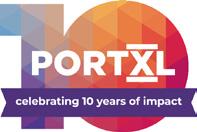
to our ability to harness industry expertise, fostering valuable connections for start-ups in Cyprus and beyond.”
The 10 th anniversary of PortXL also represents the opportunity to refine the role of the accelerator in the entire innovation ecosystem. “Should we continue down this path or expand into other areas? The answer to these questions is up in the air, but we are at an ideal time to consider what we want to do in the next decade,” shares Pullens. For PortXL’s CEO, there is no single definition of innovation, as it depends on how companies perceive themselves. With our accelerator, the approach is based on open innovation because PortXL firmly believes that there is a world out there full of ideas and learnings that can benefit many players in the industry.
Shipskart (2018). Shipskart’s mission is to revolutionize the procurement/supply chain in the maritime and offshore industry by implementing cutting-edge technological solutions, thus contributing to the seamless and smooth operations of vessels and installations and driving new standards of efficiency and transparency. Shipskart is a supply chain e-commerce solution for the maritime and offshore domain. ‘Clicked at Sea – Delivered at Shore,’ Shipskart is an online marketplace where vessels, vessel owners/managers, ports, and shipyards can purchase marine products, consumables, equipment and service products required for uninterrupted and efficient operations.
Psiori (2022). Psiori developed a crane AI, which provides 3D scans of the inventory and environment and cameras detecting the position of the load. Their technology allows the crane operator to avoid mistakes or train for special occurrences.
Mythos AI (2023). Mythos AI was founded by engineers from the Silicon Valley self-driving car industry and is seeking to apply lessons learned in that sector to develop products for vessel operators. The start-up has developed advanced pilot-assist systems for vessels and the unmanned survey vessel Archie.
QuinteQ (2022). QuinteQ launched a pilot project in April 2024 focused on the application of sustainable energy solutions in the port industry. The flywheel developed by QuinteQ Energy is specifically designed to cope with the peaks and troughs in the port industry. The project plays a key role in enabling port electrification in the Port of Rotterdam, as it not only allows for more efficient use of energy but also to expand their demand for electrical power without the need to modify their network.
PortXL was founded in 2015 in Rotterdam, with the vision of cultivating a spirit of innovation within the global maritime industry. PortXL accelerates the adoption of innovative technologies in port regions globally, with a focus on addressing sustainability, decarbonization, and energy transition challenges within the maritime, logistics, and process industries. To achieve the mission, PortXL is building and fostering an ecosystem of start-ups, scale-ups, corporate partners, and mentors – all change makers, creative thinkers, and problem solvers who work collaboratively to disrupt the status quo. Visit portxl.org to uncover more.

by Stelios Koukouvios, Maritime Strategy & Growth, Simulation, Ports & Human Factors, FORCE Technology
The next generation of maritime training has arrived in Europe, setting a new benchmark for realism, safety, and even sustainability. Capital Ship Management Corp., in collaboration with FORCE Technology, has launched Europe’s first Extended Reality Full Mission Bridge Simulator. Planning to be installed at Capital Group’s advanced new training centre on the Greek Chios Island, the simulator, based on the SimFlex4 platform, represents a significant leap forward in the use of immersive technologies for ship handling and navigation training.
Extended Reality (XR) is an umbrella term that encompasses Virtual Reality (VR), Augmented Reality (AR), and Mixed Reality (MR). In the context of maritime simulation, XR enables the creation of fully immersive training environments where real-world physical elements, such as bridge controls, are seamlessly integrated with high-fidelity virtual scenes. Trainees wear headsets that place them inside this digital world, interacting with actual equipment while responding to virtual scenarios. The result is a highly realistic and engaging training experience that closely mirrors live ship operations.
This shift of maritime simulators – from screen-based visualisation to full-immersive environments – could reshape how training is delivered and how effective it can be. It is enabled by a combination of mature simulation expertise, advances in hardware and graphics capabilities, and a growing need to train crews more efficiently, sustainably, and collaboratively.
Tech’s pedagogical value
The roots of FORCE Technology’s XR innovation can be traced back to
Australia, where a cutting-edge SimFlex4 AR simulator is now operational at Smartship Australia in Brisbane. This facility, renowned for pilotage training and advanced ship-handling simulation, is home to the most advanced maritime AR simulator in the Southern Hemisphere. Developed in partnership with FORCE Technology, the Smartship upgrade enables a significant leap in training fidelity. It supports port development, risk analysis, and pilot training for clients across Australia and Asia-Pacific. The simulator is also compatible with FORCE Technology’s new DEN-Mark2 mathematical model, offering improved hydrodynamic performance and line force accuracy, which is key when training for tug operations or advanced mooring scenarios.
Smartship’s AR platform demonstrates the technology’s pedagogical value. It shows how immersive, sensor-rich environments can strengthen trainee confidence, promote operational awareness, and deliver better learning outcomes. Smartship Australia broke new ground in AR, and Capital’s simulator is doing
the same, this time with the first use of XR in a full green screen environment and embedded real-world bridge equipment. The result is that to the trainee wearing a headset, the visual scene is seamless.
Scheduled to open this year, Capital’s training centre on Chios Island will act as a hub for maritime safety, sustainability, and operational excellence. The XR simulator installed there is provided by FORCE Technology and integrates advanced XR headsets, real bridge equipment, and a cohesive virtual environment enabled by green screen technology used in everything from big-budget summer blockbusters to YouTube shorts and podcasts.
The facility is a complete rethinking of how bridge operations are taught and practised. Designed to give seafarers a heightened sense of realism, the simulator allows users to move naturally within a 360degree green screen room while interacting with real hardware. It is equipped with FURUNO’s latest navigation systems, delivering a tactile experience that mirrors real bridge environments.

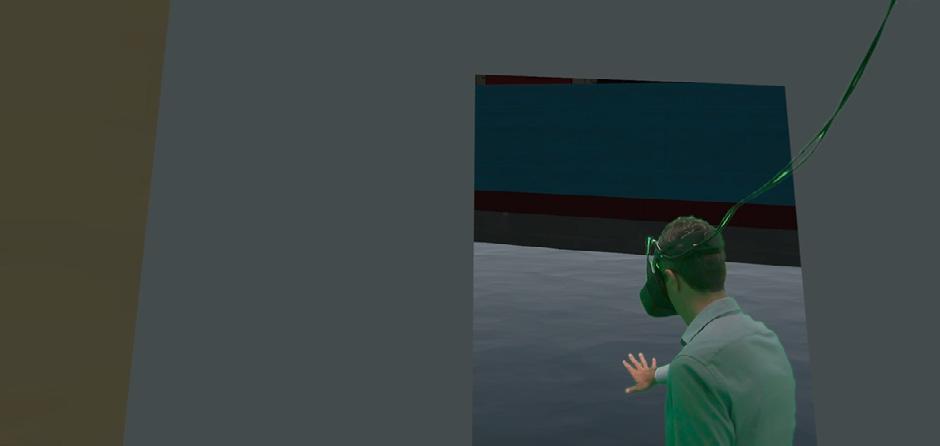

At the heart of the installation is FORCE Technology’s SimFlex4 simulation engine, known for its precision ship and environment modelling. By embedding physical controls directly into the virtual scene, the system achieves a level of immersion and responsiveness that traditional screen-based setups cannot match. Whether training for confined waters navigation, complex pilotage operations, or port approaches, bridge teams can experience scenarios that are as close to reality as current technology allows.
Importantly, this realism extends beyond the visuals. The system also facilitates collaborative training, with multiple users able to join shared simulation scenarios, even from remote locations, allowing for distributed team coordination and joint response exercises.
The key to this new level of immersion lies in the green screen approach. Instead of relying on multiple high-resolution monitors to create a panoramic simulation, the entire room is painted in subtly varied shades of green. This enables XR headsets to track movement and blend real-world equipment fluidly with the virtual seascape without the jarring visual artefacts typical of digital backgrounds.
With this setup, trainees see the virtual world all around them through the
headset: the ship’s bridge structure, waves, weather, and port infrastructure, but when they look down, they are interacting with real, tangible navigation controls. This eliminates the sense of detachment that can occur in conventional VR or mixed environments where the floor and walls behind or close to hardware can sometimes become part of the visual scene (think of when you see through your colleague’s blurred background on a video call). With the green screen, however, the real hardware becomes a natural part of what the trainee sees.
Traditional but high-fidelity modelling also plays a critical role in realism.
As FORCE Technology’s flagship simulation platform, SimFlex4 supports a wide range of mathematical and environmental models, including accurate representations of local port conditions and vessel hydrodynamics. The platform is continually refined with input from decades of research and operational data, making it a trusted tool for maritime authorities and ship operators worldwide.

From an operational perspective, the XR solution offers multiple advantages. Conventional simulator setups can require up to 20 monitors and an equal number of high-performance computers to run them. By comparison, the XR solution delivers a superior experience using fewer PCs and no external cameras. It significantly reduces the hardware footprint, lowers energy consumption, and simplifies IT support requirements. Over the lifecycle of the system, this translates into cost savings and a reduced environmental impact – factors that are increasingly important in modern maritime operations.
Another benefit is the potential for remote participation. While the current generation of systems allows external users to join as additional vessels in the scenario, future iterations aim to introduce full avatar presence, enabling remote bridge team members to appear virtually in the same room. It is an exciting development for global fleet operations and collaborative training.
The deployment of the SimFlex4 XR Full Mission Bridge Simulator on Chios marks a new chapter in European maritime training. It builds on FORCE Technology’s longstanding expertise in simulation design and pushes it into new territory. By combining XR immersion with tactile interaction with real equipment that blends perfectly into the visual scene, collaborative capabilities, and strong sustainability credentials, this new simulator provides a glimpse into the future of maritime training. It promises to produce betterprepared seafarers, more efficient training workflows, and ultimately, safer and more resilient operations at sea.
Through its work with Capital and Smartship, FORCE Technology is showing how innovation in simulation can have a real-world impact, supporting not only the professional development of crews but also the broader goals of operational safety and environmental responsibility. As new challenges continue to emerge across the global maritime sector, solutions like SimFlex4 and XR-based training environments – especially with green screen rooms – will play a central role in helping the industry adapt.
FORCE Technology, a tech consultancy and service company, helps others become technological and sustainable frontrunners for the benefit of society. Since 1940, we have helped organisations through major tech transformations: from rivets to welding; from the oil adventure to wind turbines; from analogue to digital. Learn more at forcetechnology.com how we can together contribute to defining the technological future!

by Fitzwilliam Scott
Ensuring high standards of hygiene aboard is critical to protect the health of crew members and passengers on commercial and cruise & ferry ships while maintaining smooth operations. With confined living and working conditions, the risk of infectious disease outbreaks and mold infestations is everpresent. These threats can lead to serious health complications, disrupt operations, and increase medical costs. Advanced technologies are becoming essential tools in reducing these risks, safeguarding crew and passenger well-being, and ensuring compliance with stringent maritime health regulations.
Outbreaks of gastrointestinal illnesses and airborne pathogens can severely impact operations – be they offshore, commercial shipping, or passenger. With high-density living and working environments, the maritime industry requires robust, science-backed hygiene solutions that minimise risk and ensure compliance with stringent health regulations.
VIKAND, a global leader in maritime healthcare and sanitation, is offering one such solution in collaboration with Pyure Dynamic Protection® – an innovative air and surface purification system that proactively combats both norovirus and black mold, safeguarding on-board environments and improving overall vessel hygiene.
The diagnosis
“The Pyure system is an intelligent, proactive solution designed to mitigate the financial and operational risks associated with norovirus outbreaks,” explains Mattias Hallberg, Director, Technical Solutions, VIKAND. “By implementing continuous air and surface sanitation, commercial and offshore operators can significantly reduce the likelihood of illness, protect their crews, and safeguard business continuity.
What differentiates Pyure is the evidence behind its effectiveness – our international certifications, research studies, and real-world applications prove this technology works.”
Stachybotrys chartarum , commonly known as black mold, presents another significant challenge for the maritime industry. It thrives in the damp, humid environments found on ships, causing respiratory issues, allergic reactions, and long-term health complications. Left unchecked, mold infestations can compromise not only crew health but also vessel safety. Dr John Howe, Medical Director, OneHealth by VIKAND, emphasises the health risks associated with mold exposure, “Mold produces allergens, irritants, and toxic substances known as mycotoxins, which can trigger allergic reactions and exacerbate respiratory issues. People with weakened immune systems or chronic lung diseases are at a higher risk of developing infections from mold exposure. Additionally, some studies suggest that early exposure to mold may increase the risk of developing asthma in children, particularly those with a genetic predisposition.”
The treatment Pyure’s hydroxyl-generating technology provides an active and continuous approach
to sanitation by replicating nature’s aircleaning process. Hydroxyls are highly reactive molecules naturally present in Earth’s atmosphere that neutralise viruses, bacteria, mold spores, and odours. Unlike conventional air purifiers that merely trap airborne contaminants, Pyure’s system actively destroys pathogens, making it a superior solution for maintaining clean and healthy environments on board vessels.
Scientific testing has demonstrated the effectiveness of Pyure’s technology: it achieves a 4-log (99.99%) reduction in murine norovirus on surfaces within 360 minutes and a 5-log (99.999%) reduction of airborne RNA viruses within 90 minutes. The system also significantly reduces airborne mold spores, with 99.9% elimination within 30 minutes and undetectable levels within an hour and a half. On surfaces, mold contamination is 99.9% eliminated within 48 hours. Recognised for its efficacy, Pyure is an FDA-registered Class II medical device and has also received the European Centre for Disease Prevention and Control (ECDC) Class I medical device certification.
“Independent laboratory studies confirm that Pyure’s air and surface purification technology significantly reduces norovirus




and other pathogens in the air and on surfaces,” says Dr Connie Araps, Scientific Officer at Pyure. “It reacts so quickly with airborne pathogens that transmission from person to person is minimised, as reported by Pyure in the ASHRAE Journal (March 2024). By continuously improving air quality, Pyure supports a proactive approach to hygiene management, reducing the risks associated with viral outbreaks in high-traffic environments like ships.”
The purification system has already demonstrated great success in real-world applications and is currently installed aboard over 100 vessels in the cruise, yacht, and offshore sectors. One notable case involved a 140+ metre-long yacht
struggling with severe mold infestations. After installing Pyure devices directly into the vessel’s air handlers, airborne mold spores were eradicated within weeks,

ensuring a cleaner and healthier environment for crew and passengers.
“By proactively addressing mold with our Pyure Dynamic Protection® system, VIKAND is setting a new standard in maritime health and safety,” states Hallberg. “This technology not only removes existing mold but prevents future growth, offering peace of mind to vessel operators and healthier environments for those on board.”
Pyure’s air purification solution also offers significant operational advantages. It minimises the risk of disease outbreaks, ensuring business continuity, and reduces crew sick days, thus improving workforce efficiency. The system supports compliance with health and safety regulations while lowering operational costs by enhancing air recirculation and reducing resistance. Additionally, it decreases carbon emissions through improved air quality management and requires minimal upkeep, with quarterly cleanings and annual optic replacements.
“As norovirus and other infectious threats remain a challenge for the maritime industry, investing in proactive solutions such as Pyure Dynamic Protection® is not just a health measure – it’s a strategic decision that safeguards operational integrity and financial stability,” underscores Ronald Spithout, Managing Director, OneHealth by VIKAND. He furthers, “By prioritising advanced air and surface purification, ship operators can significantly reduce the risk of outbreaks, ensuring that crews remain healthy and operations continue uninterrupted. The financial impact of disease outbreaks and mold-related maintenance can be substantial, so having a proven, sciencebacked solution such as Pyure in place is an investment that pays off in both safety and efficiency.” Spithout sums up, “This technology represents a fundamental shift in how the maritime industry approaches hygiene, moving from reactive containment to proactive prevention.”
VIKAND provides proactive total healthcare solutions for the shipping, cruise, yachting, and offshore industries. Crew members and guests alike trust VIKAND to provide expert medical care, telemedicine, risk mitigation, and other valuable health services, and the world’s leading maritime companies rely on us to protect their most important asset at sea – people. Visit vikand.com for more information about VIKAND’s Pyure Dynamic Protection® system.

Inspired by nature and trusted to clean, The Pyure Company are worldleading air purifying technology innovators. Pyure’s commercial air purifiers are trusted worldwide to safely purify indoor air and surfaces, creating healthier environments for everyone while saving energy by bringing the power of the sun indoors. Check pyure.com to learn more (incl. the science behind Pyure Dynamic Protection®).




JULIAN GALVIS
VP of Sales and Marketing, Tideworks Technology
After over seven years at Identec Solutions, first as VP of Sales for Americas and then in the role of VP Sales & Regional Manager Americas, Galvis took up a new stint with Tideworks. A BBA in Business Management & International Business from Huntingdon College, he also worked for ABB as Sales Director, did consultancy gigs for Navis and Beacon Analytics, as well as worked for Maersk (Import Coordinator, Assistant Manager) and APM Terminals (Assistant Marine Manager).

MEELIS KOMPUS
Communications Director, Tallink Grupp
Kompus comes from the Estonian Ministry of Culture, where he was in charge of communication and international cooperation for the past 10 years. Among others, he also served as a board member of the Vanemuine Theatre and the Estonian Philharmonic Chamber Choir as well as chairman of the board of the Estonian Theatre for Young Audiences. Kompus holds a master’s in Cultural Management from the University of Tartu and a degree in directing from Tallinn University.

PATRICK MATTSSON
CEO, Kvarken Ports Umeå
The Swedish part of the joint port authority with the Finnish Vaasa has a new chief exec, up to date, its Deputy CEO. Mattson has been with Kvarken Ports since the spring of 2022, starting as Site Manager. Earlier, he was for over a decade with SCA Logistics, first as Operating Manager and then Agency and Forwarding Manager. Mattson also worked for SCA Transforest as an Operating Manager.

MATHIAS WEISMANN POULSEN CCO, APM Terminals Nordic
With over 16 years of experience within the Maersk Group, including recent years as Commercial Manager at APM Terminals in Aqaba (Jordan), Poulsen will now develop the commercial strategy and strengthen customer relationships in the Nordics. He holds three diplomas from Copenhagen Business School, a bachelor’s in Business & Computer Science, a master’s in Business & Development, and an Executive MBA in Shipping & Logistics.
HENRIK MUNCH JENSEN
CPO, Port of Aarhus
The Danish seaport’s CFO, a position he occupied since 1991, has been entrusted with the new role of Chief Project Officer. Munch Jensen joined the Port of Aarhus back in 1983. He holds an MBA in Finance from Aarhus University. As CPO, Munch Jensen will work on strategic infrastructure and development projects. “I am delighted to have the opportunity to work with something that in many ways can become defining for the future of the Port of Aarhus,” he said.
SANTERI LAAKSO
CFO, Finnlines
Besides becoming the shipping line’s new Chief Financial Officer, Laasko has also joined the company’s Executive Committee. He started working for Finnlines in the summer of 2001 as Assistant Controller, levelling up over the years (Controller, Business/Chief Controller, Corporate Business Controller) to become Head of Group Finance in 2011. In the new role, Laakso will assume responsibility for Group Finance and Treasury, Group Analytics and Business Controlling, Group IT, and Group Purchasing.
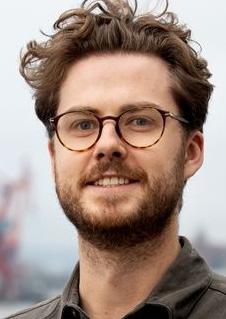

AXEL MEHLBERG
Project Manager, Port of Gothenburg
Mehlberg, a Uppsala University alumnus in engineering and industrial leadership & innovation, is no stranger to the Swedish seaport, having already worked as a consultant there over the past year. In his new role, Mehlberg will focus on property projects and gradually take on construction projects as well. He will play a key role in driving development initiatives, contributing to the continued growth and improvement of the port’s infrastructure.
JAVIER SUÁREZ Managing Director, KNUD E. HANSEN
The ship design experts from the Danish Elsinore have chosen its current Director of Operations (since early 2017) to lead the company. A Naval Architect from Universidad Politécnica de Madrid, Suárez was earlier with Voith Turbo (as VP Marine Americas in the USA and Sales Manager in Germany), Huelva and Sevilla Shipyards (Project Manager, Technical Commercial Director, Commercial Director), DNV (Surveyor), and Gondan Shipyards (Quality Manager).




Overview of products, infrastructure, Overview of products, infrastructure, services, and many more greenstuff services, and many more greenstuff in one place – on your wall, in one place – on your wall, computer, or phone! Plus the digital or phone! Plus the digital BALTIC GREEN MAP BALTIC GREEN MAP CATALOGUE with plenty of with plenty of wholesome details! wholesome details!







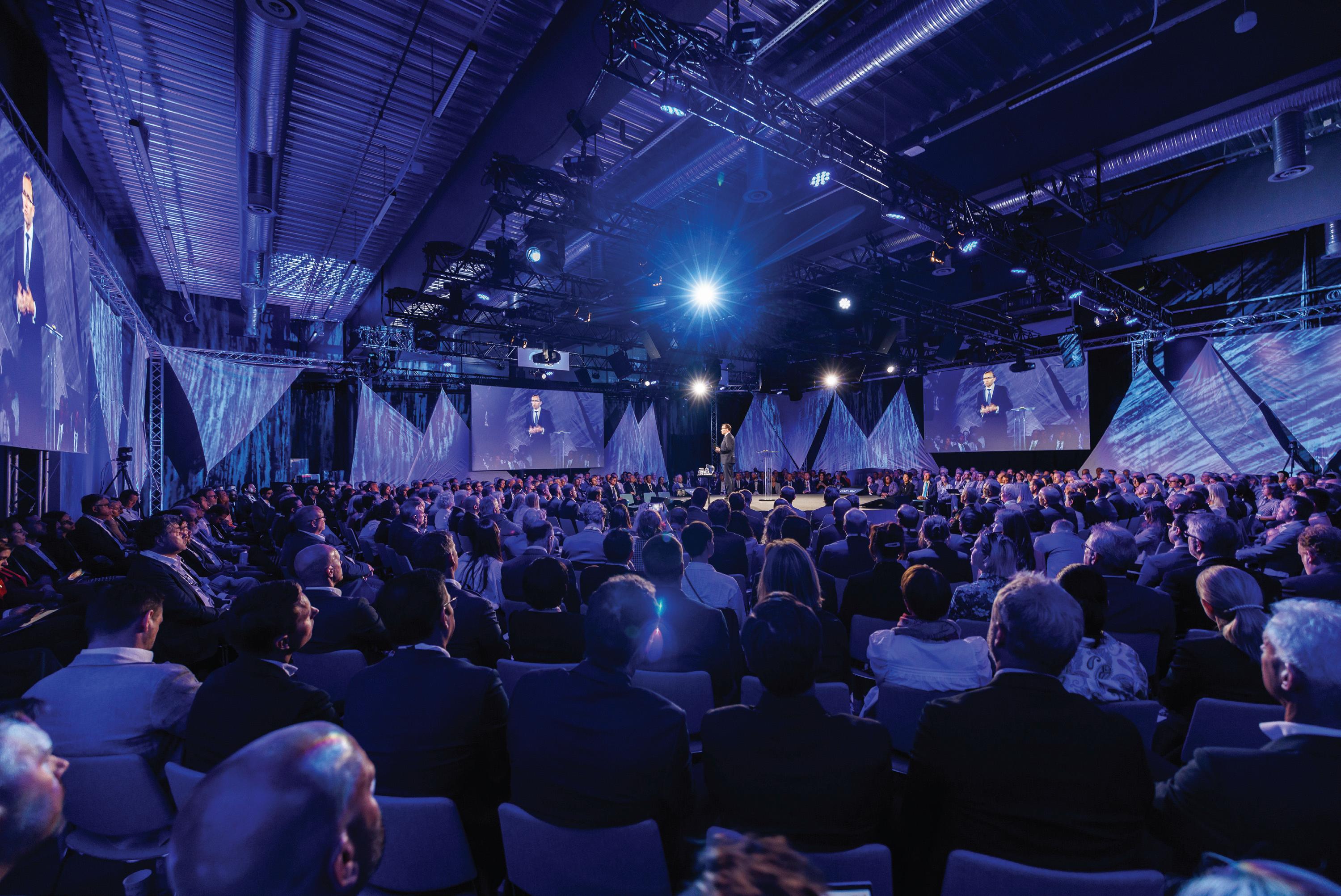








CALL FOR SPEAKERS OPENS IN APRIL MEMBER REGISTRATION OPENS MAY 1
Interferry2025 will be held at the Hilton Sorrento Palace Congress Center. Located within the conference hotel – the Hilton Sorrento Palace – the Congress Center will be a fantastic venue. As always, our event will feature topical speakers and sessions; ferry leaders panels; outstanding networking opportunities; and a technical tour. Sponsors and exhibitors will enjoy a large exhibition area in which to display their products and services to conference attendees For the latest info check the conference website, follow our social media and subscribe to our mailing list.




“Interferry invites delegates to Interferry2025 as we return to the Mediterranean region. Join us for our 49th Annual Interferry Conference in Sorrento, Italy from October 4 – 8 hosted by the Grimaldi Group!”
Mike Corrigan – CEO, Interferry
